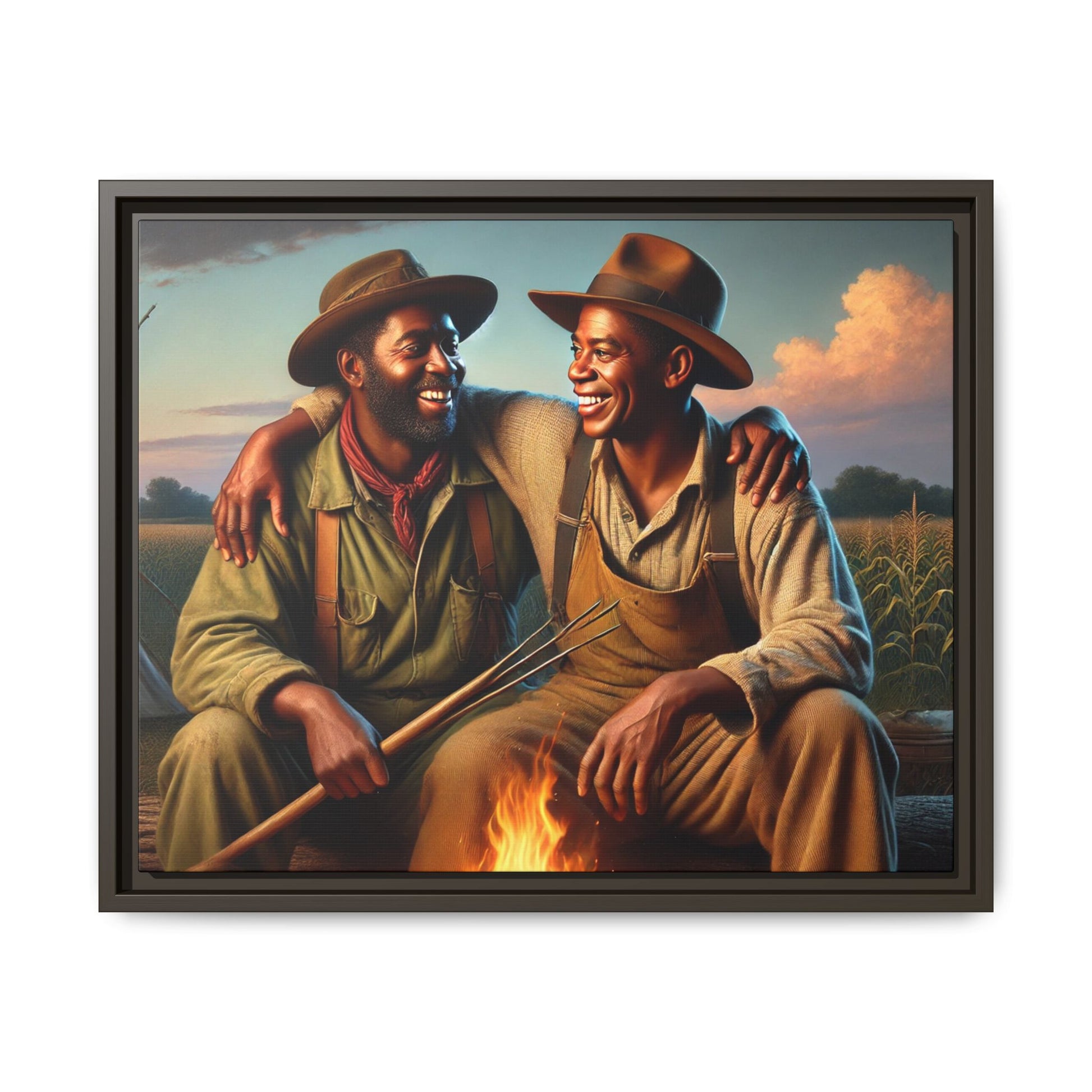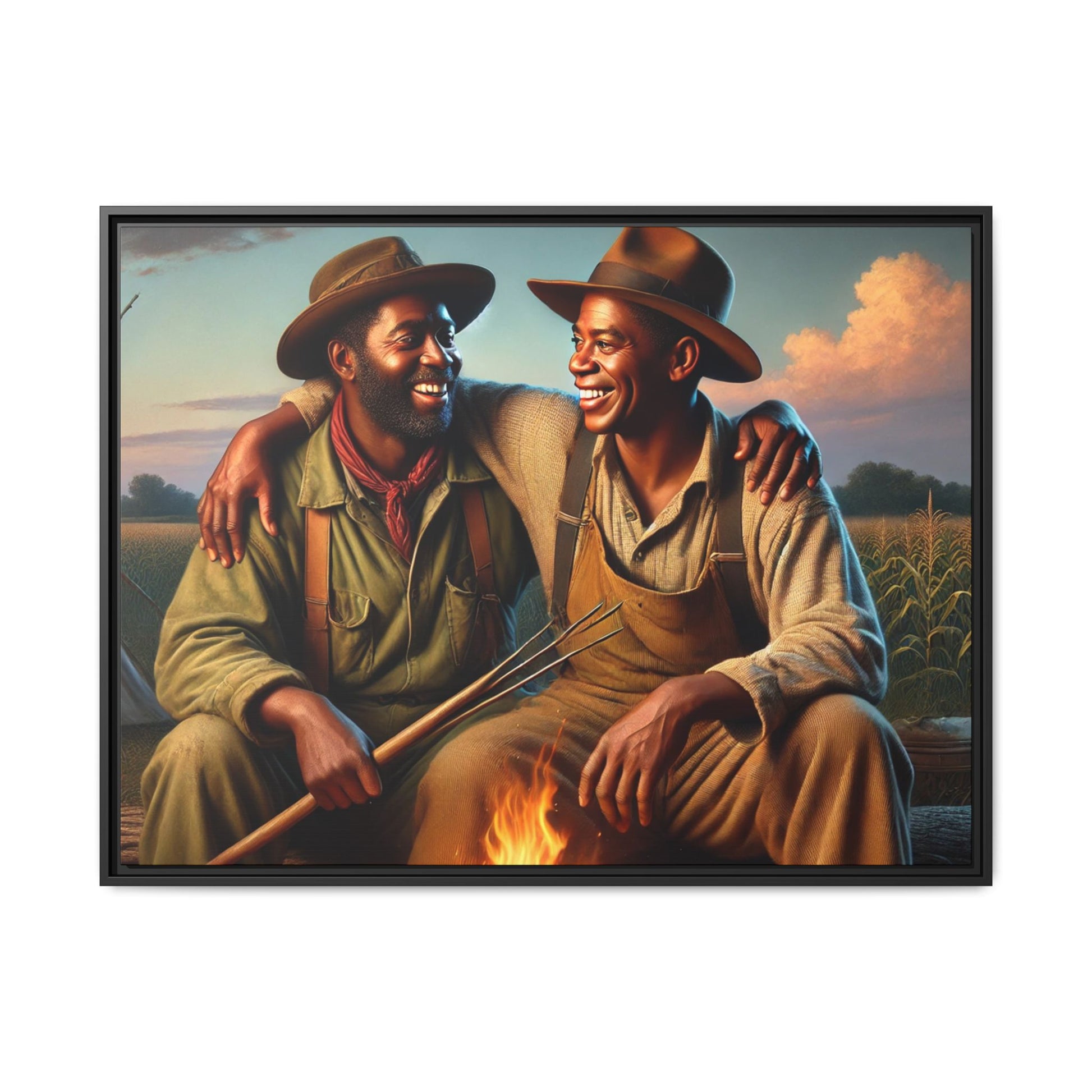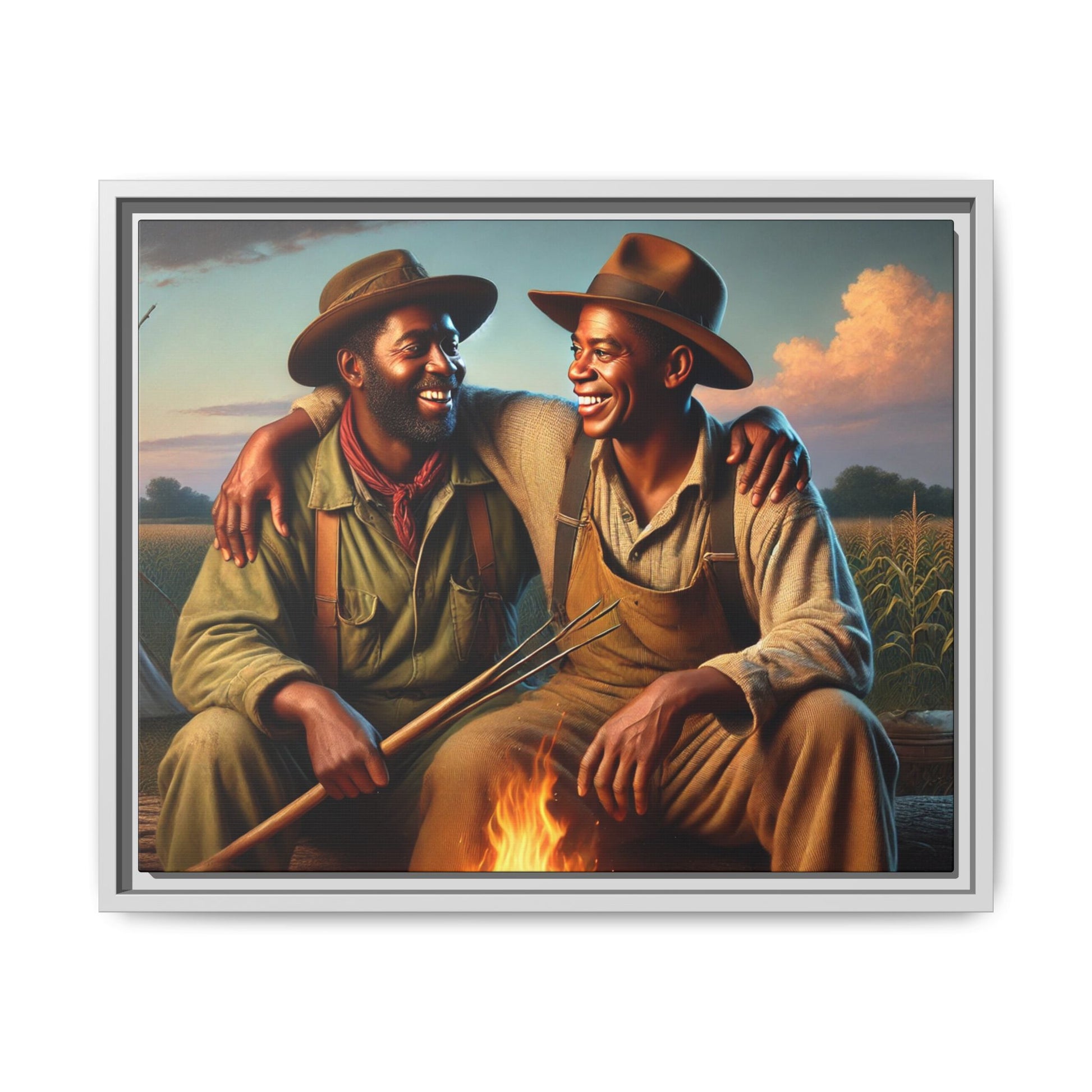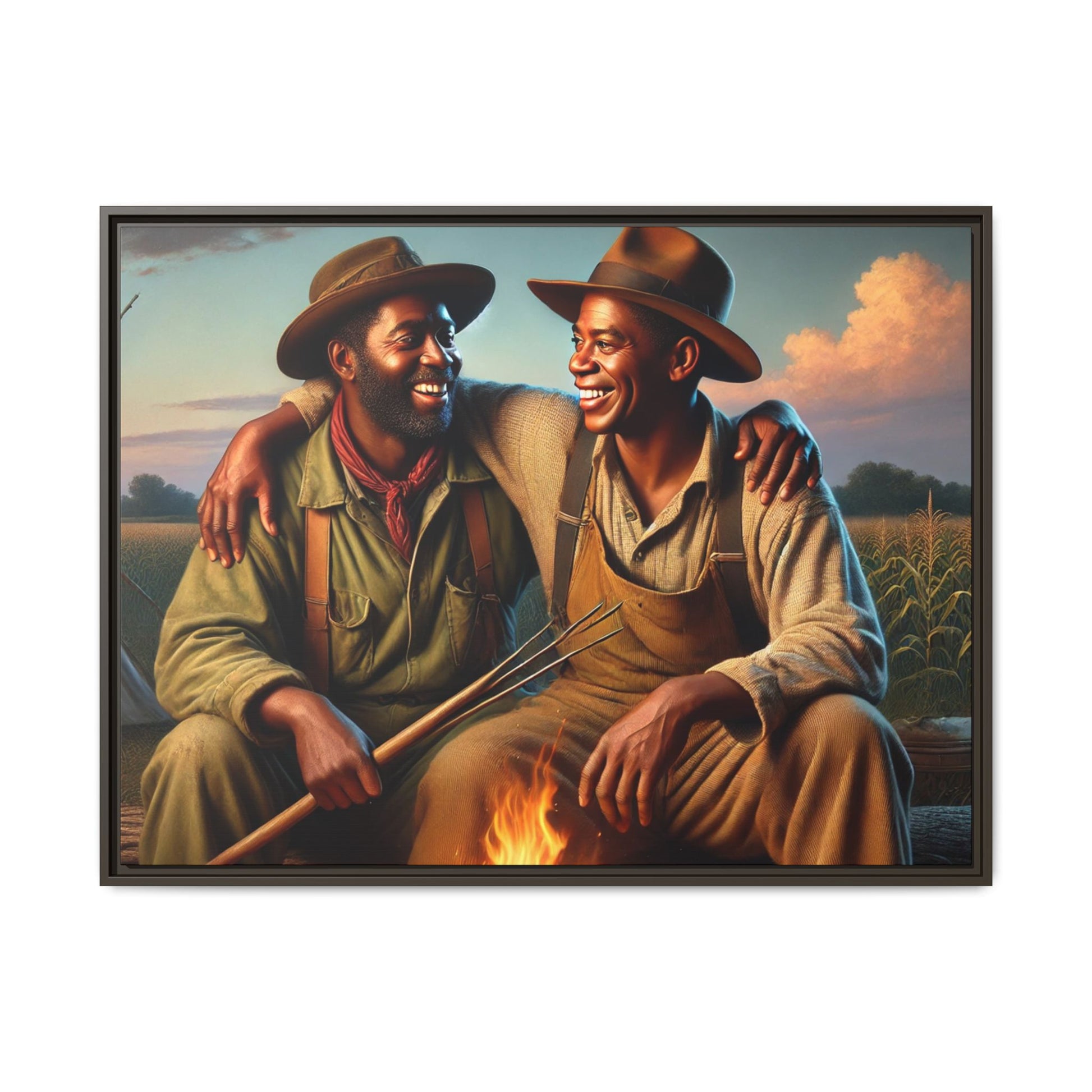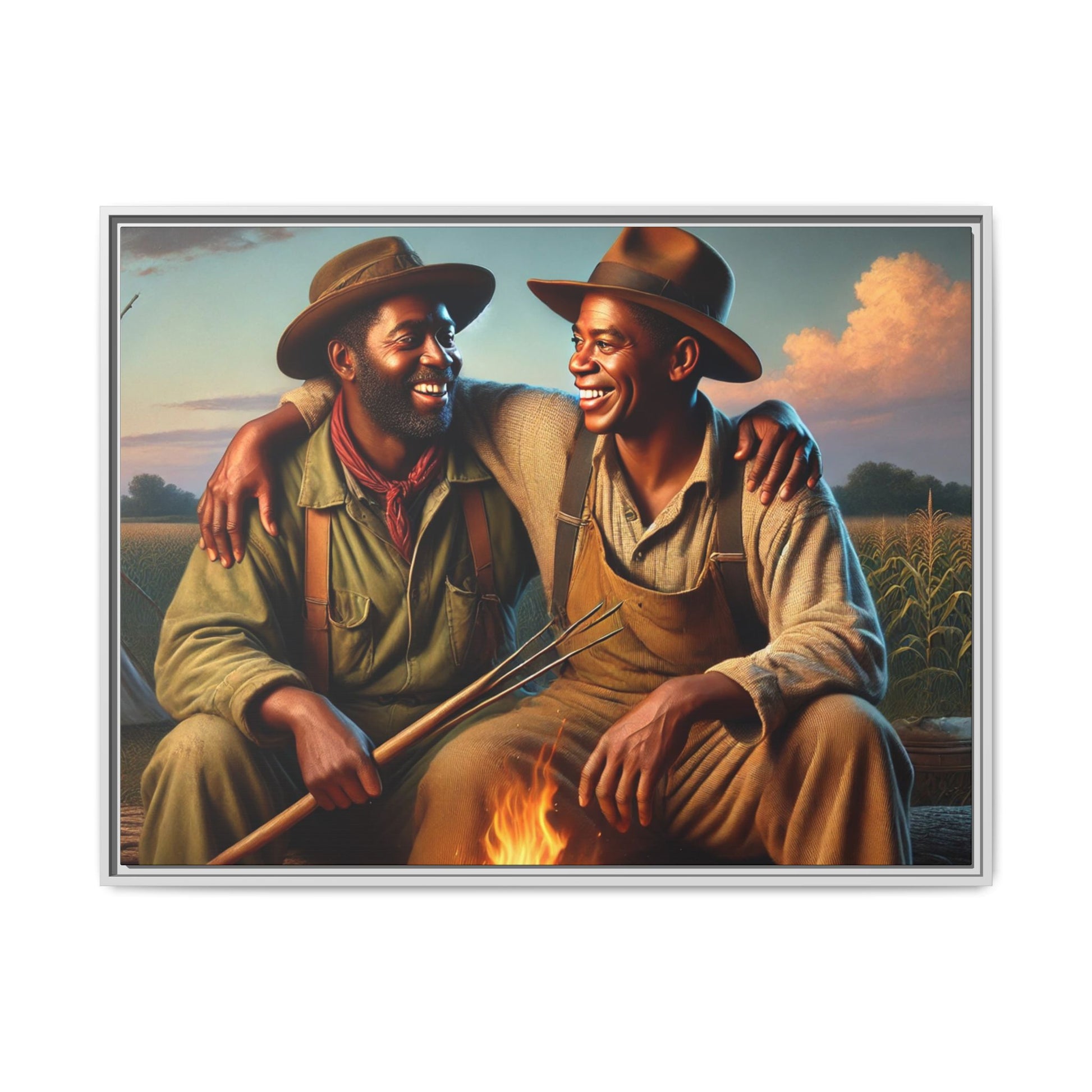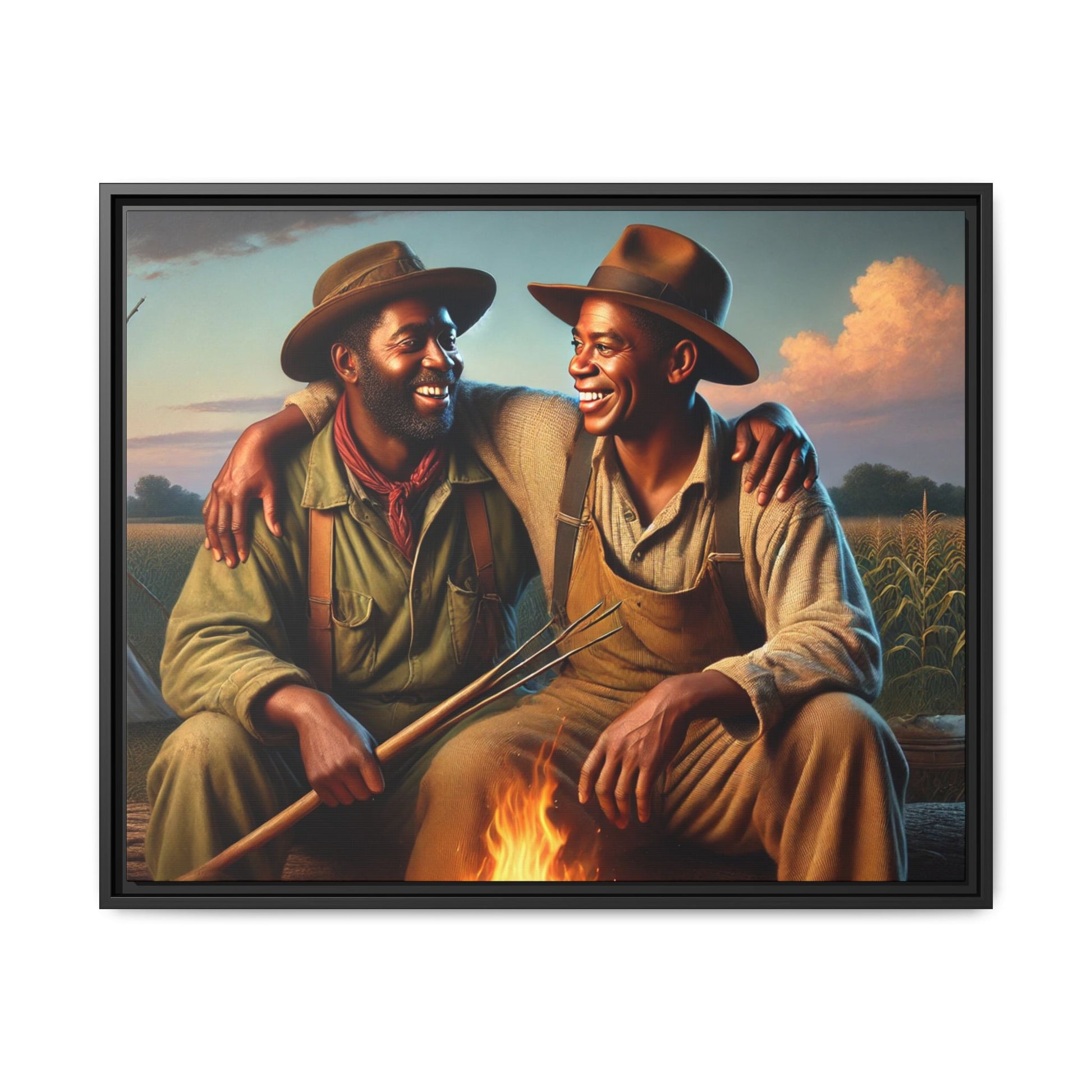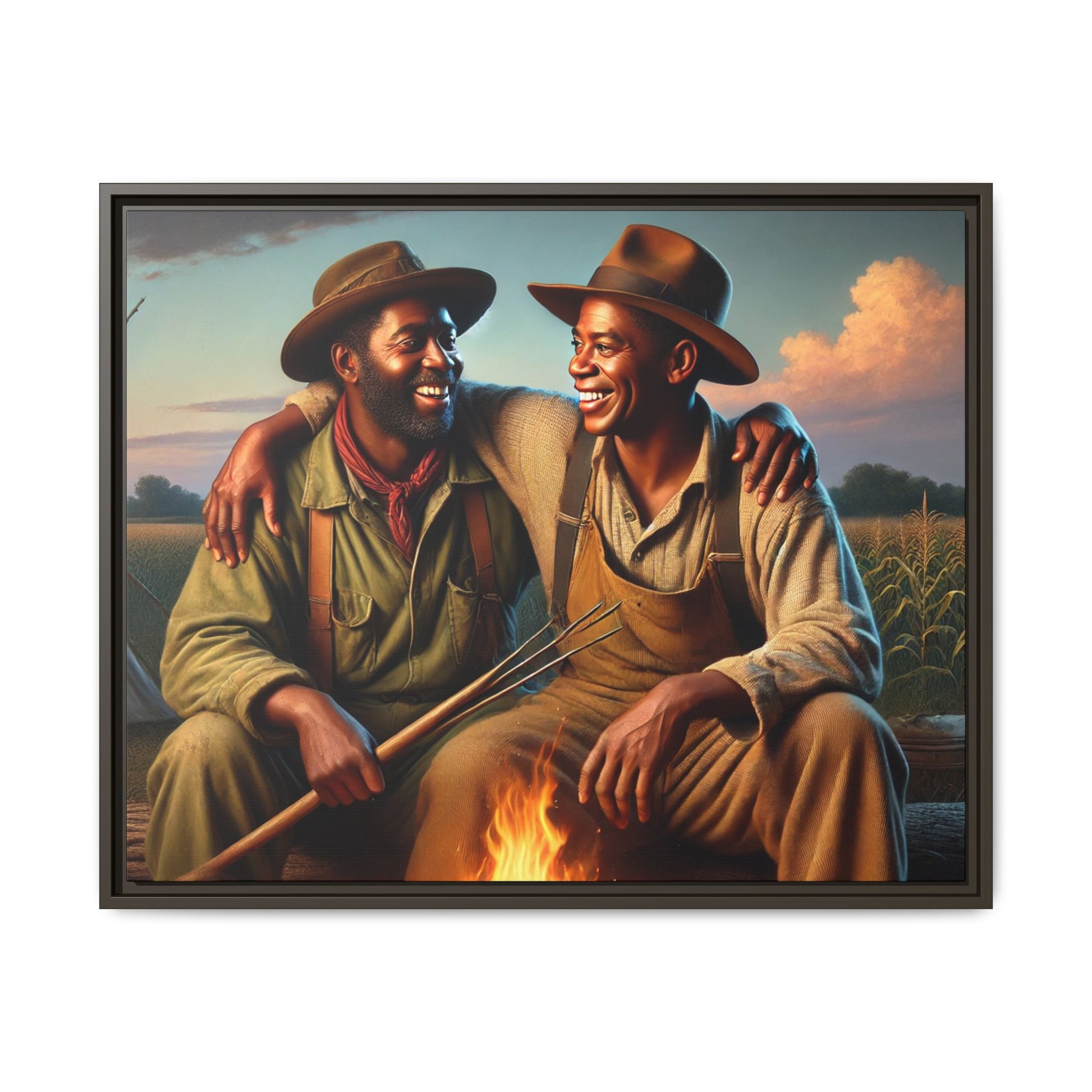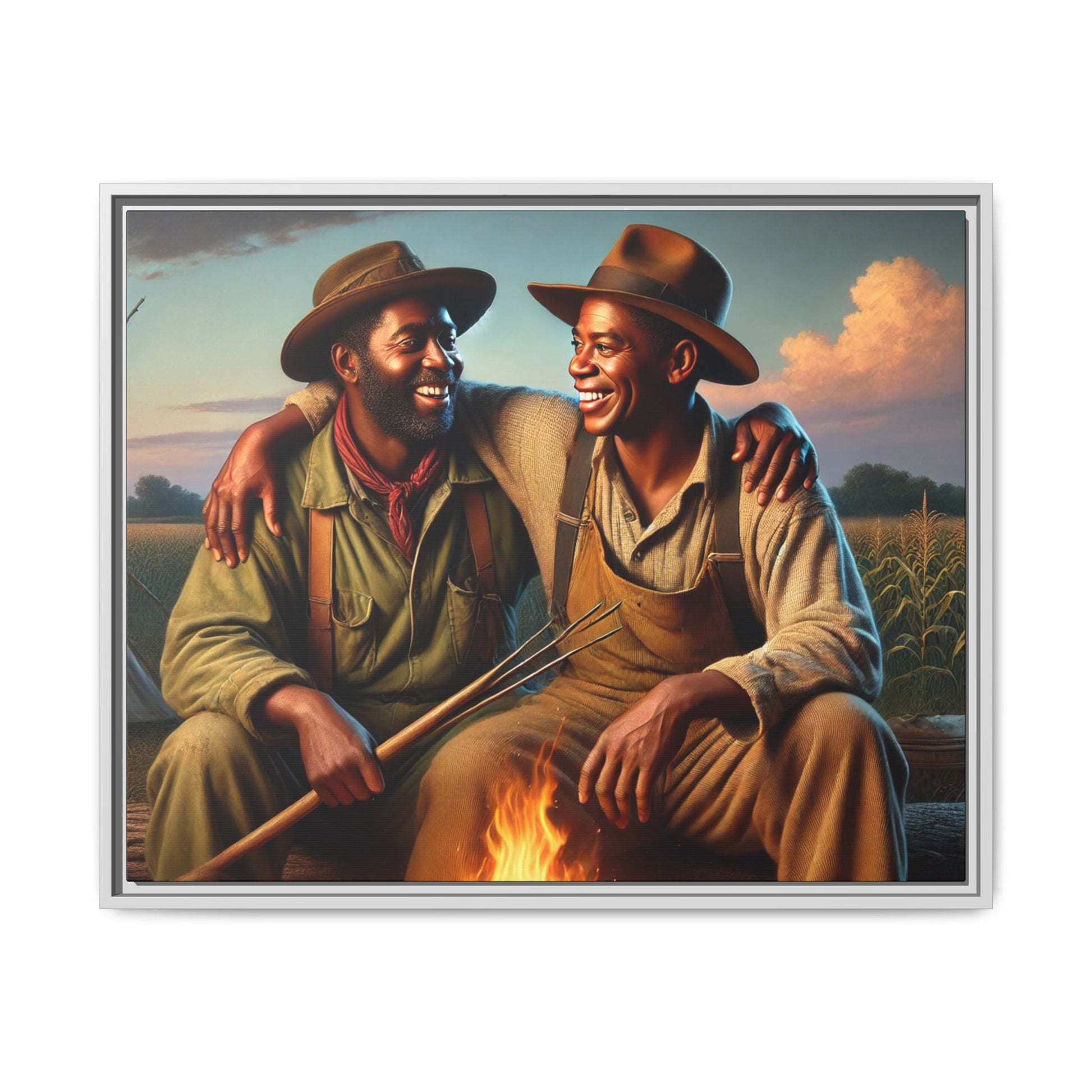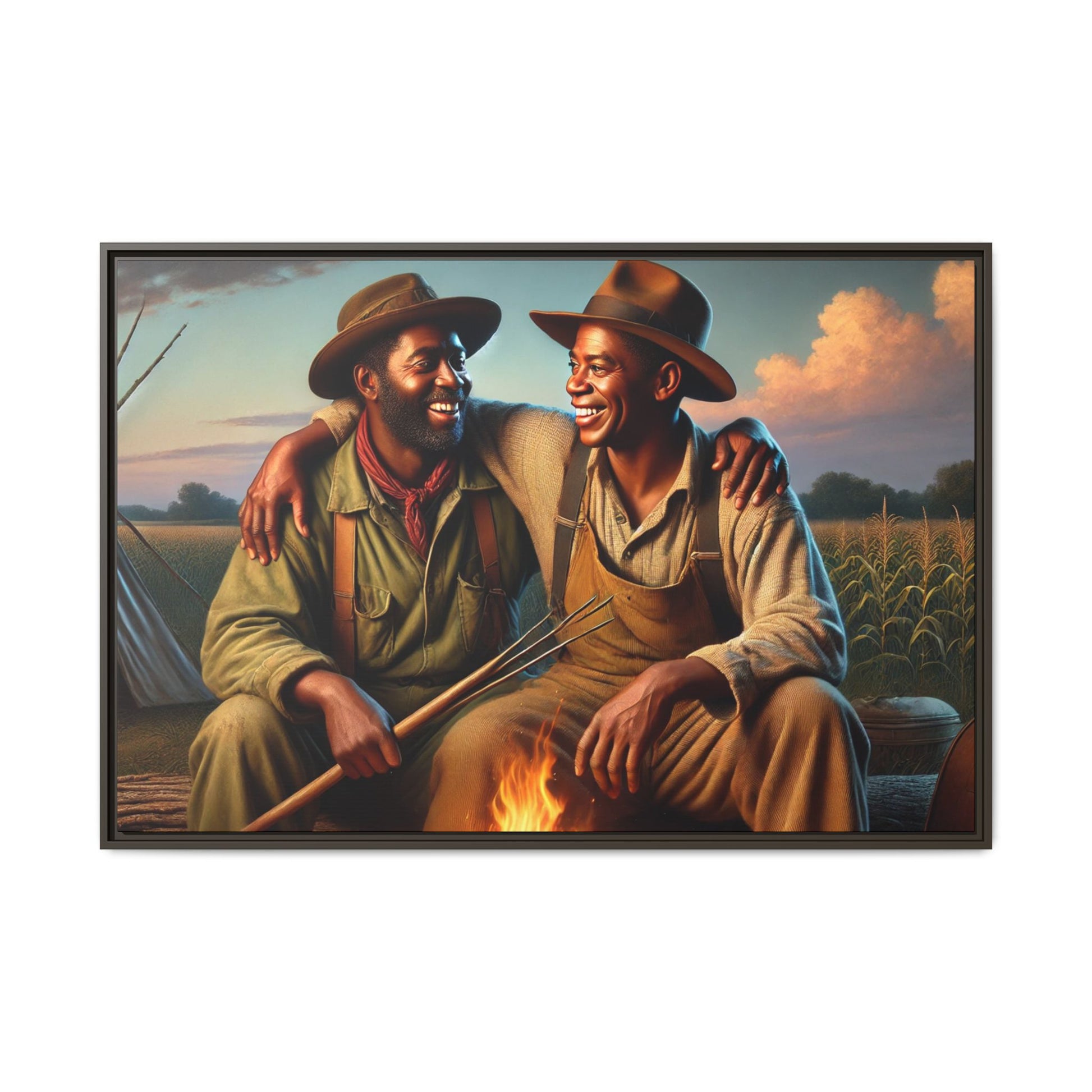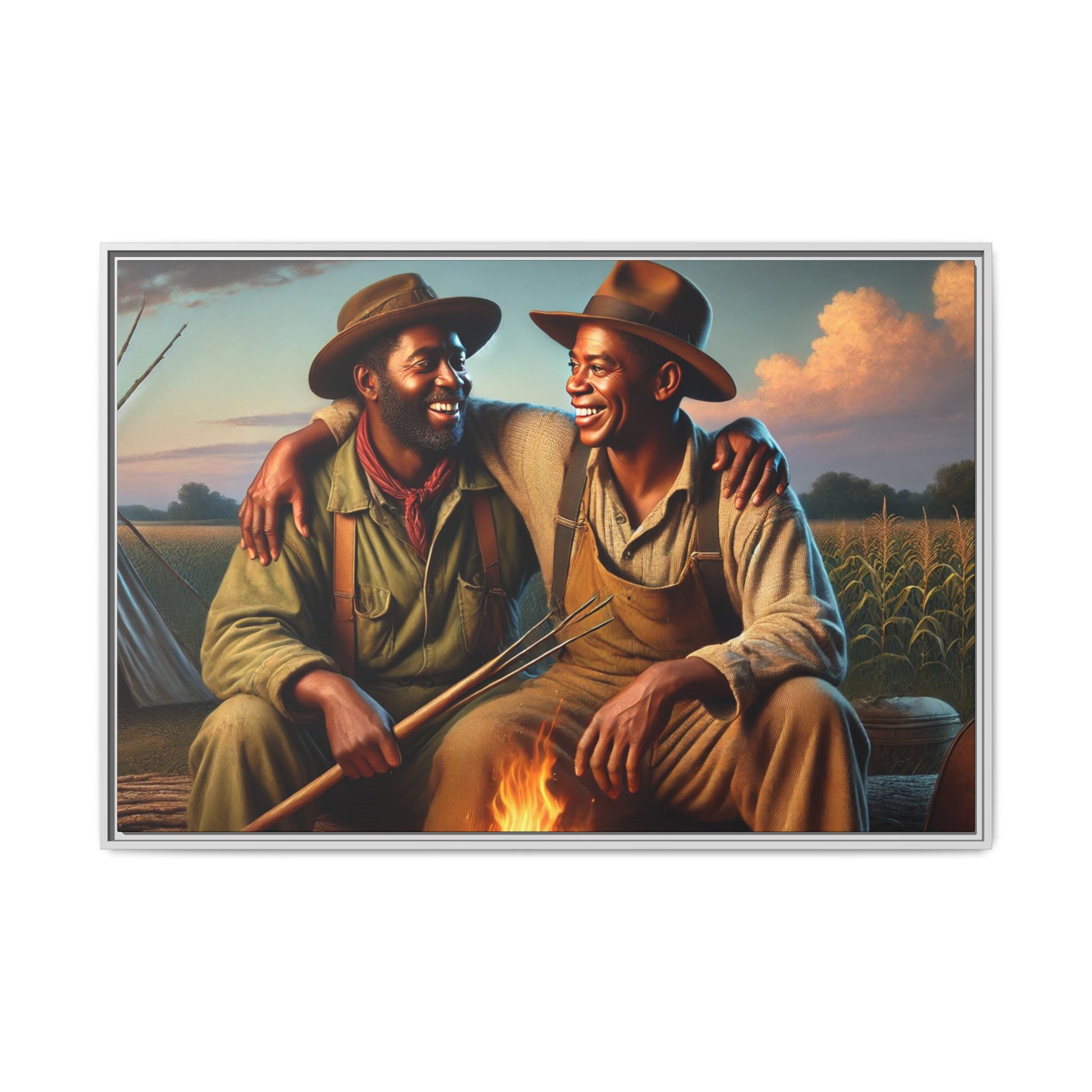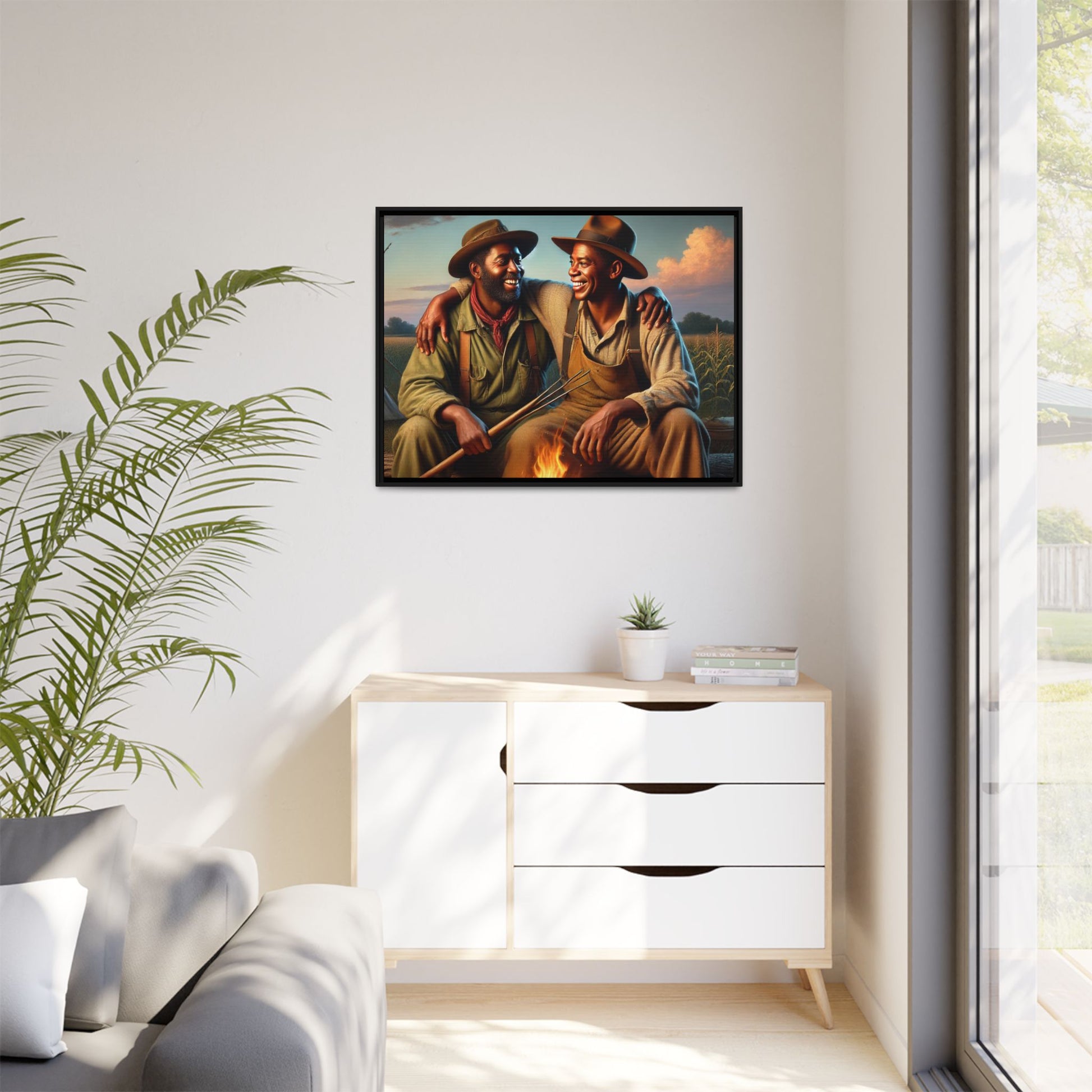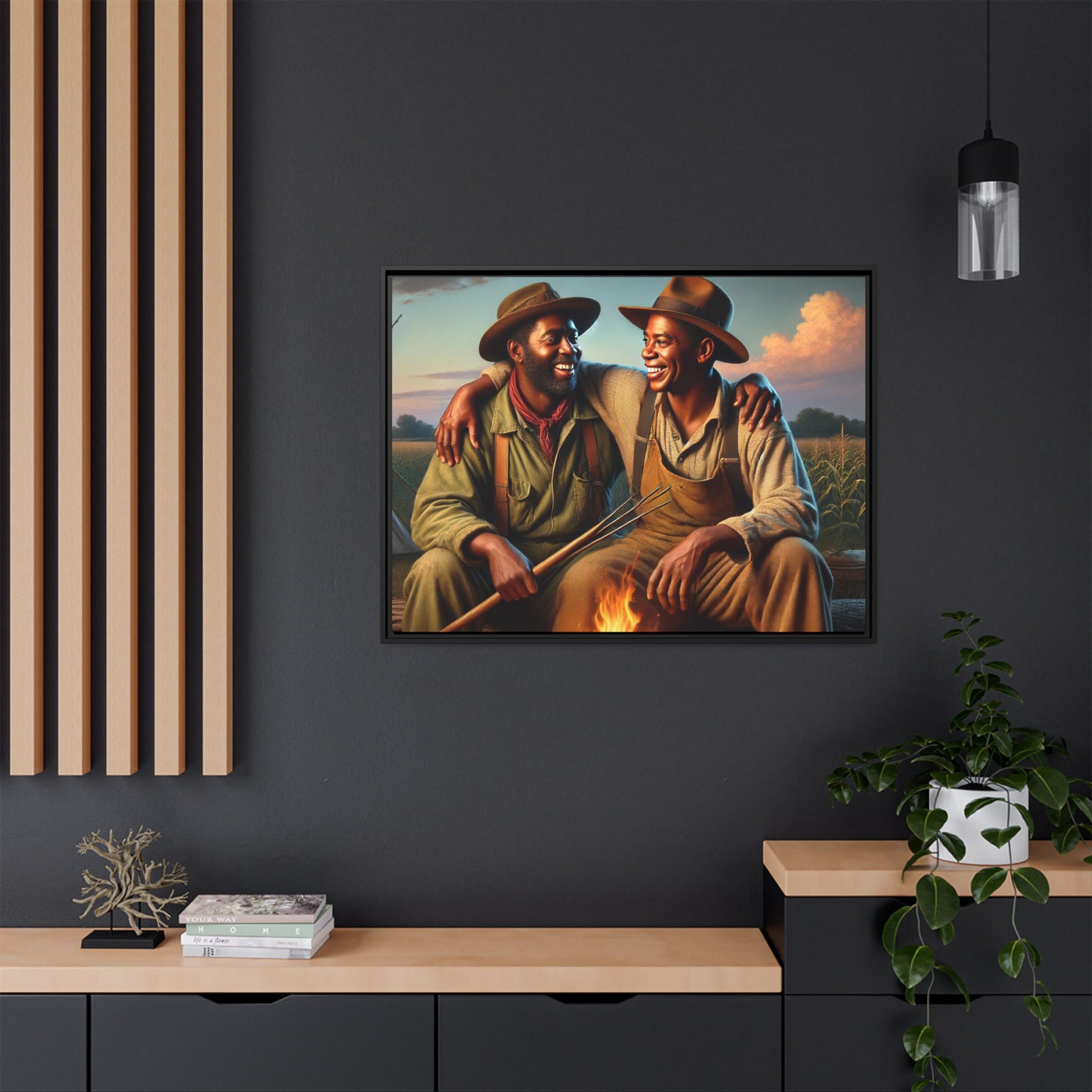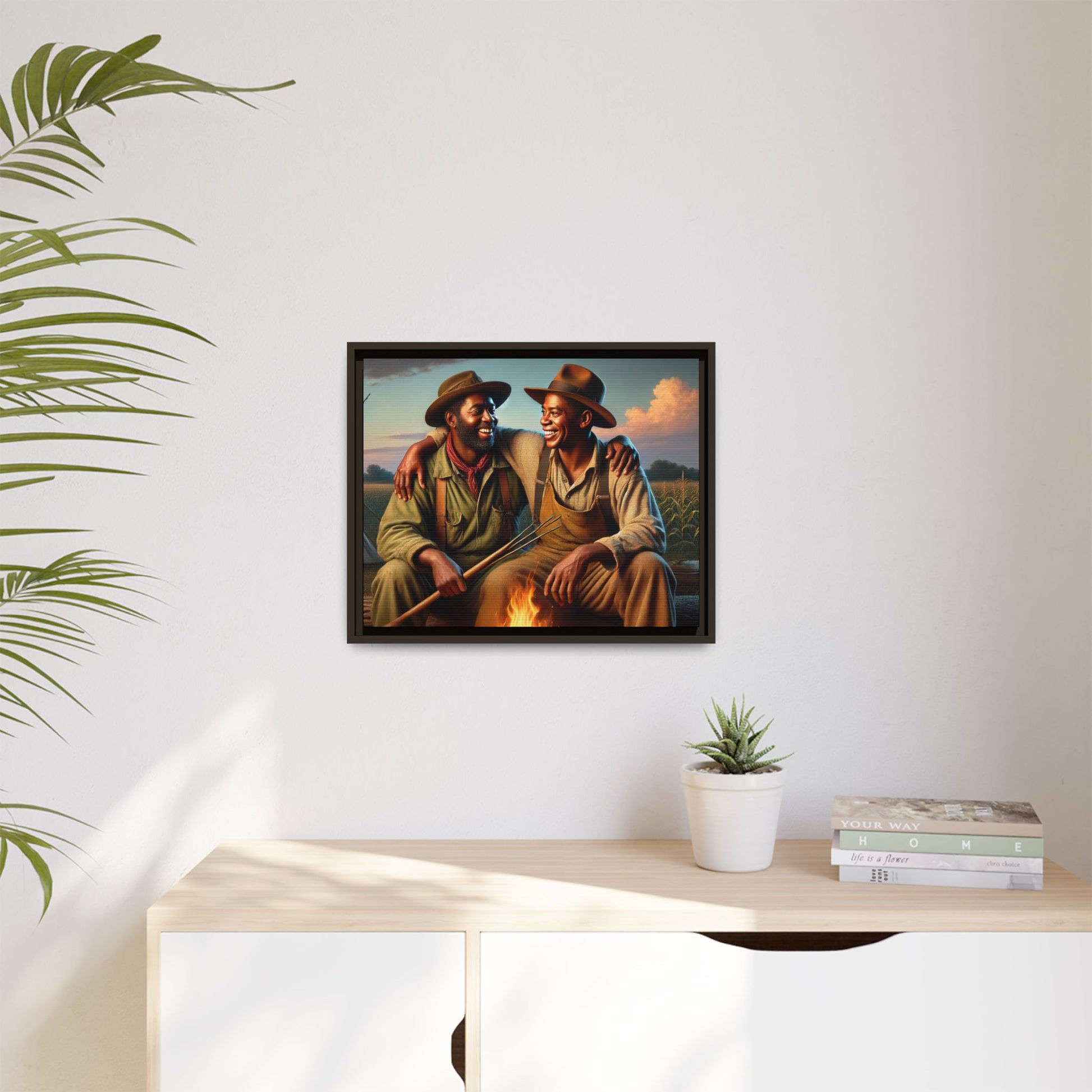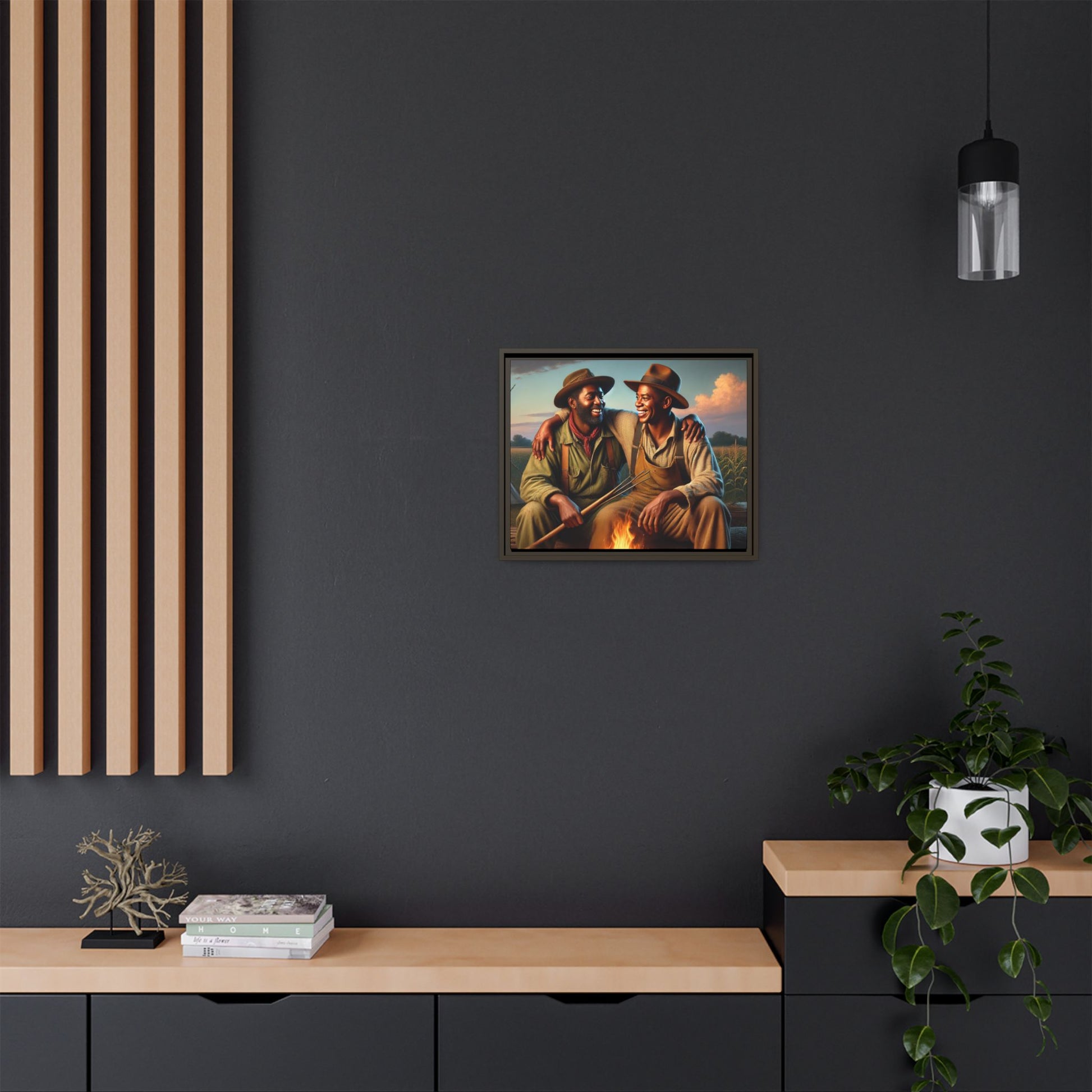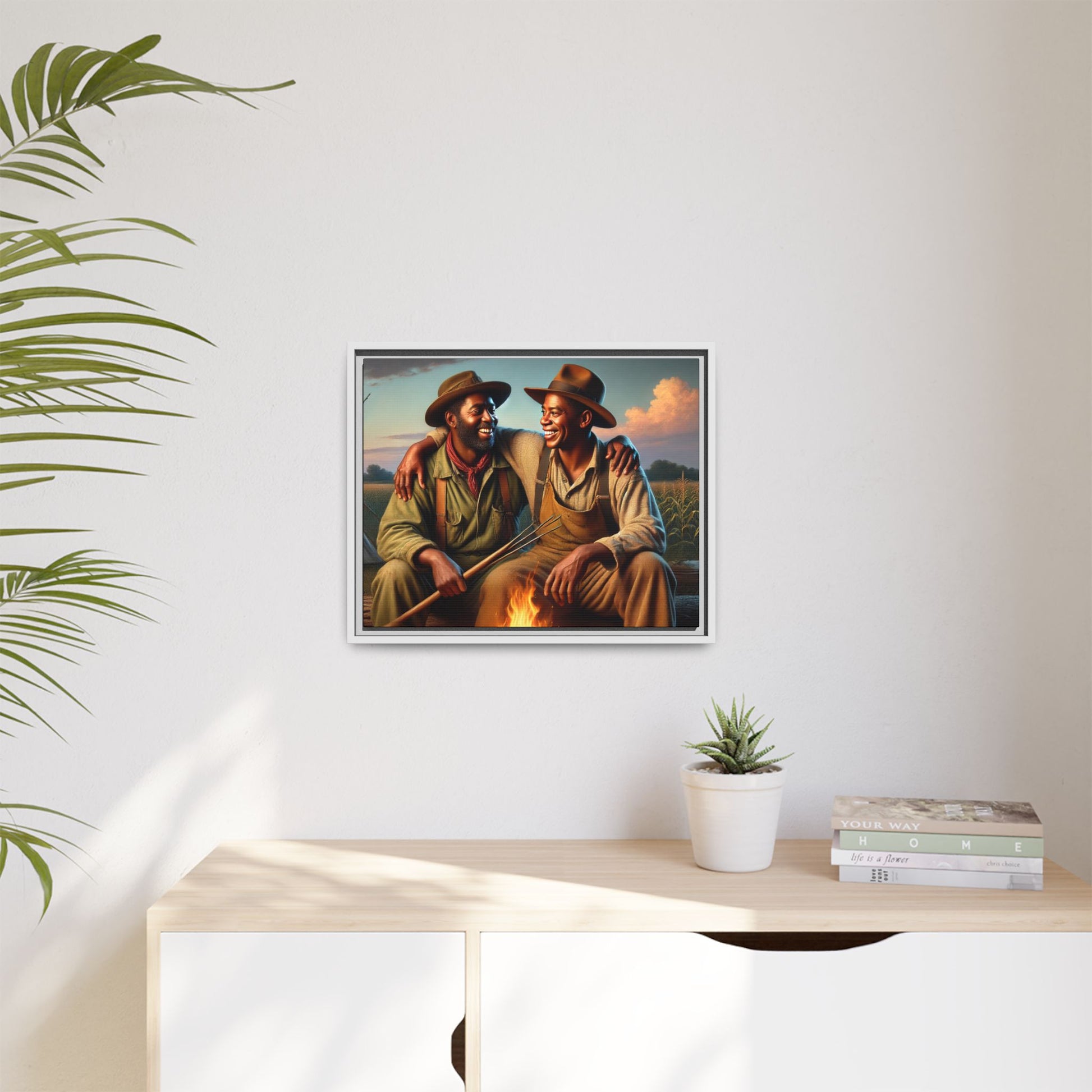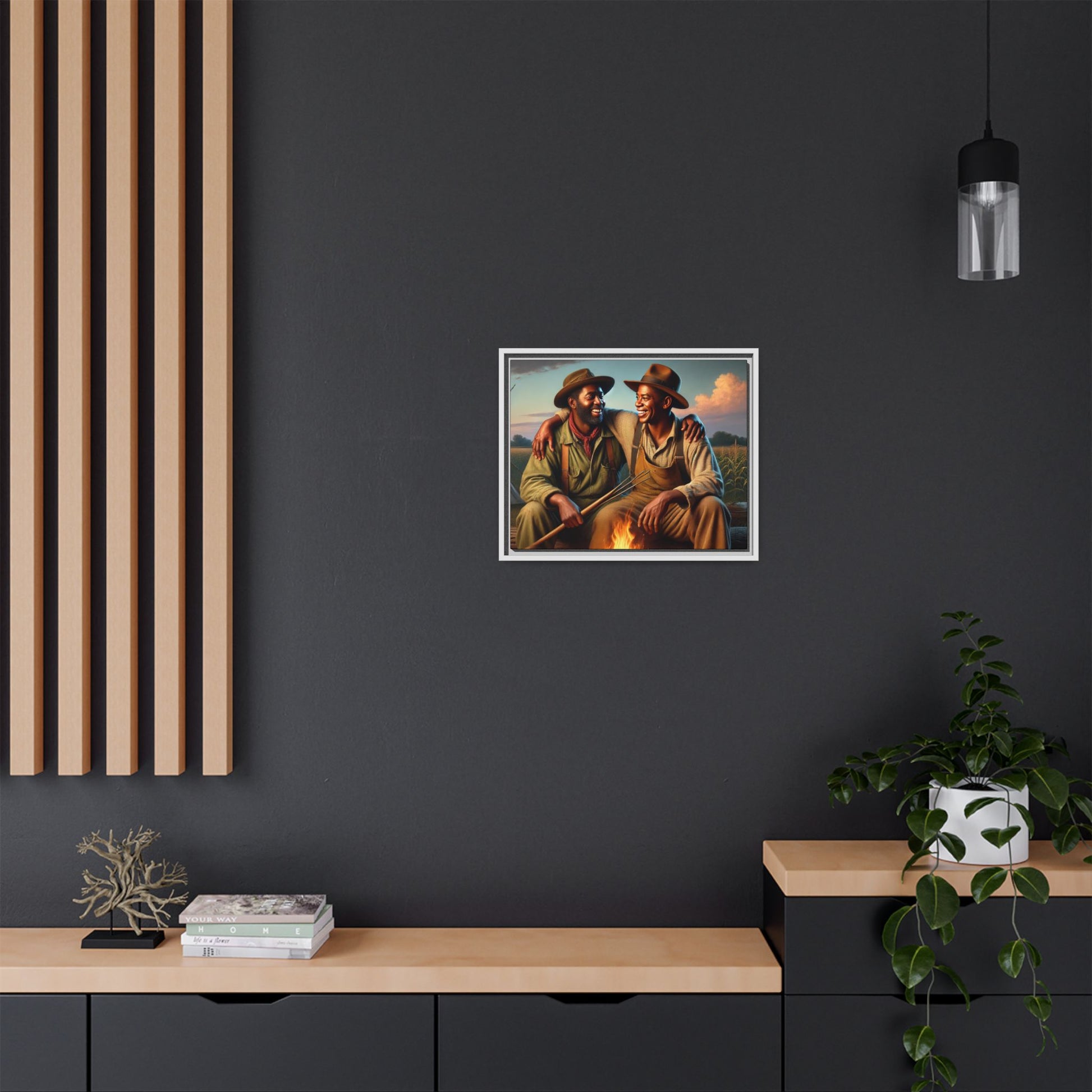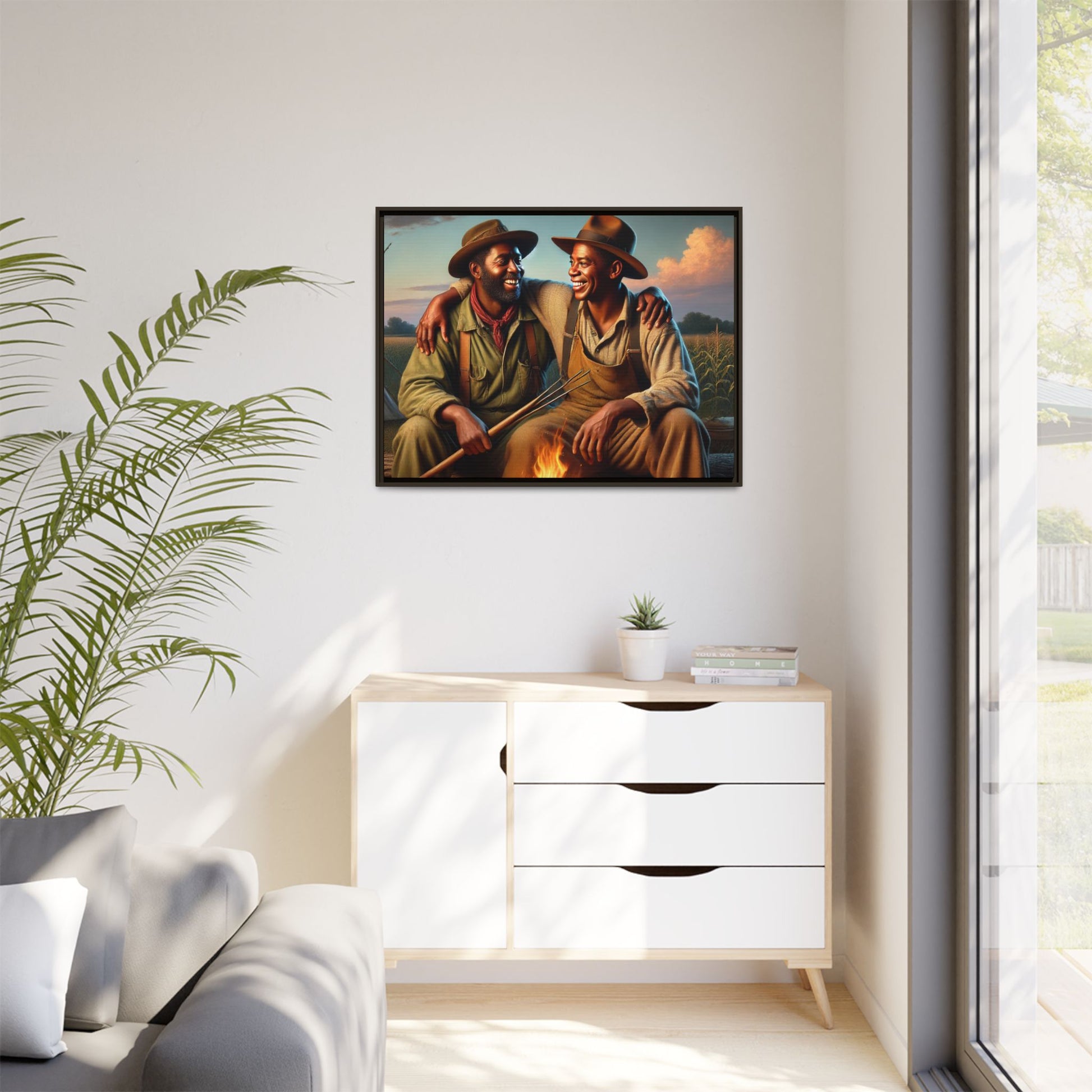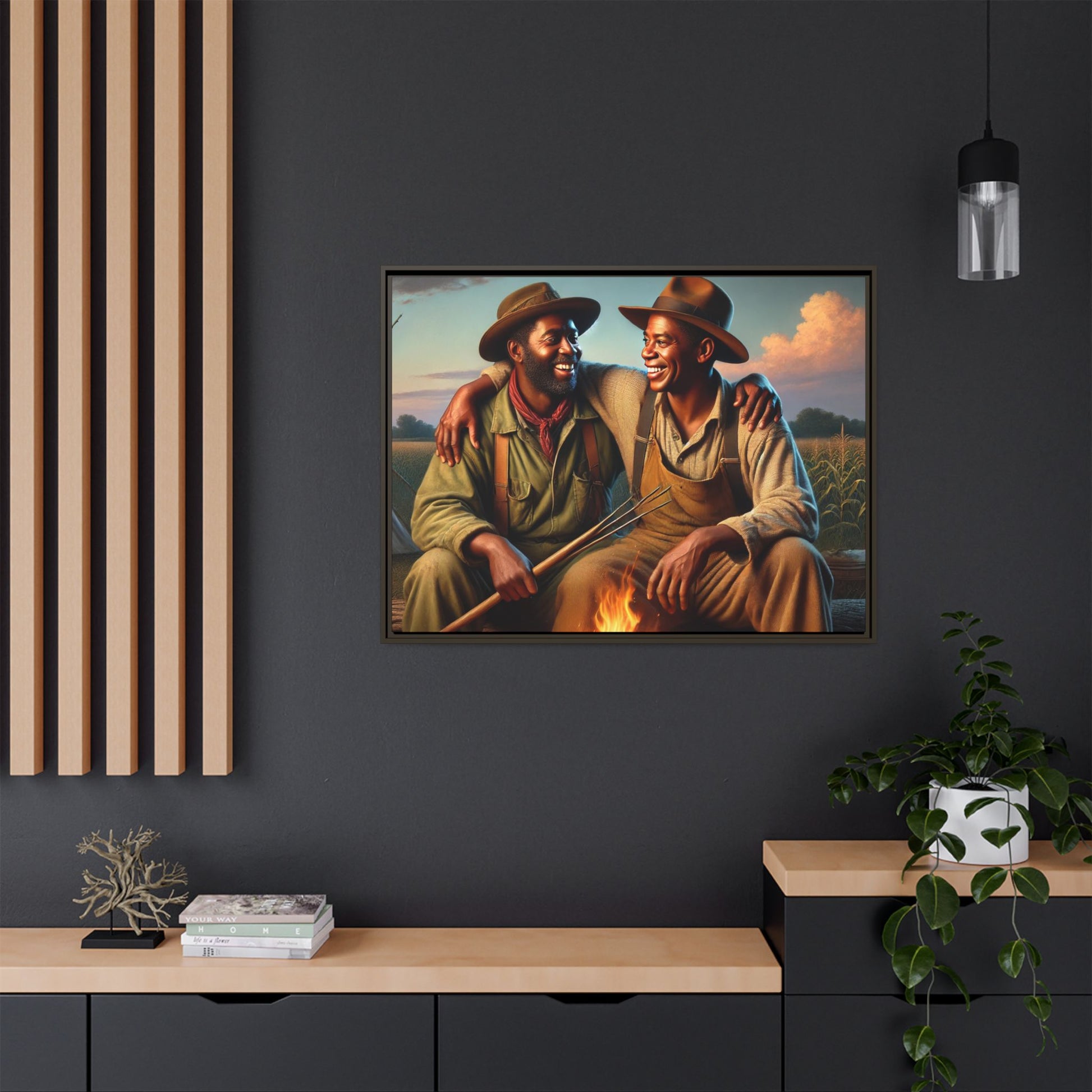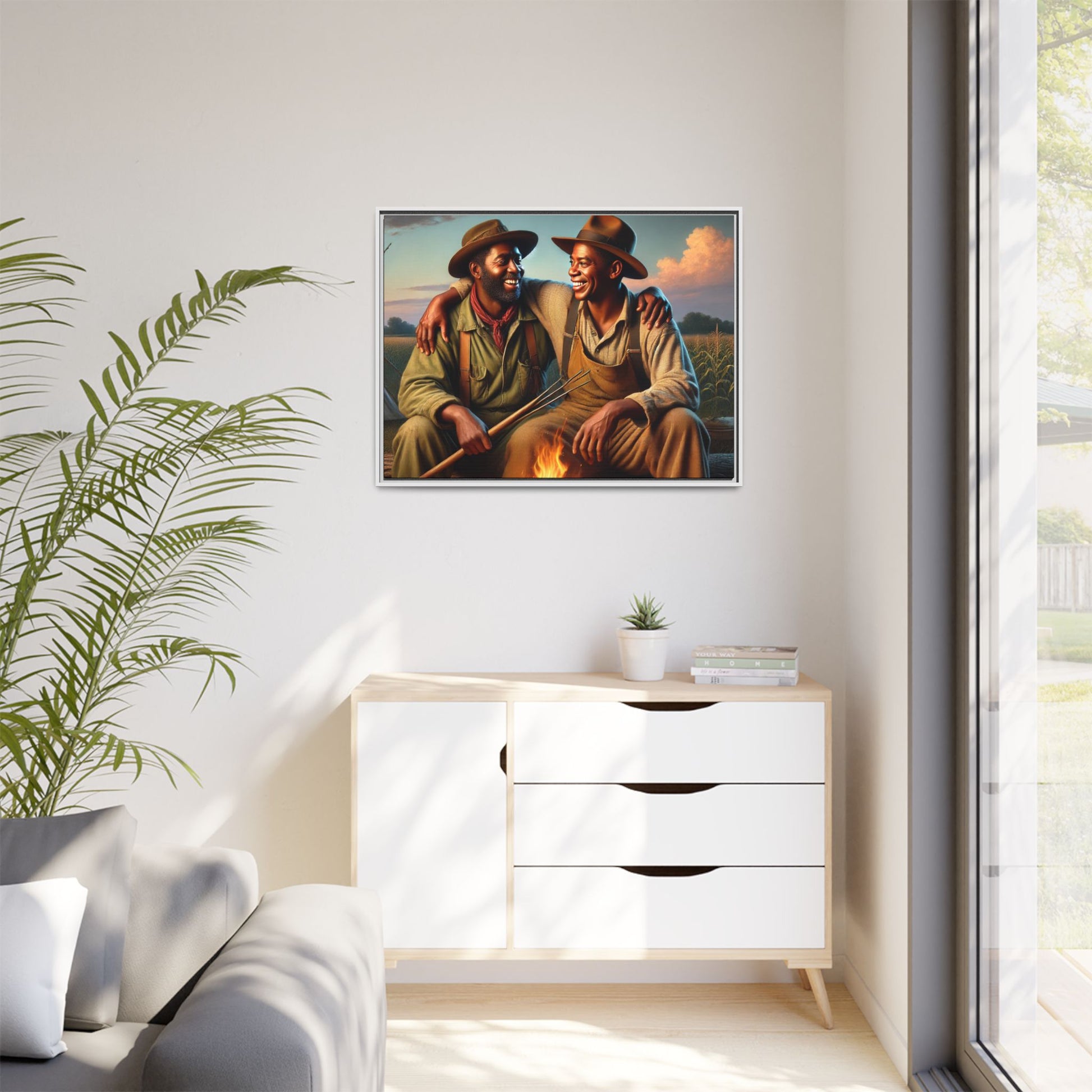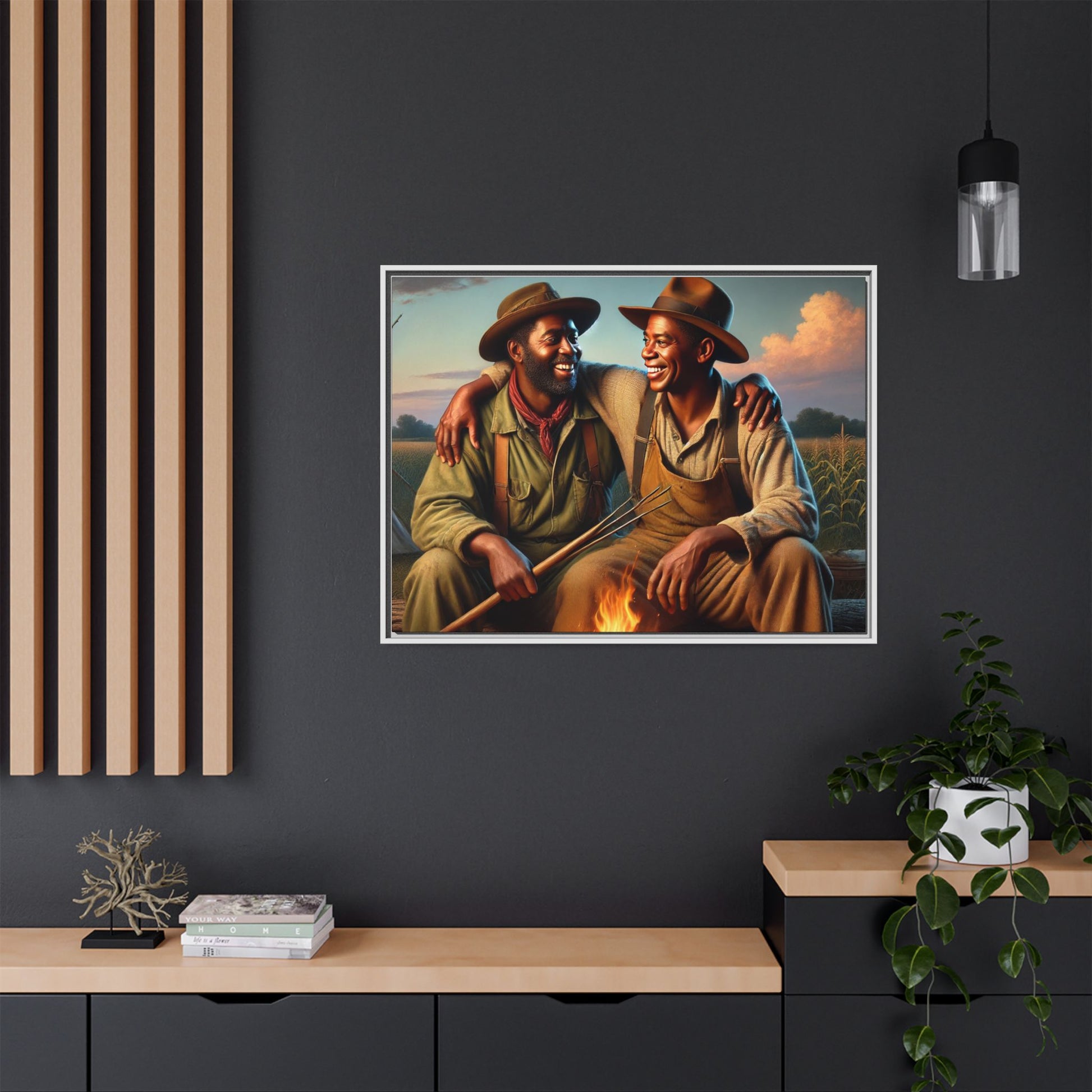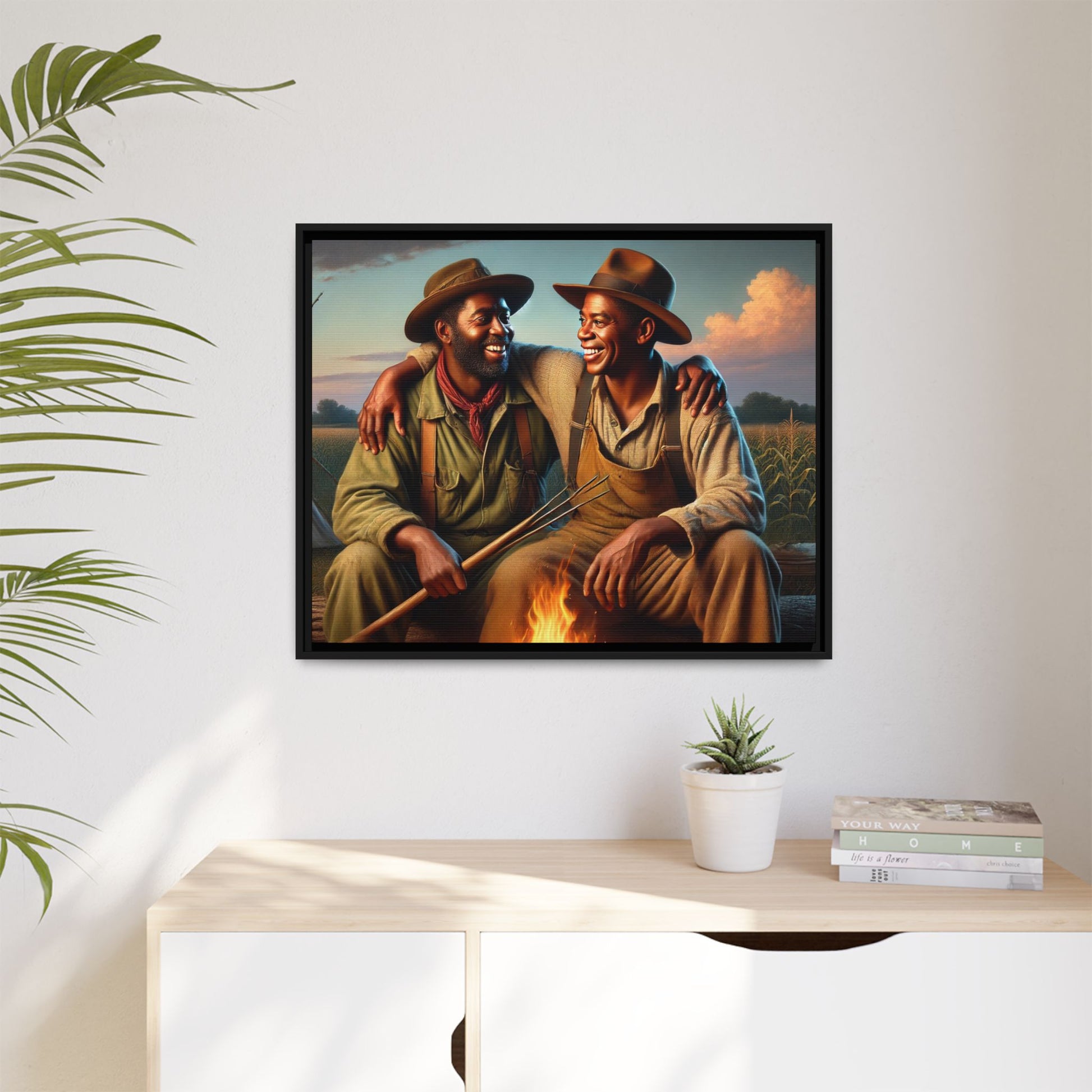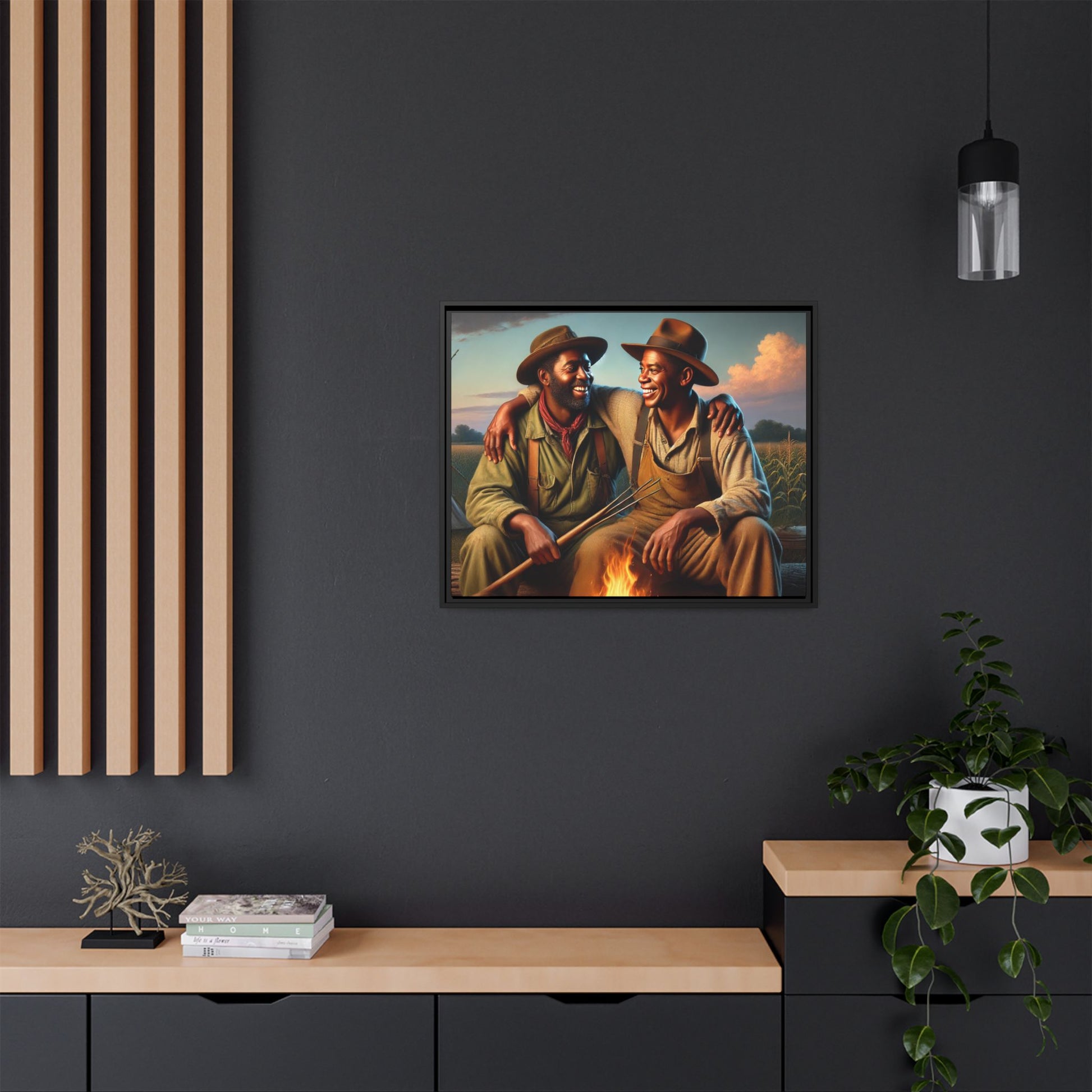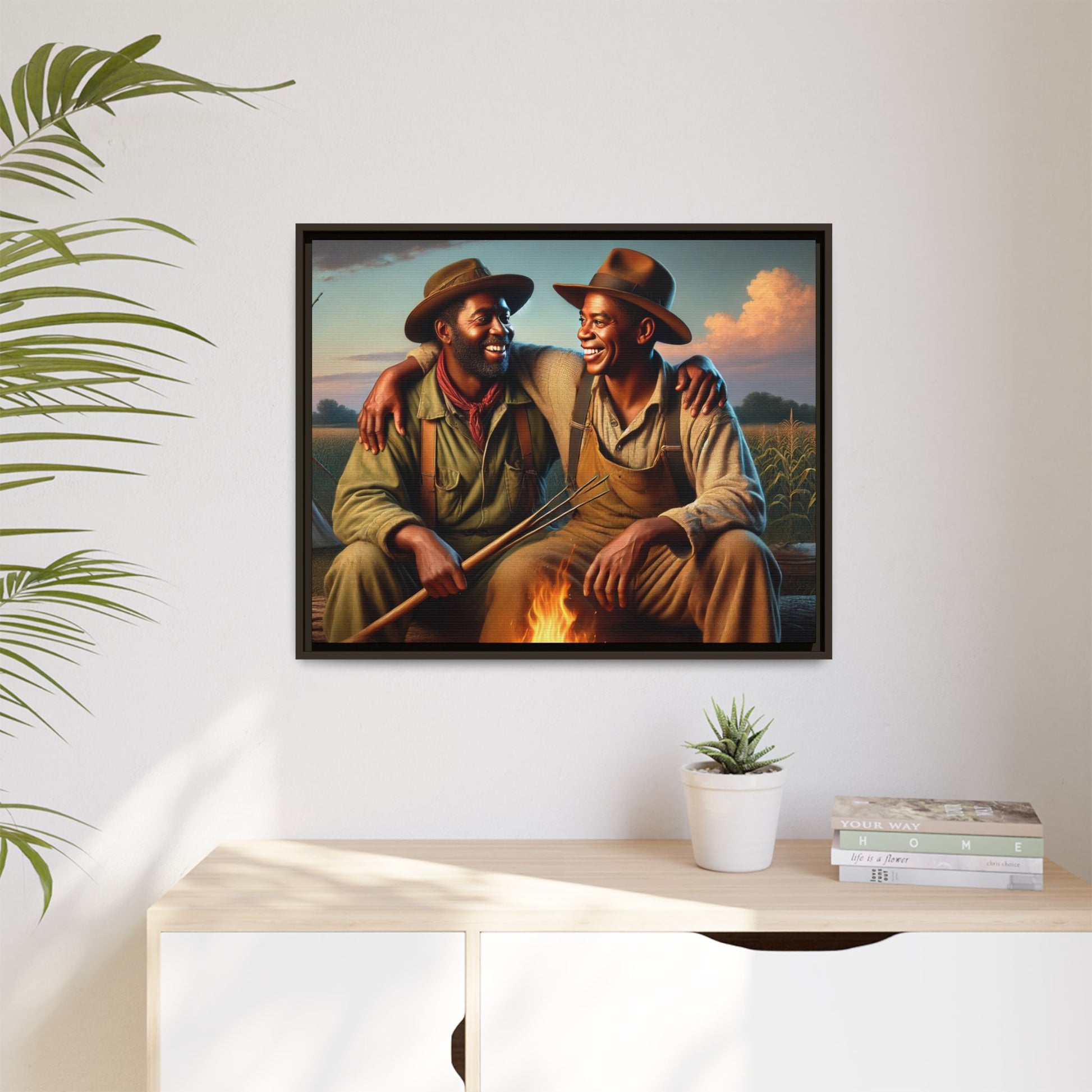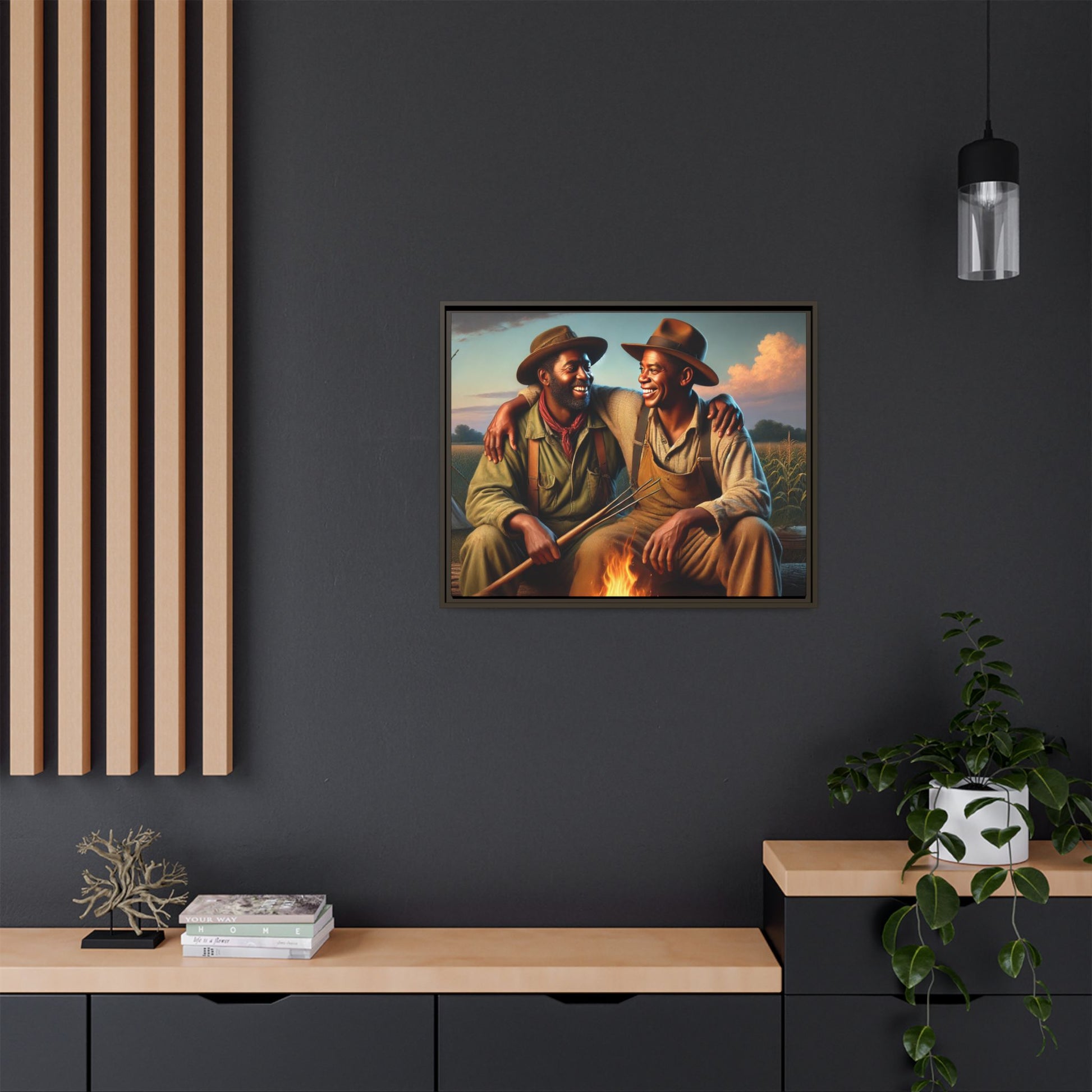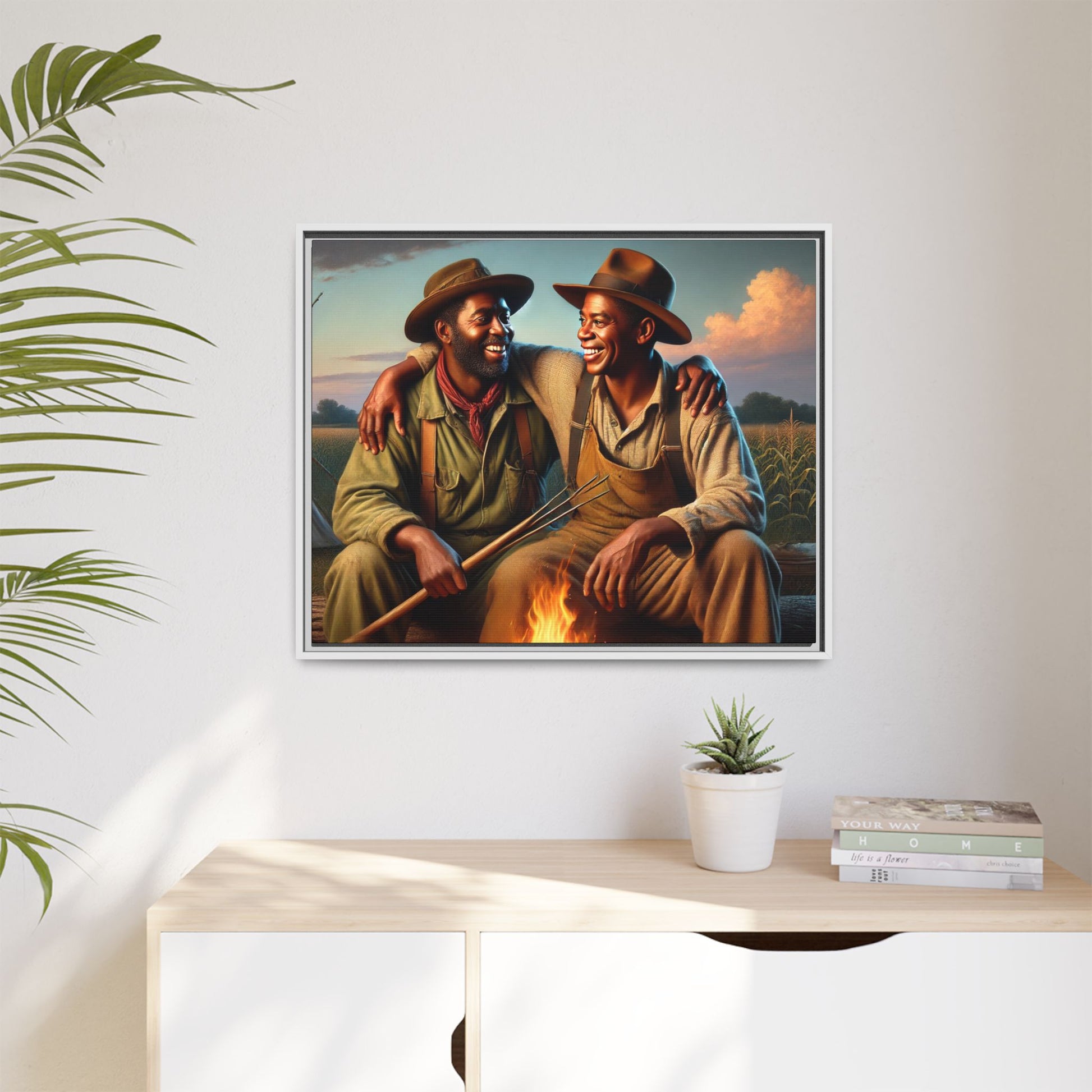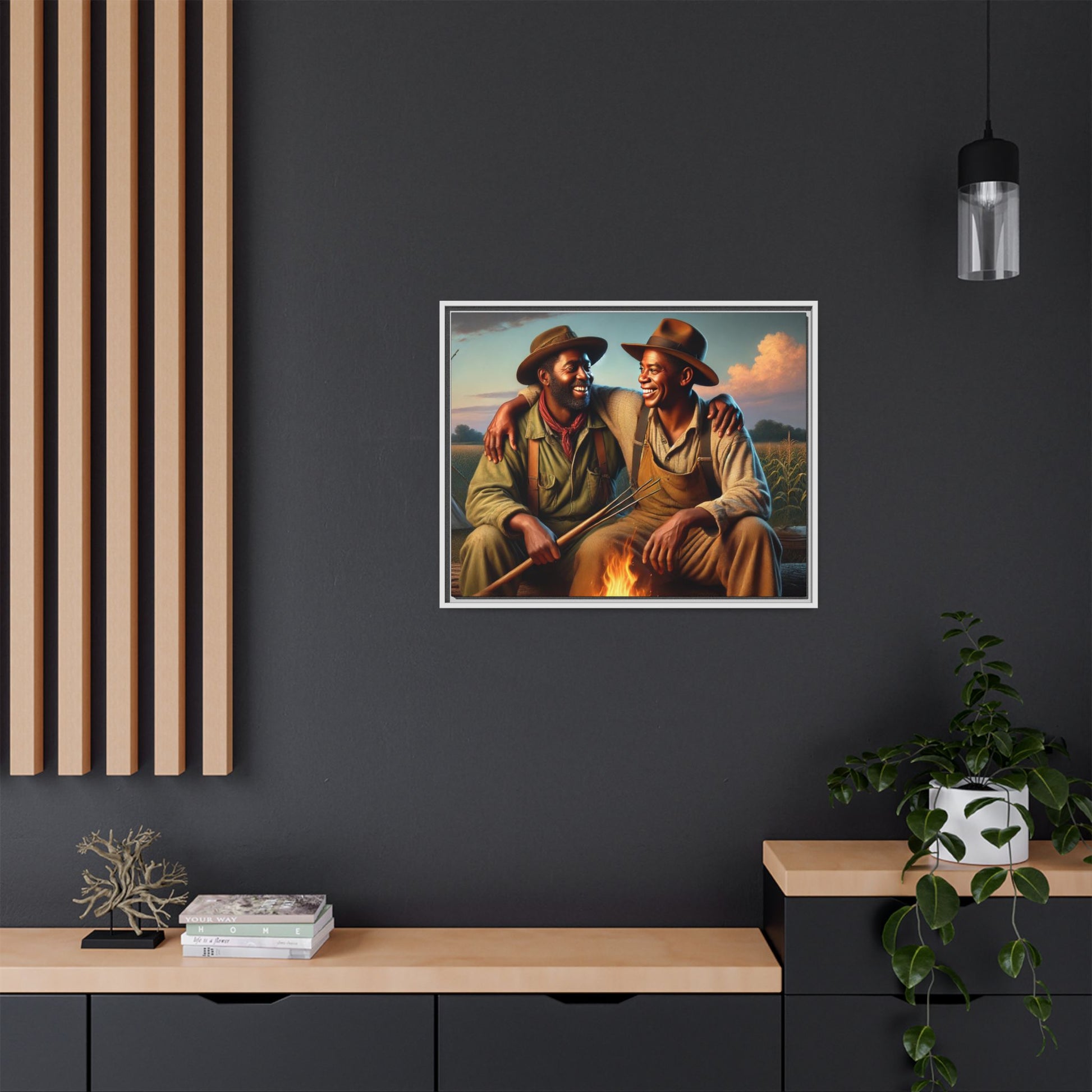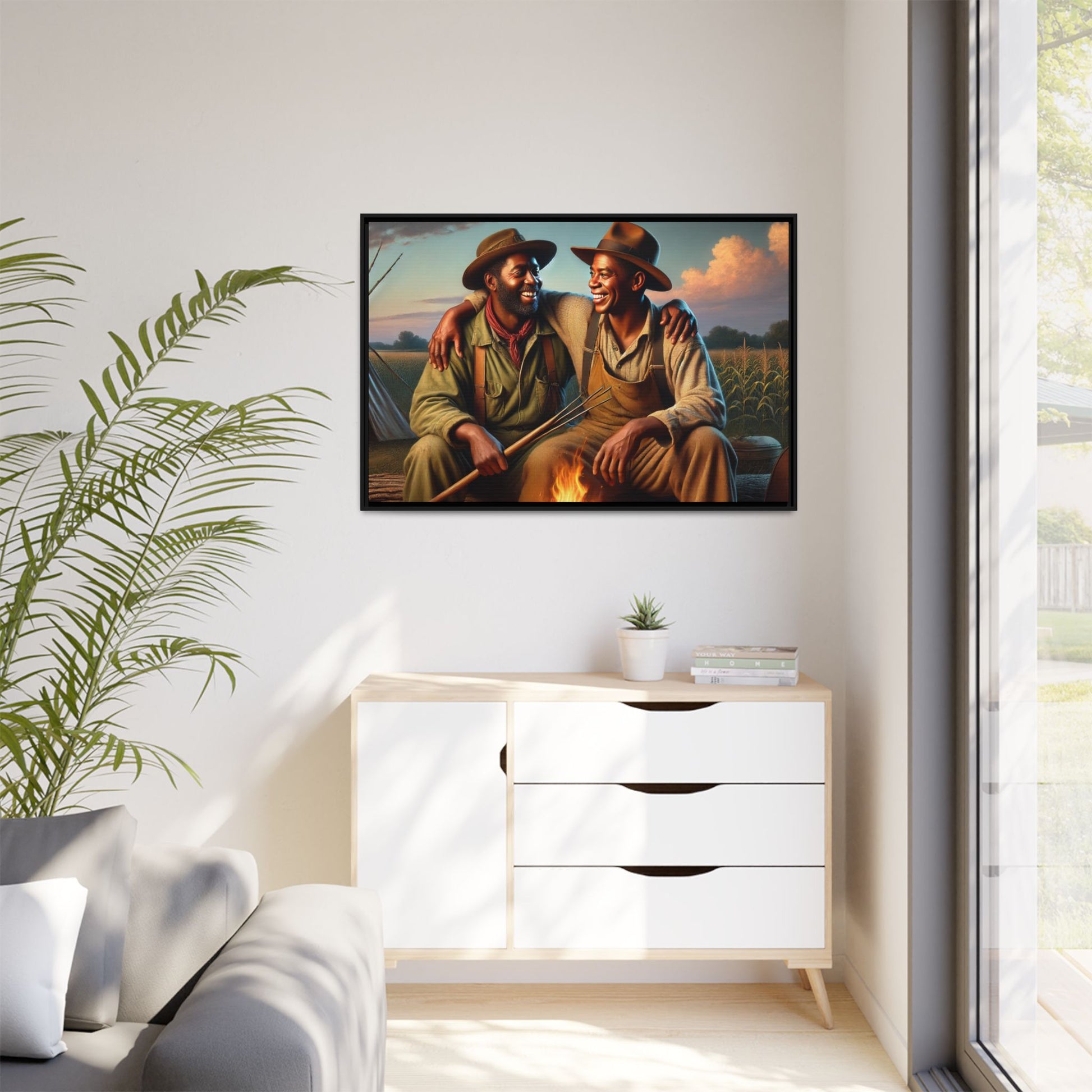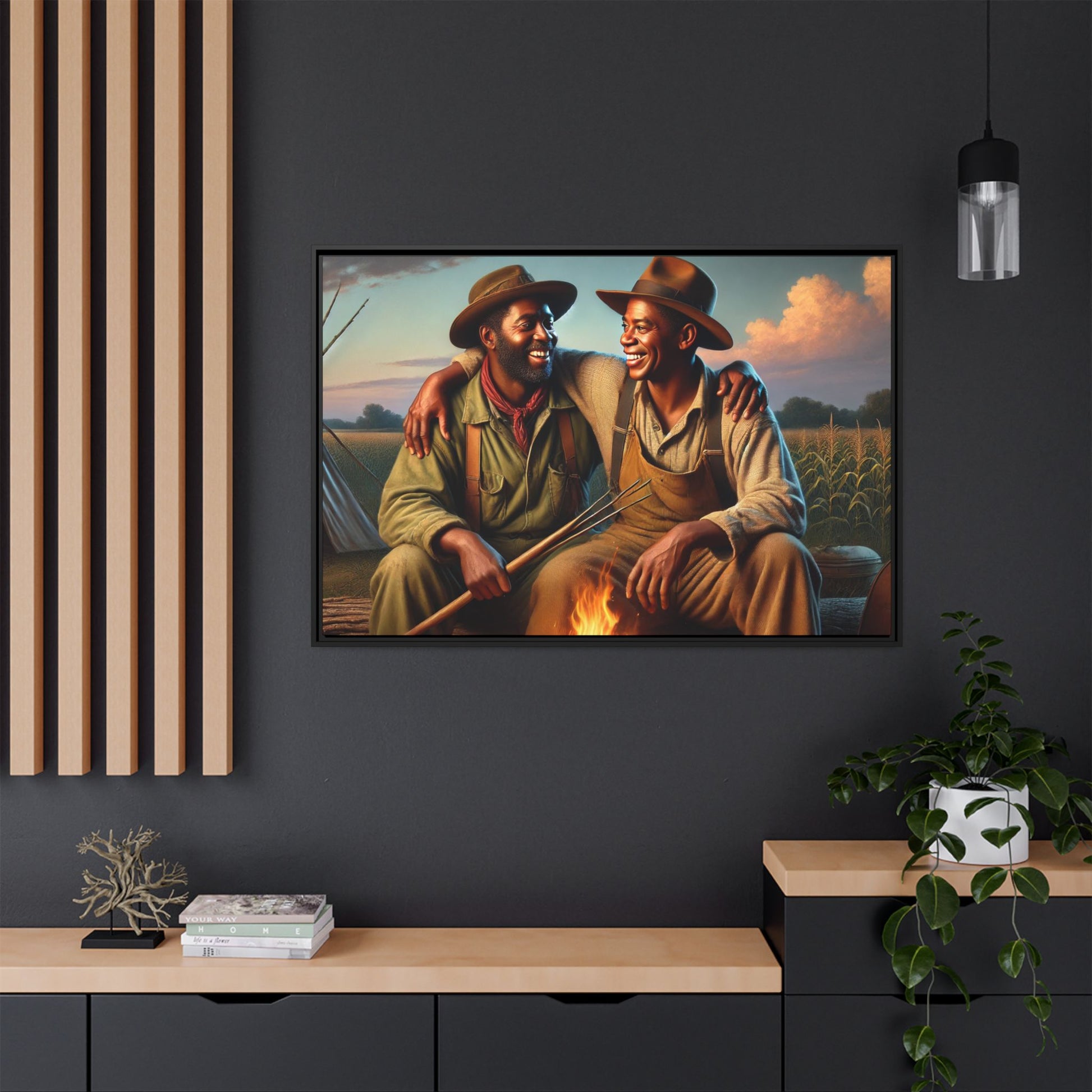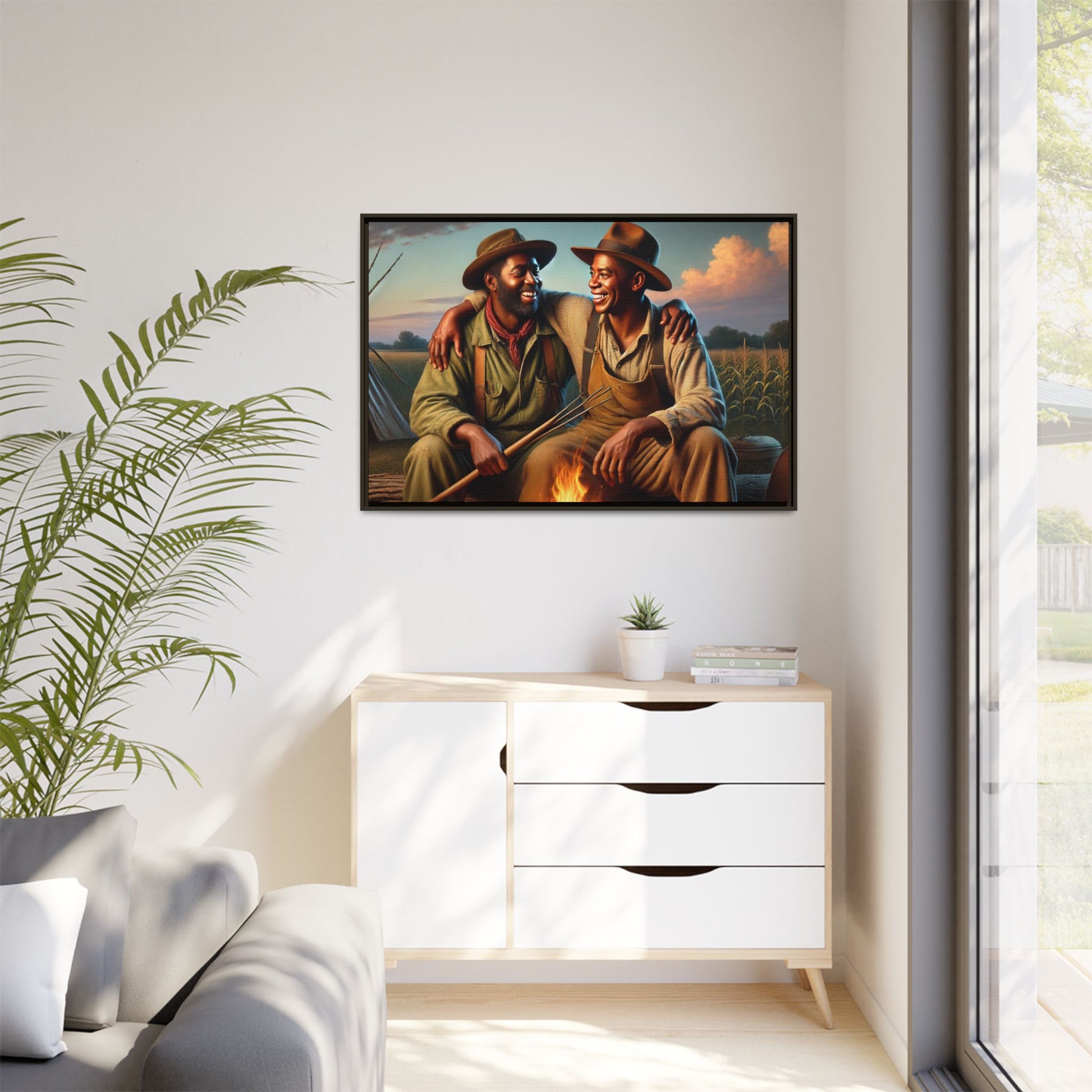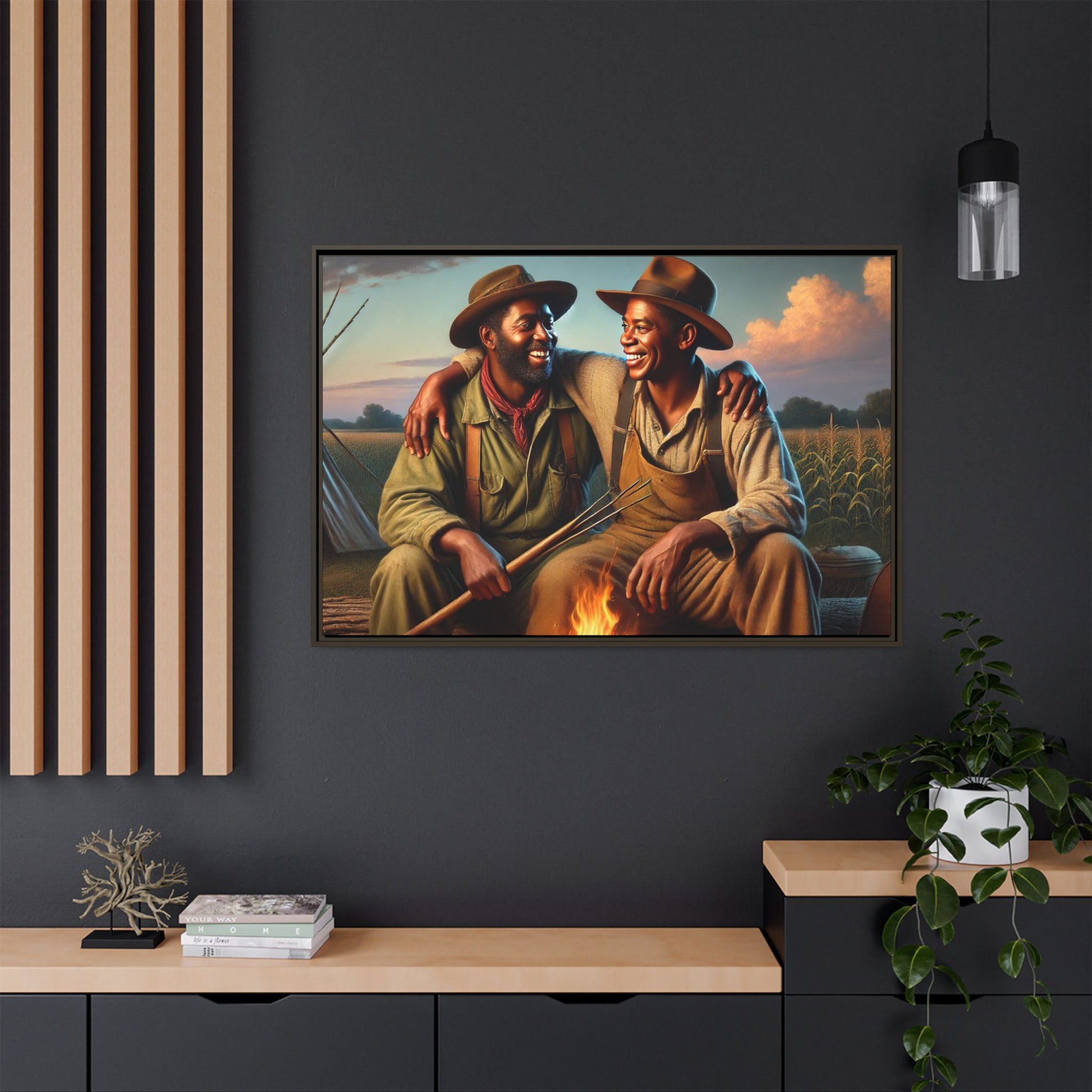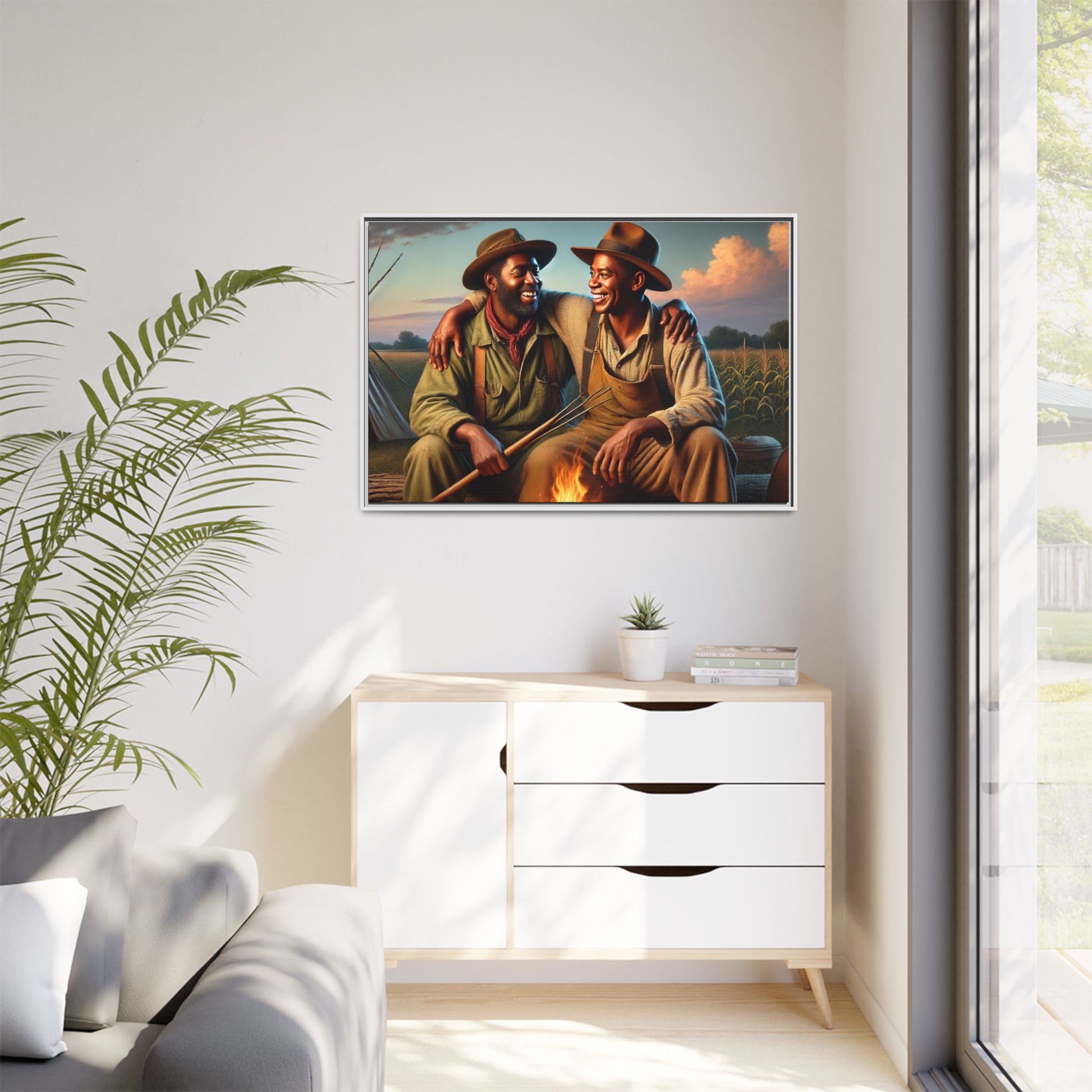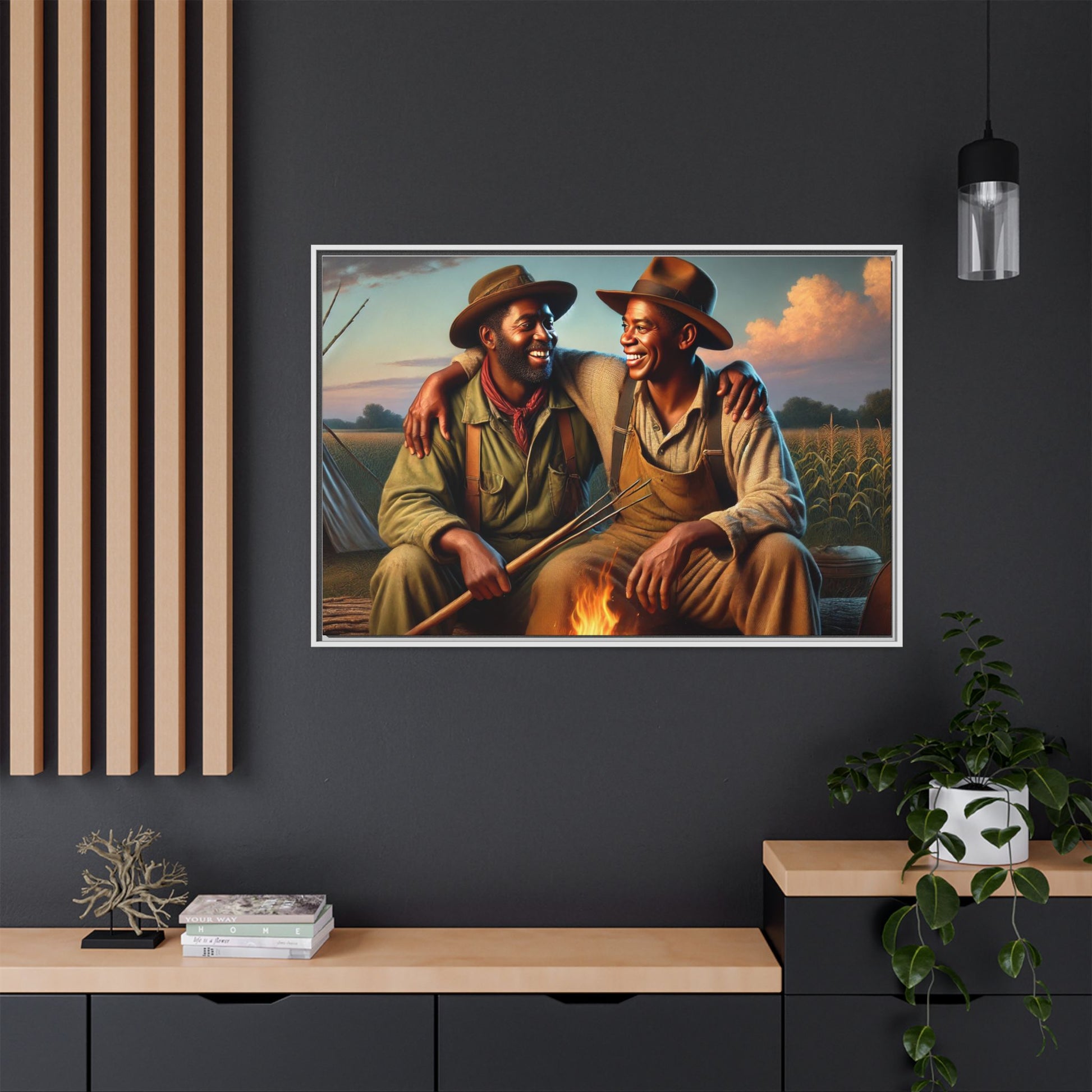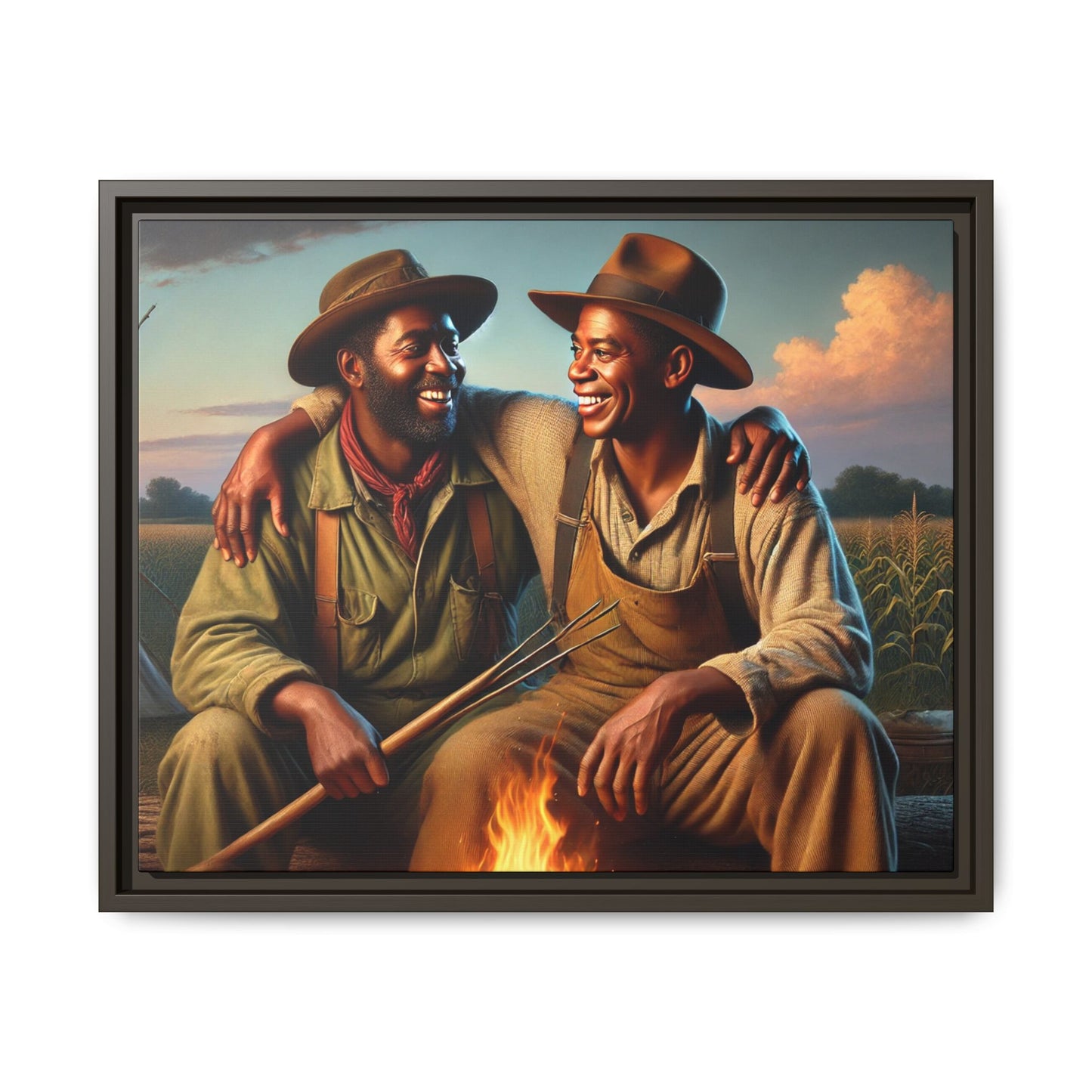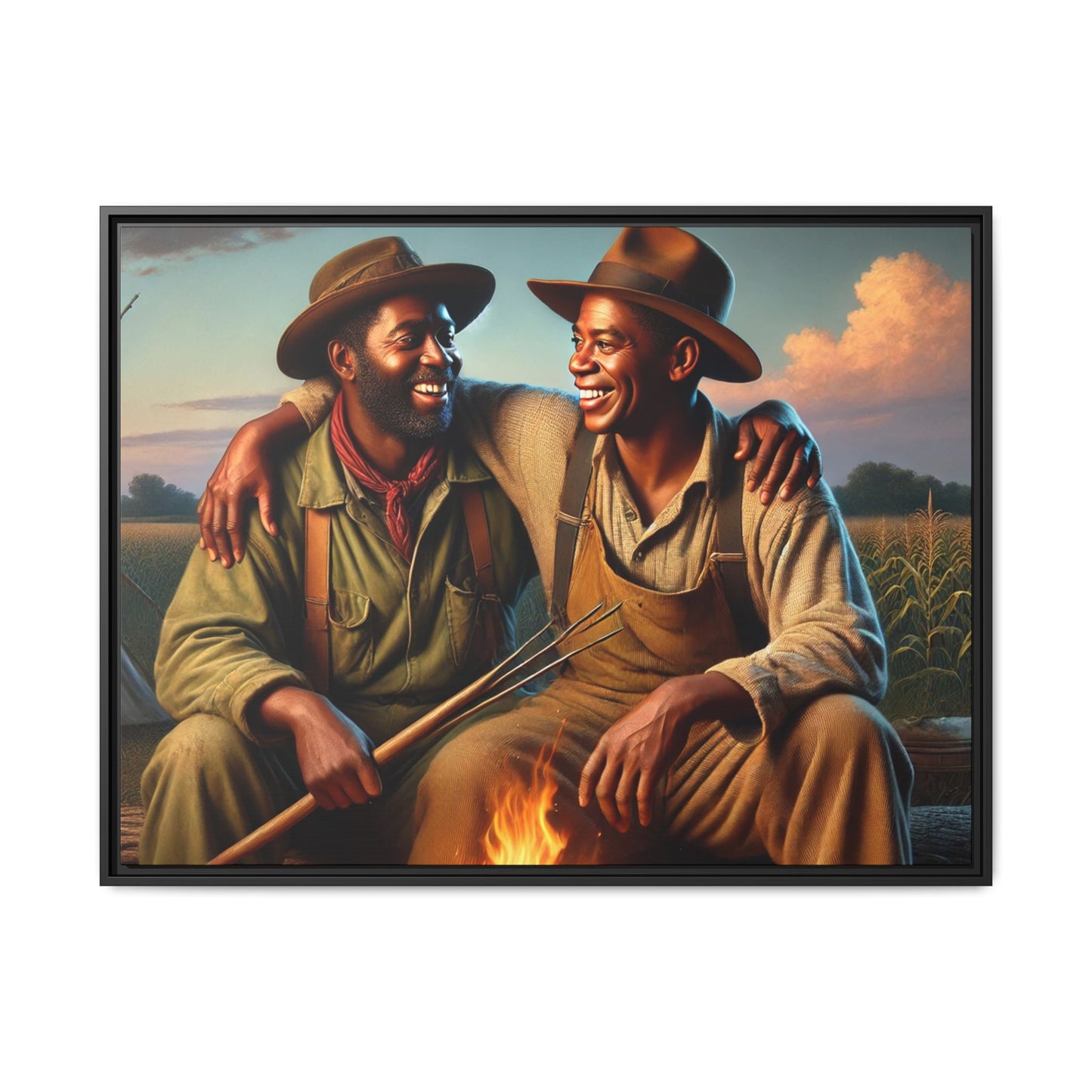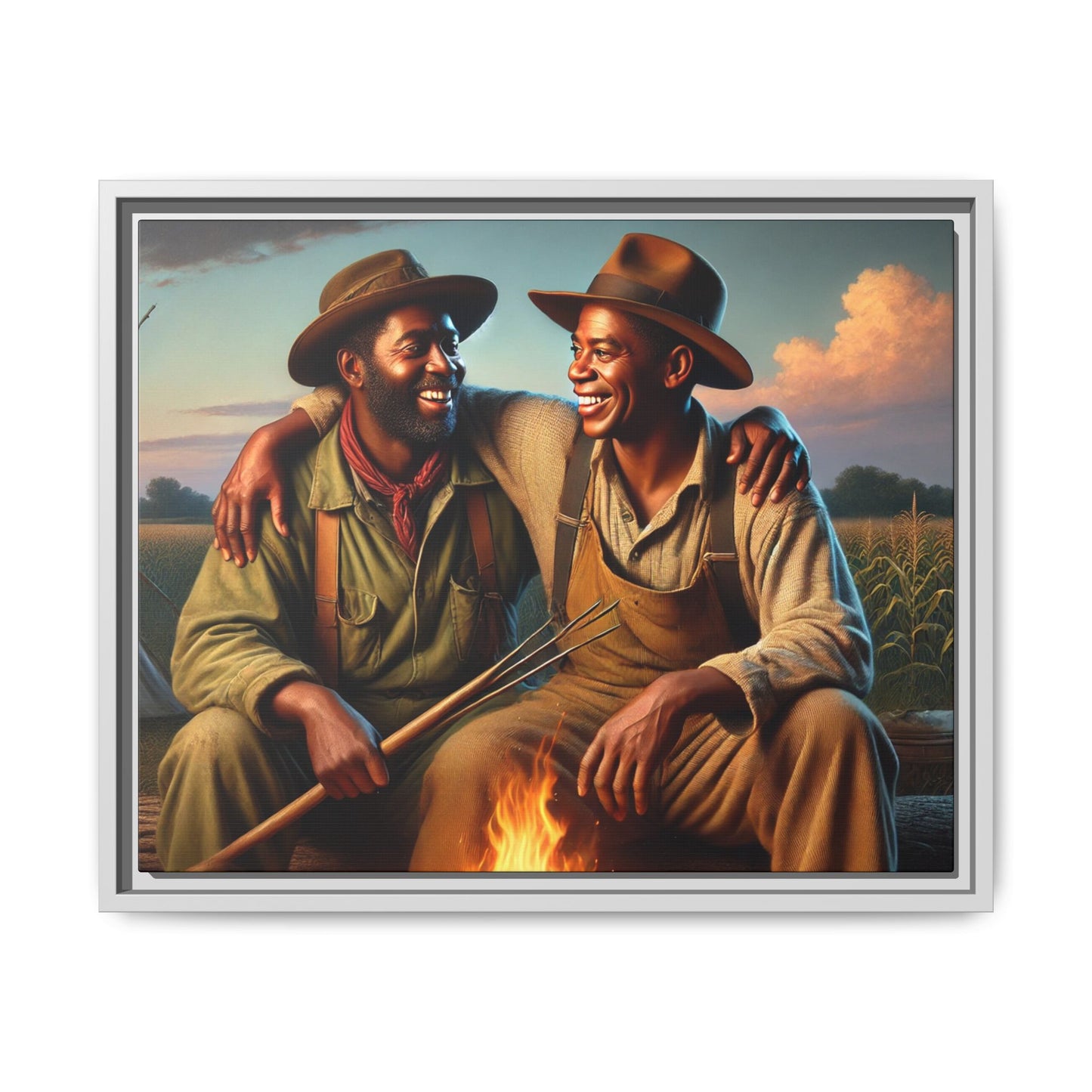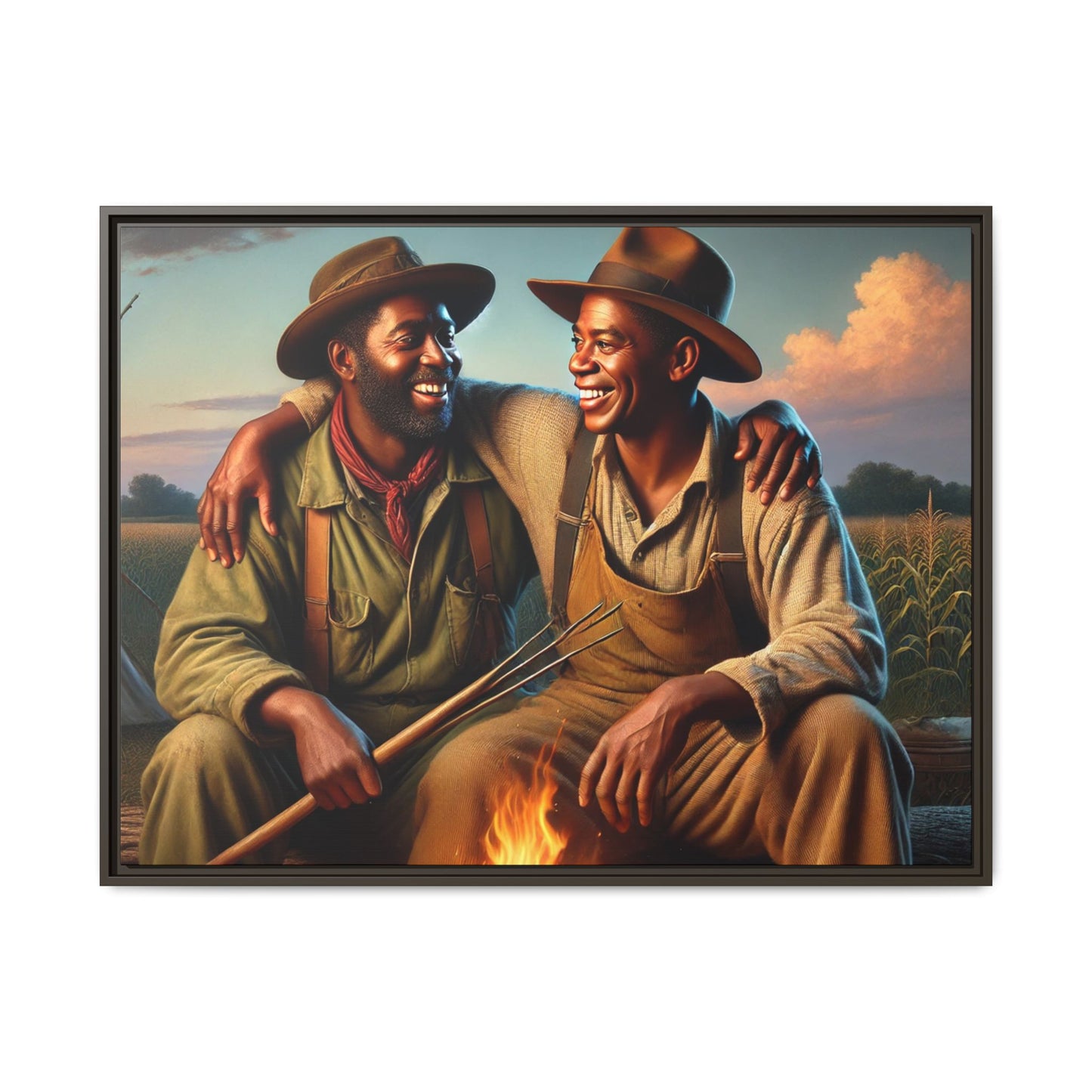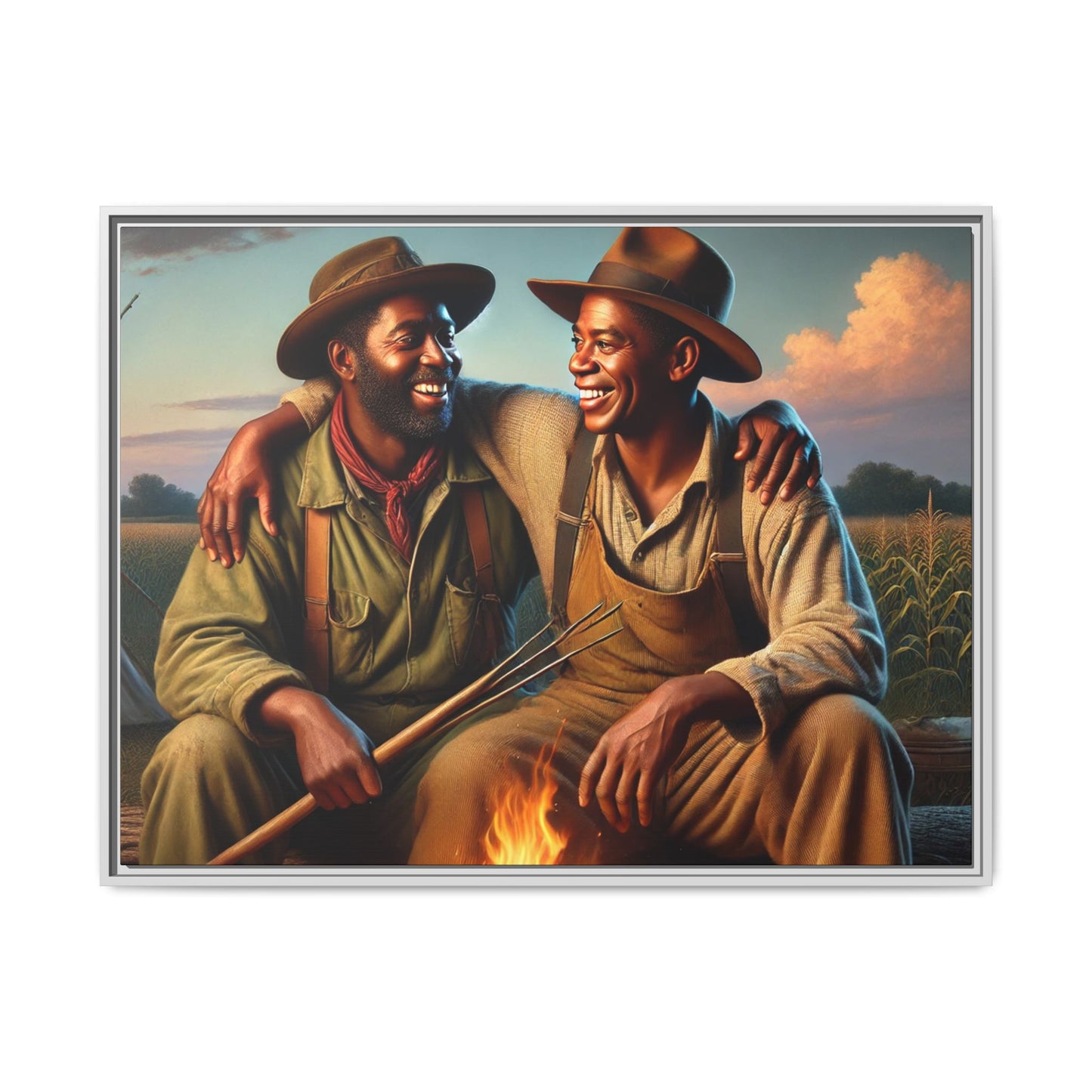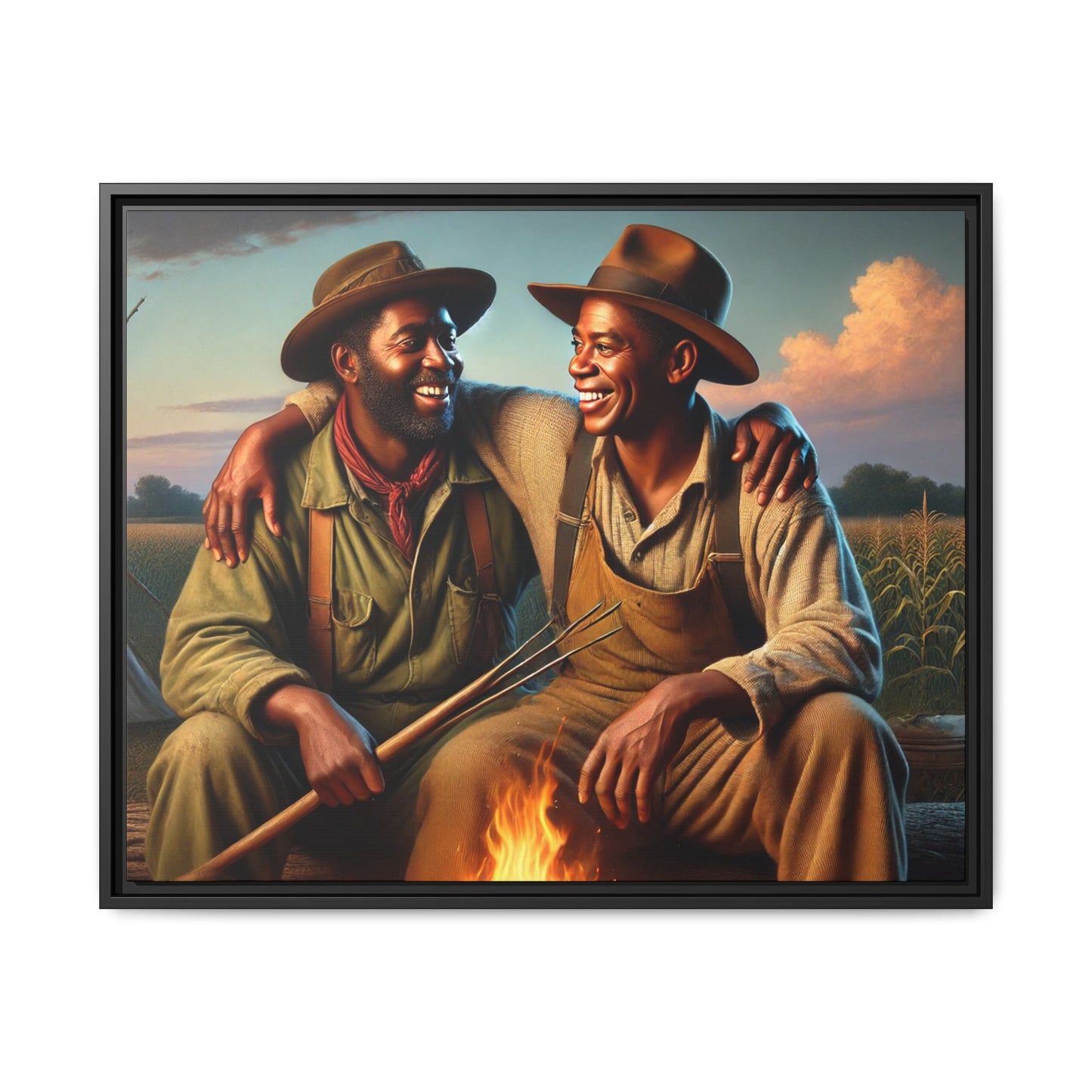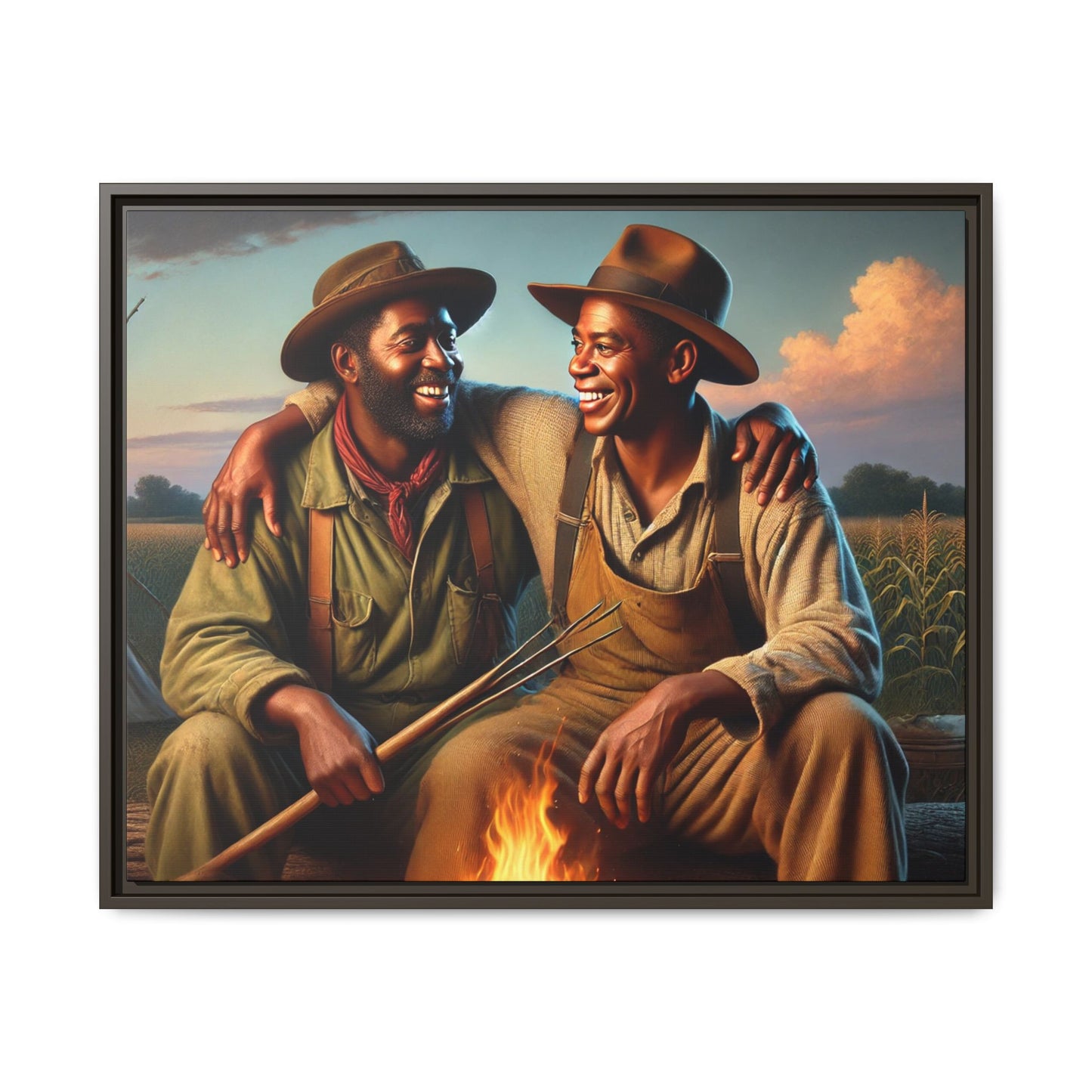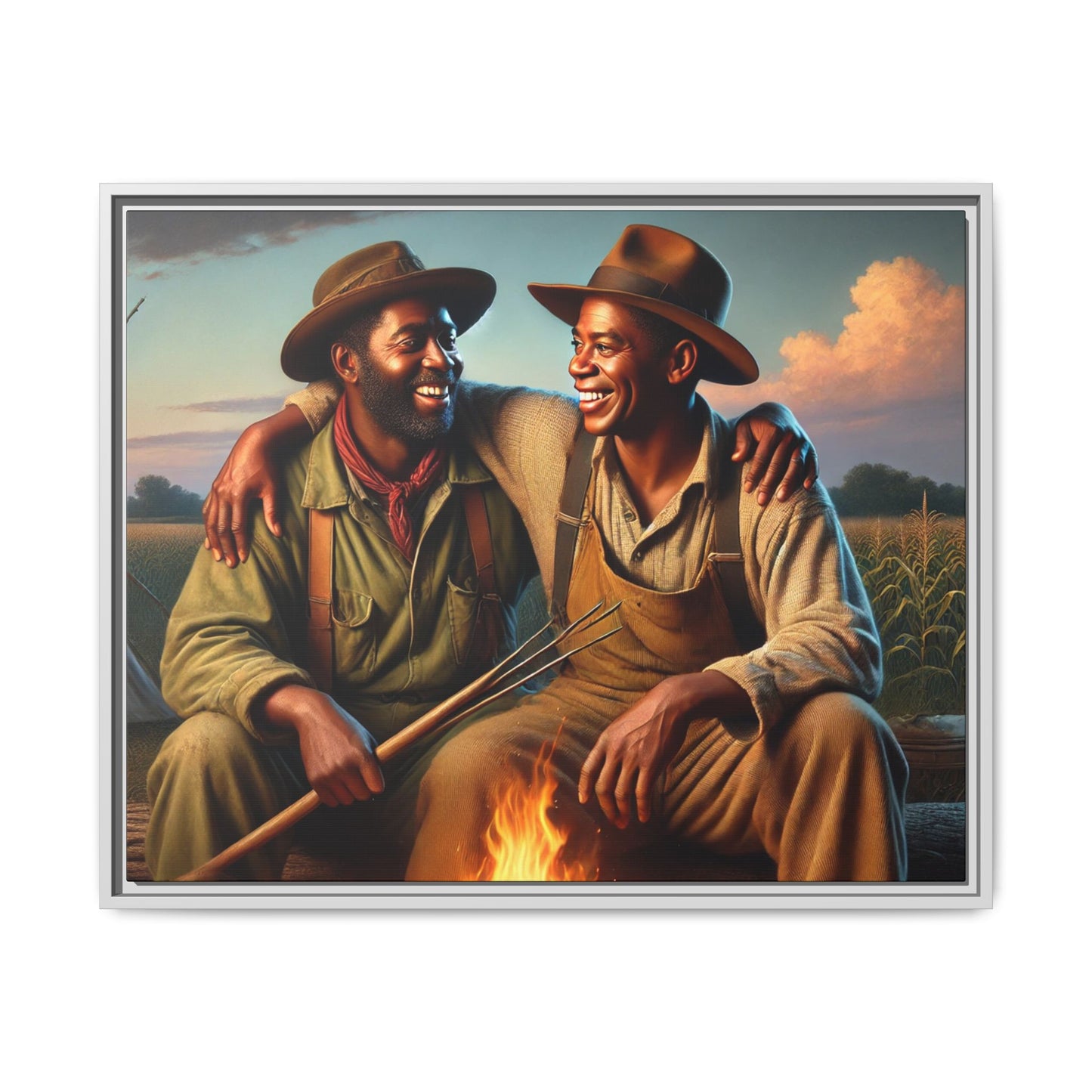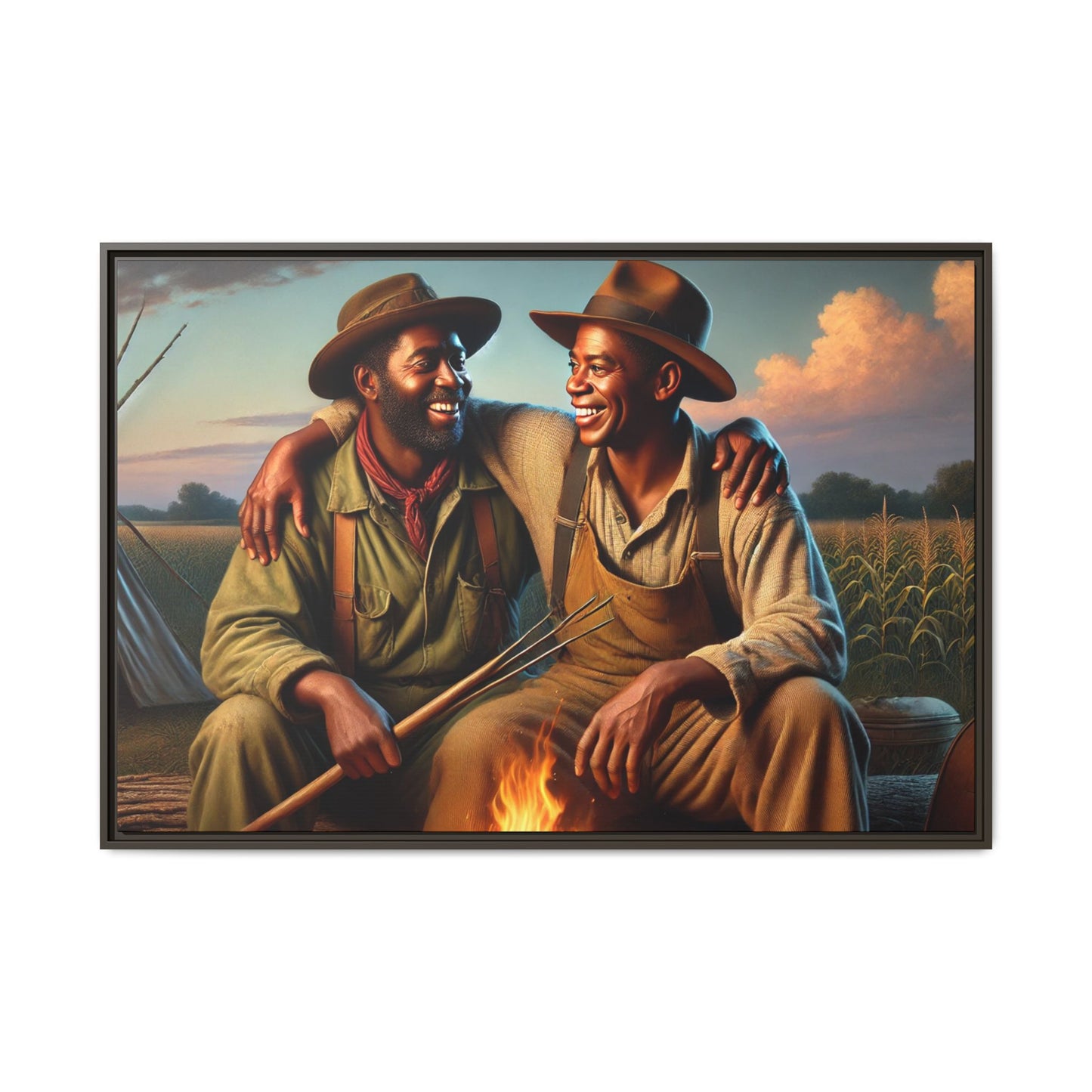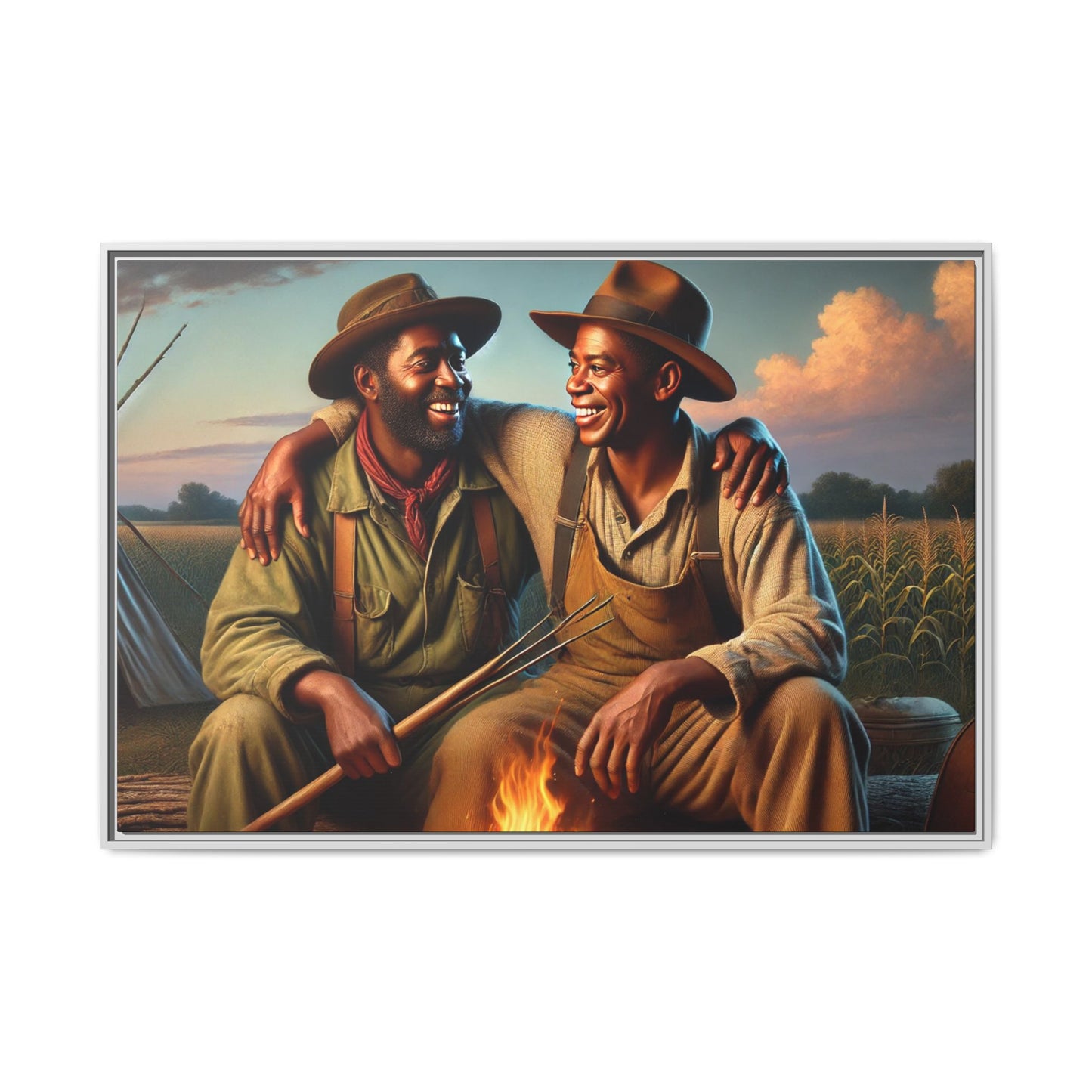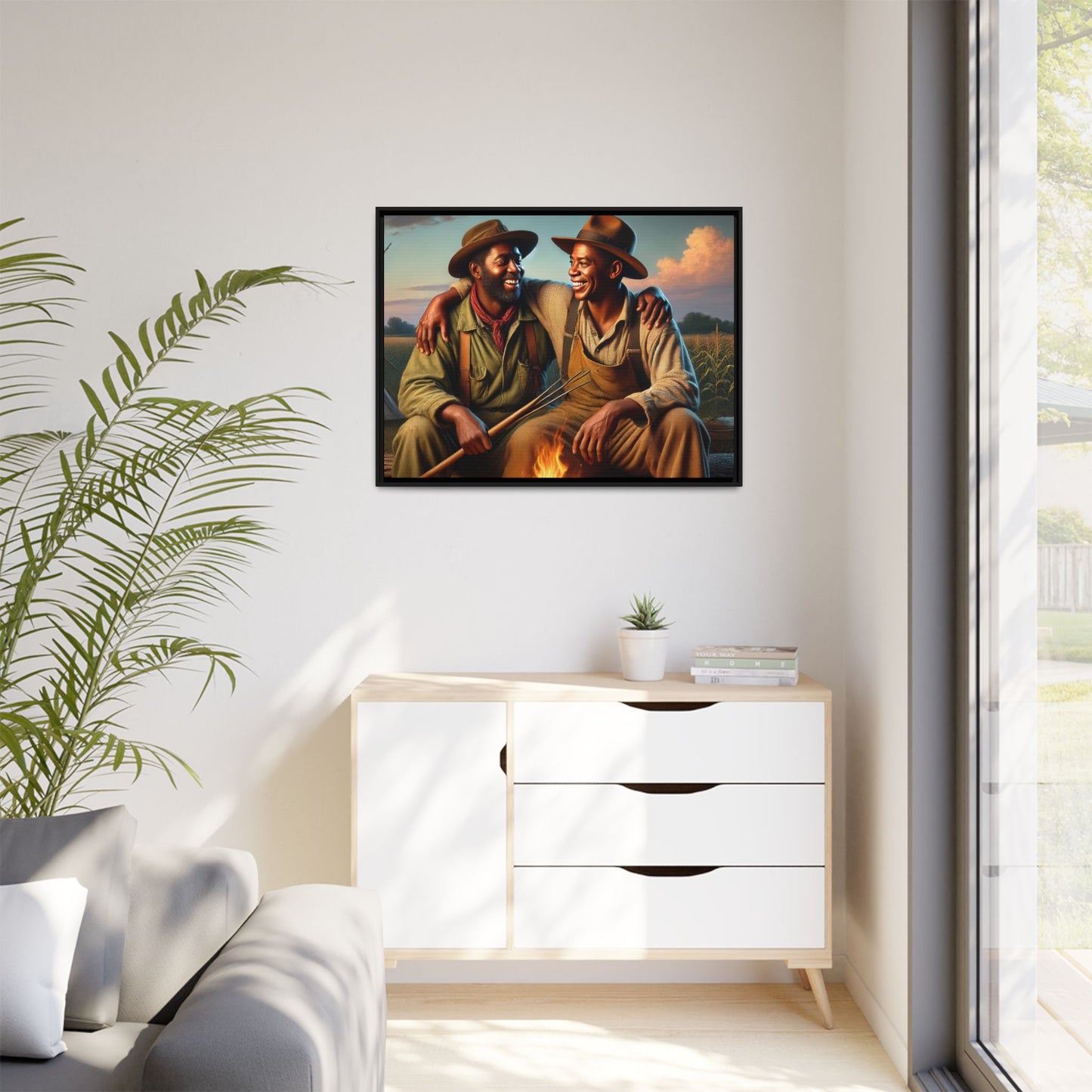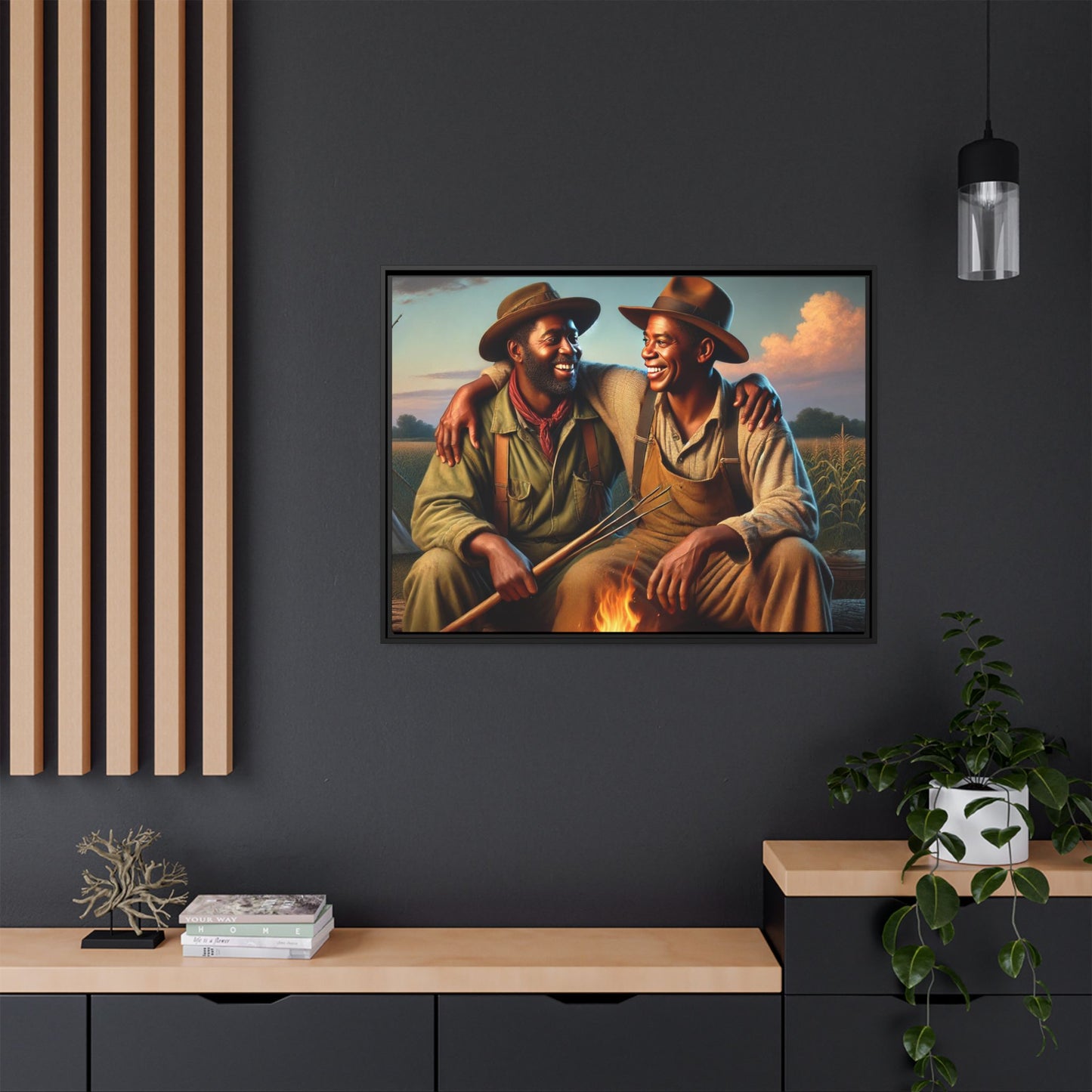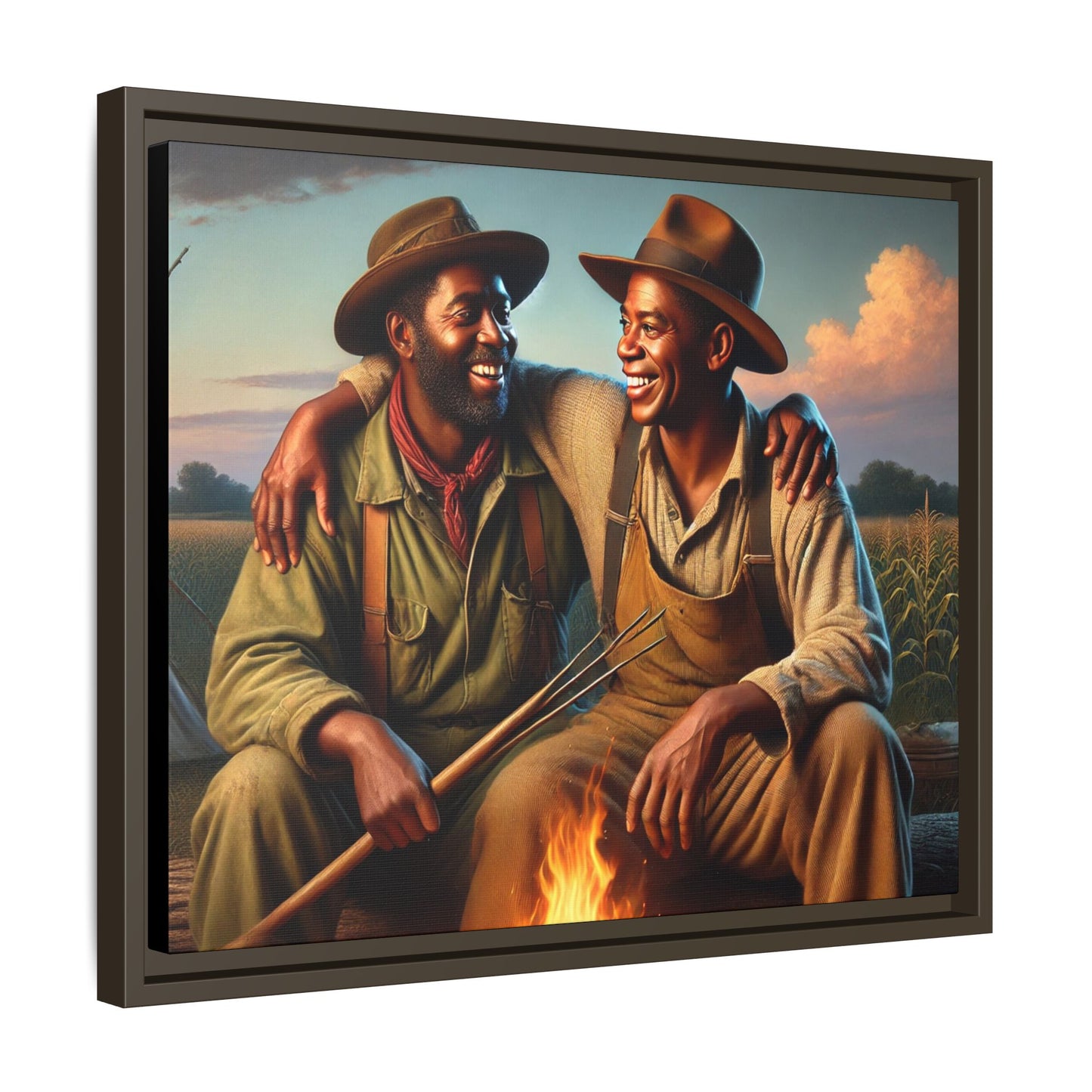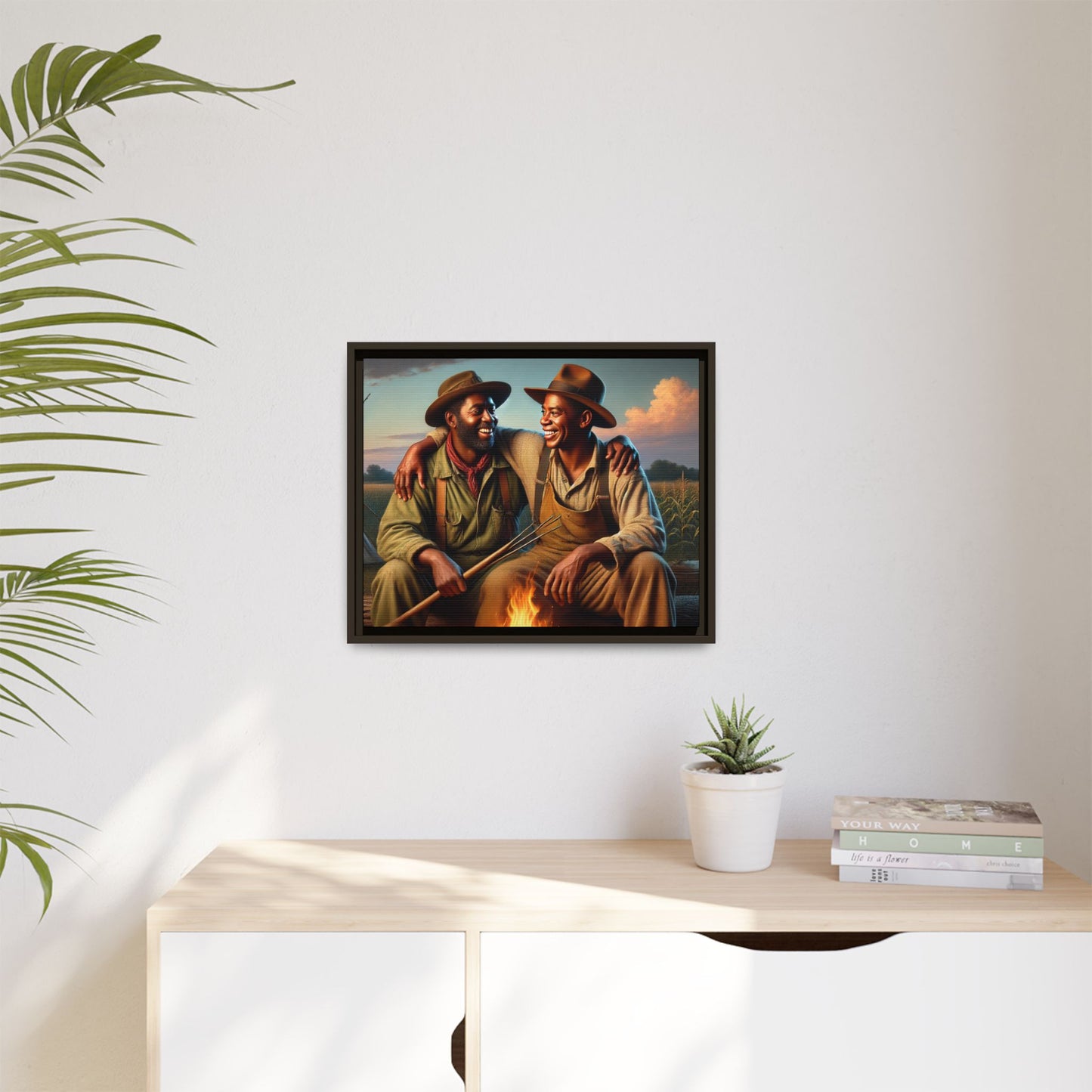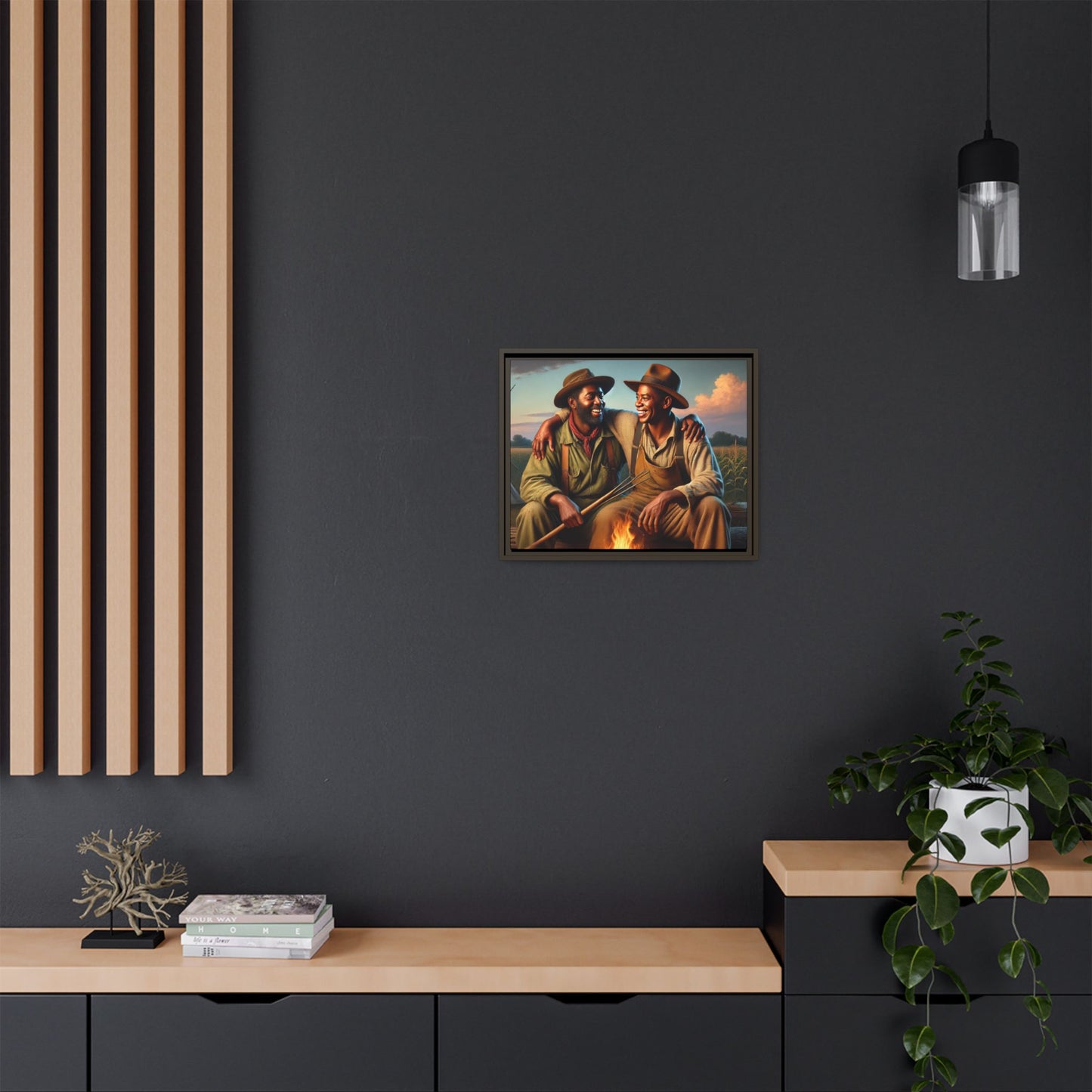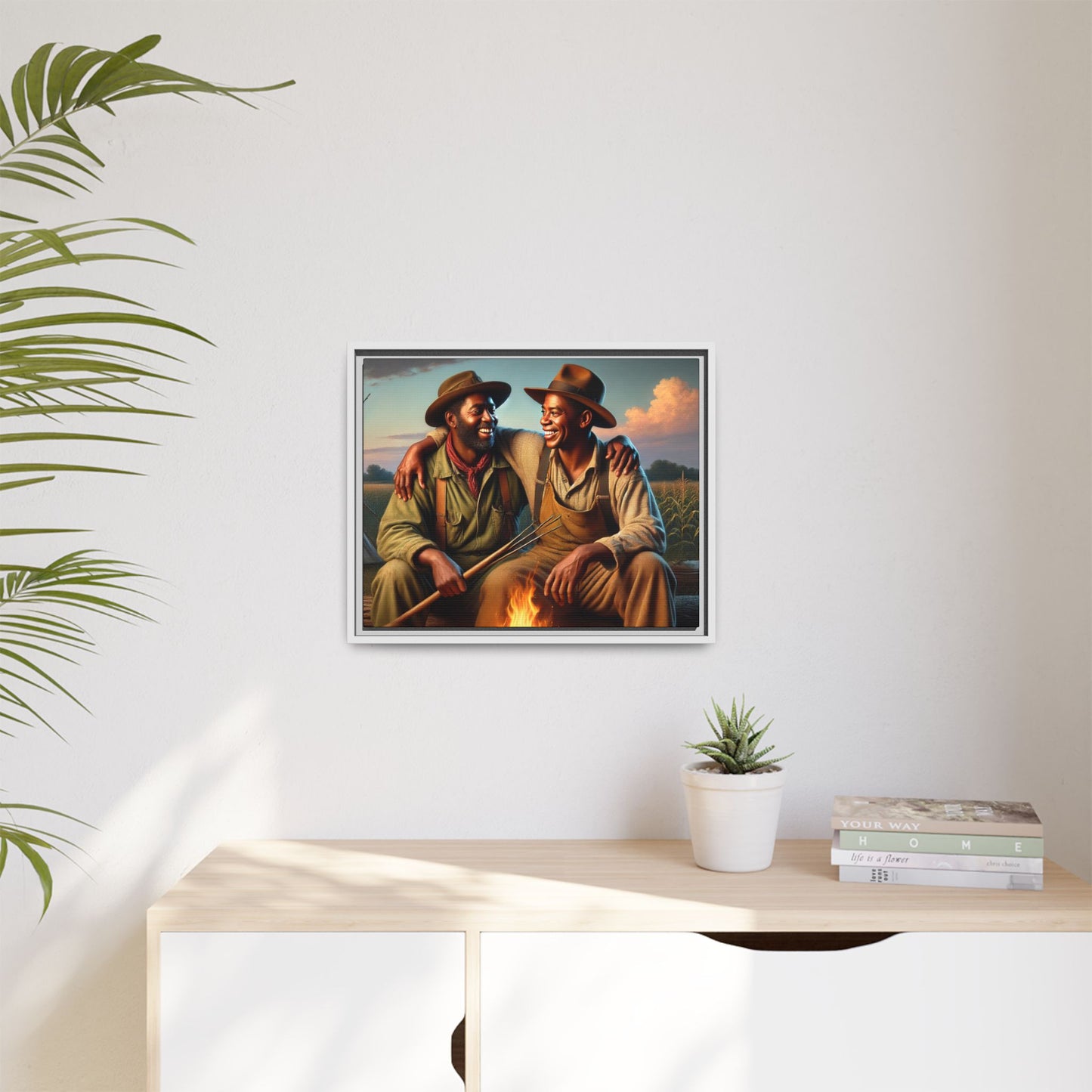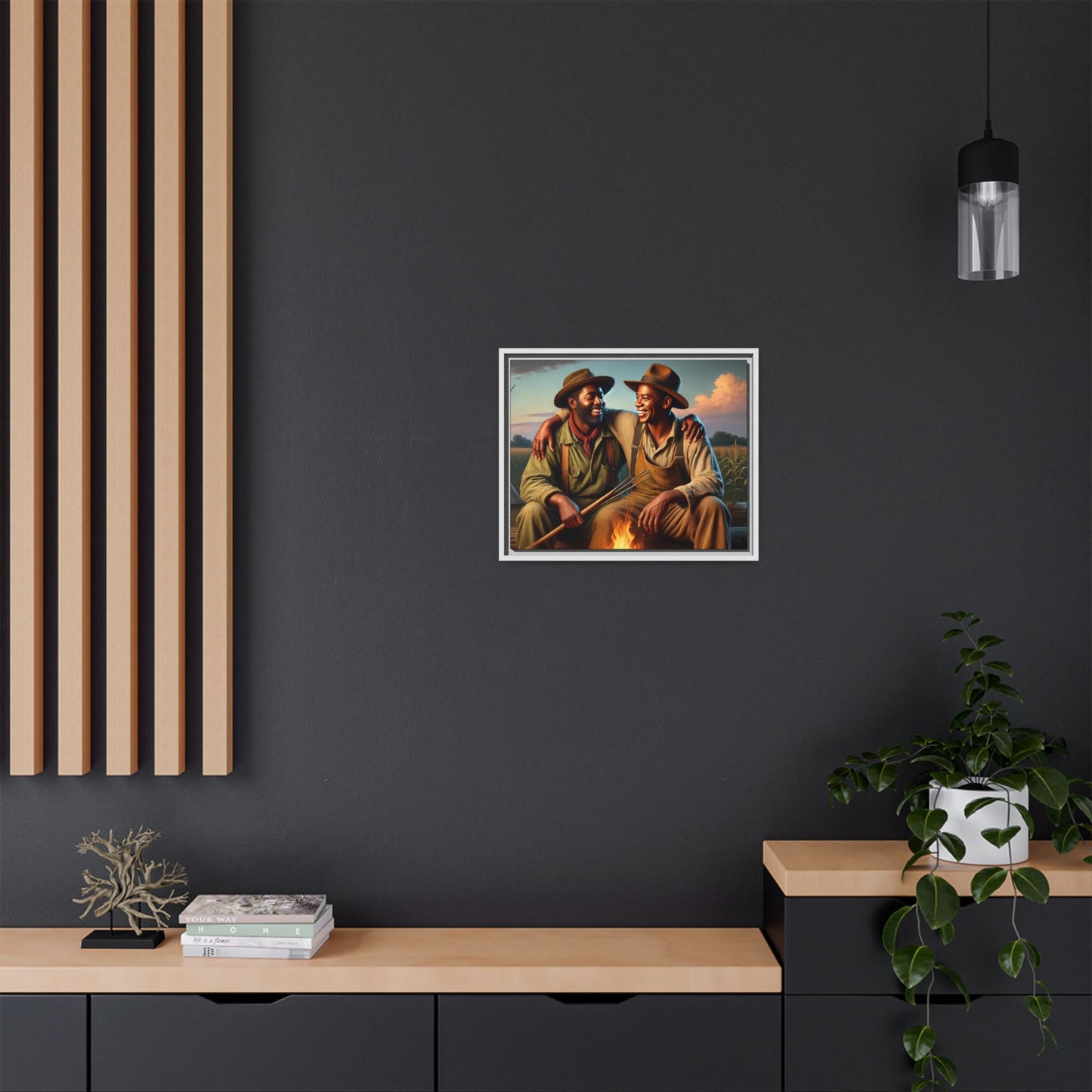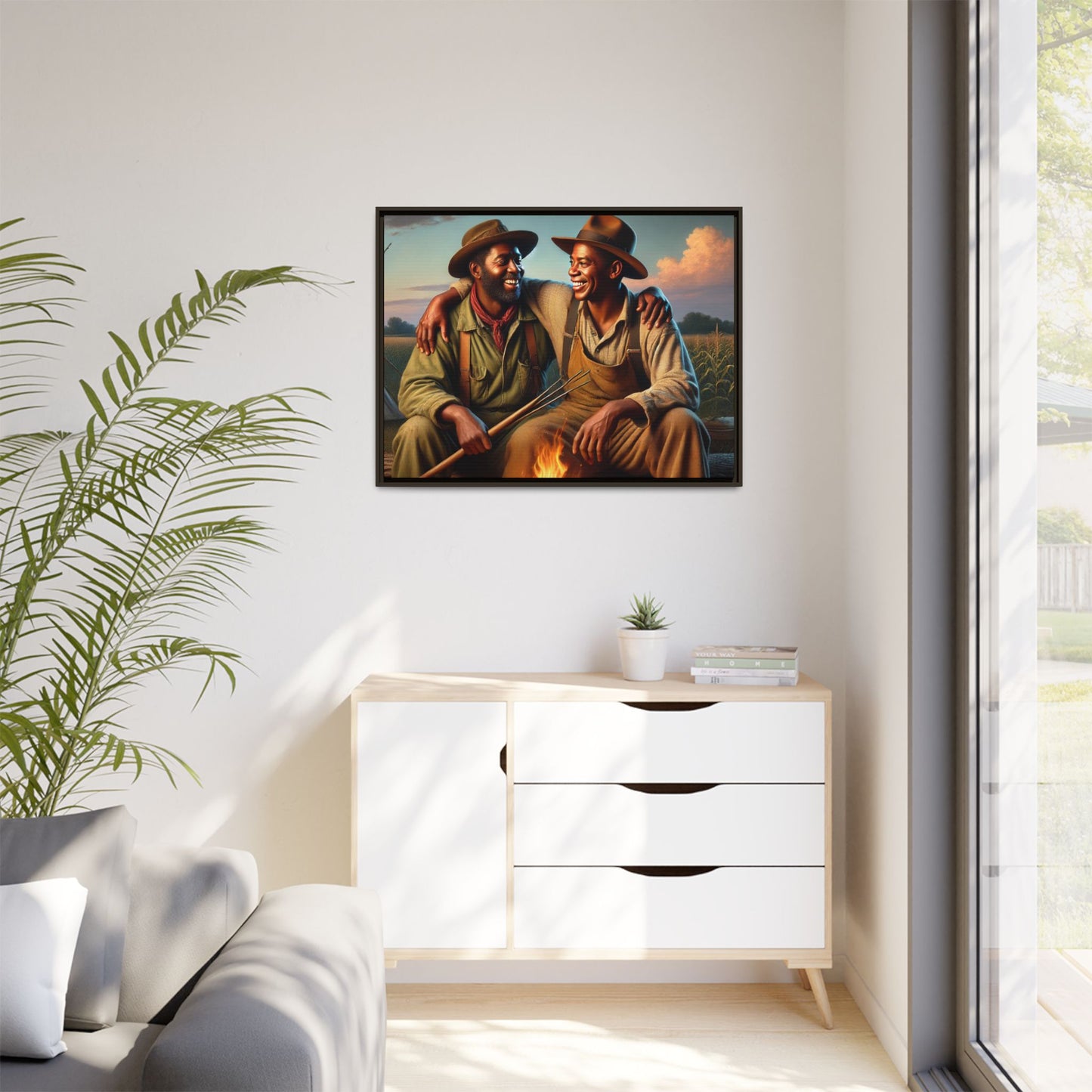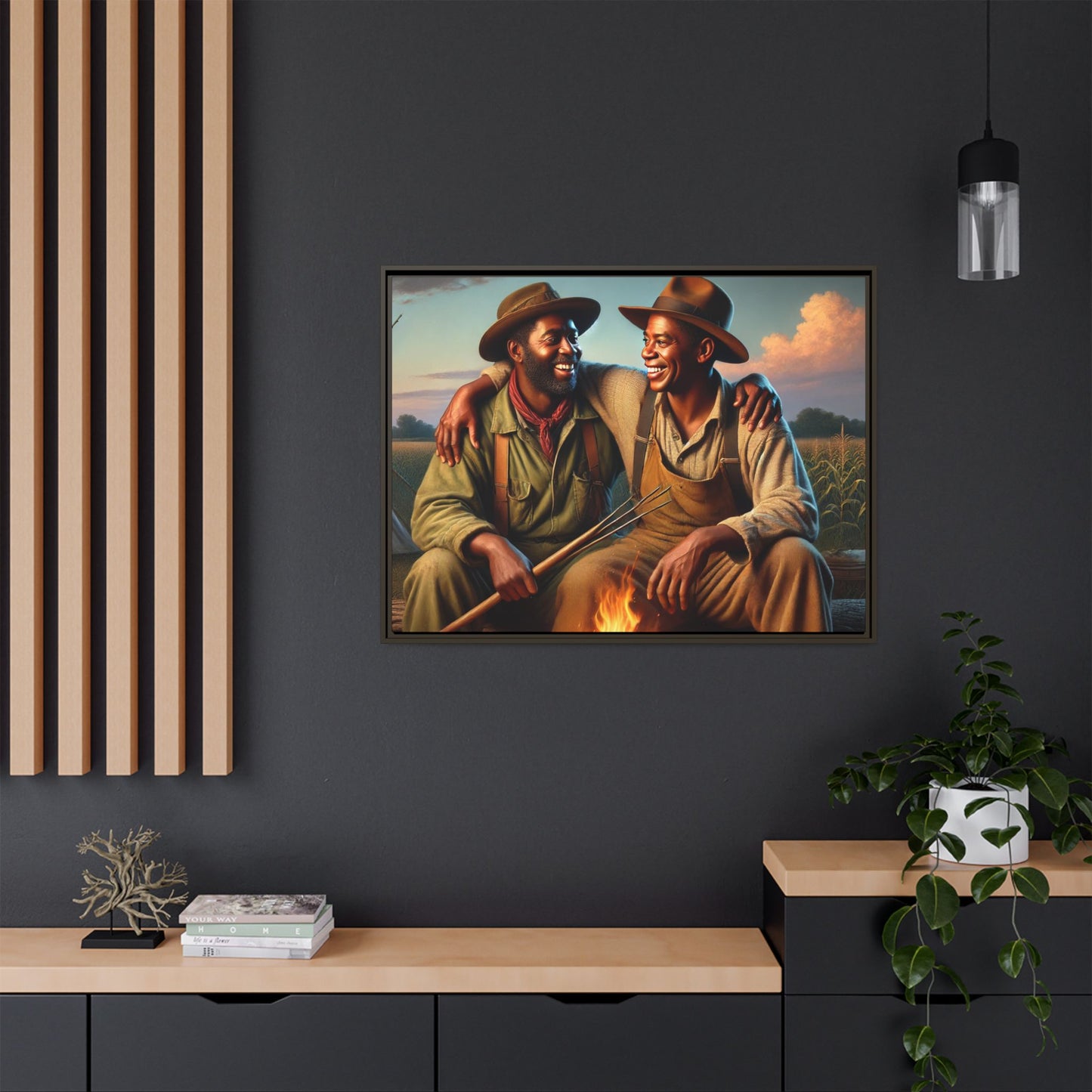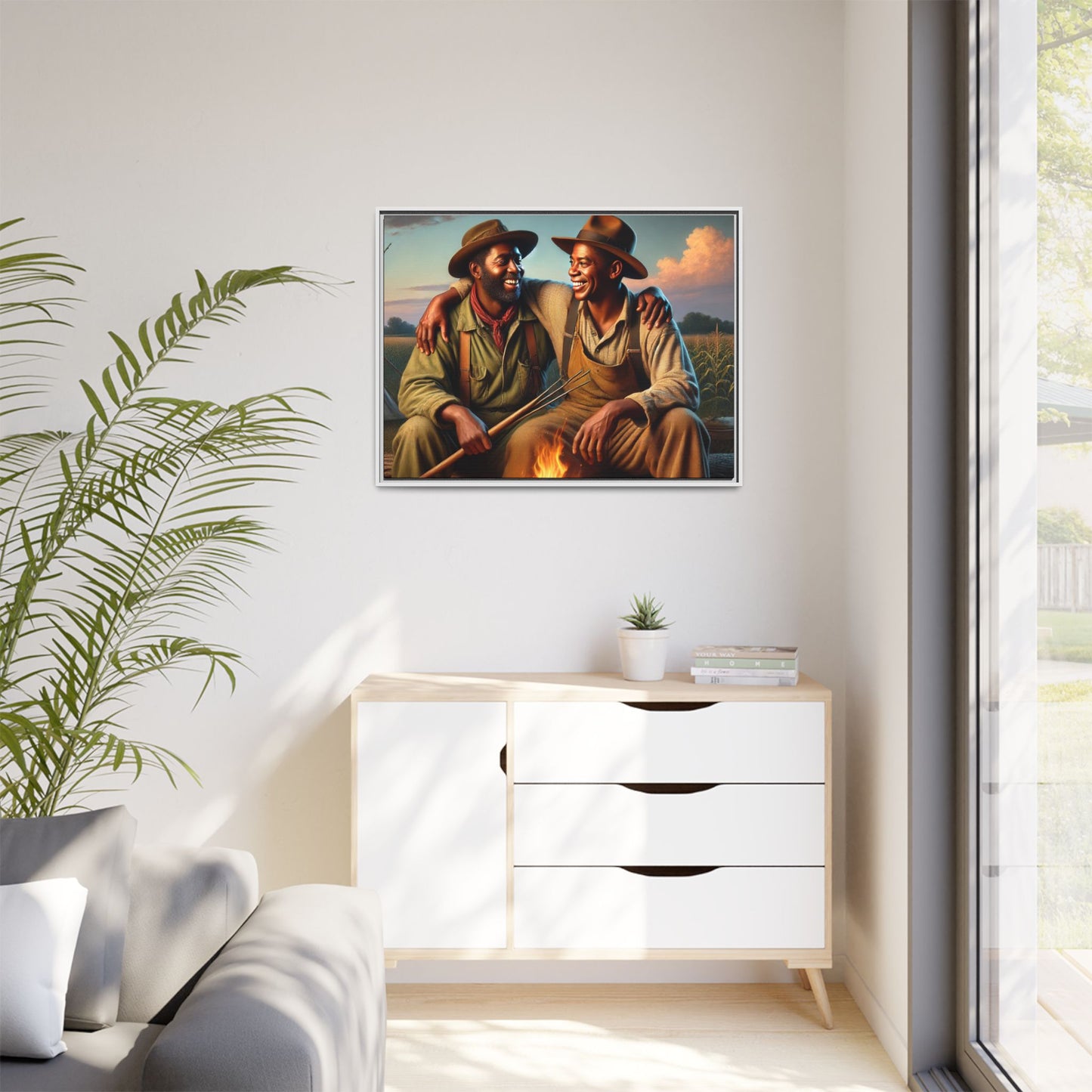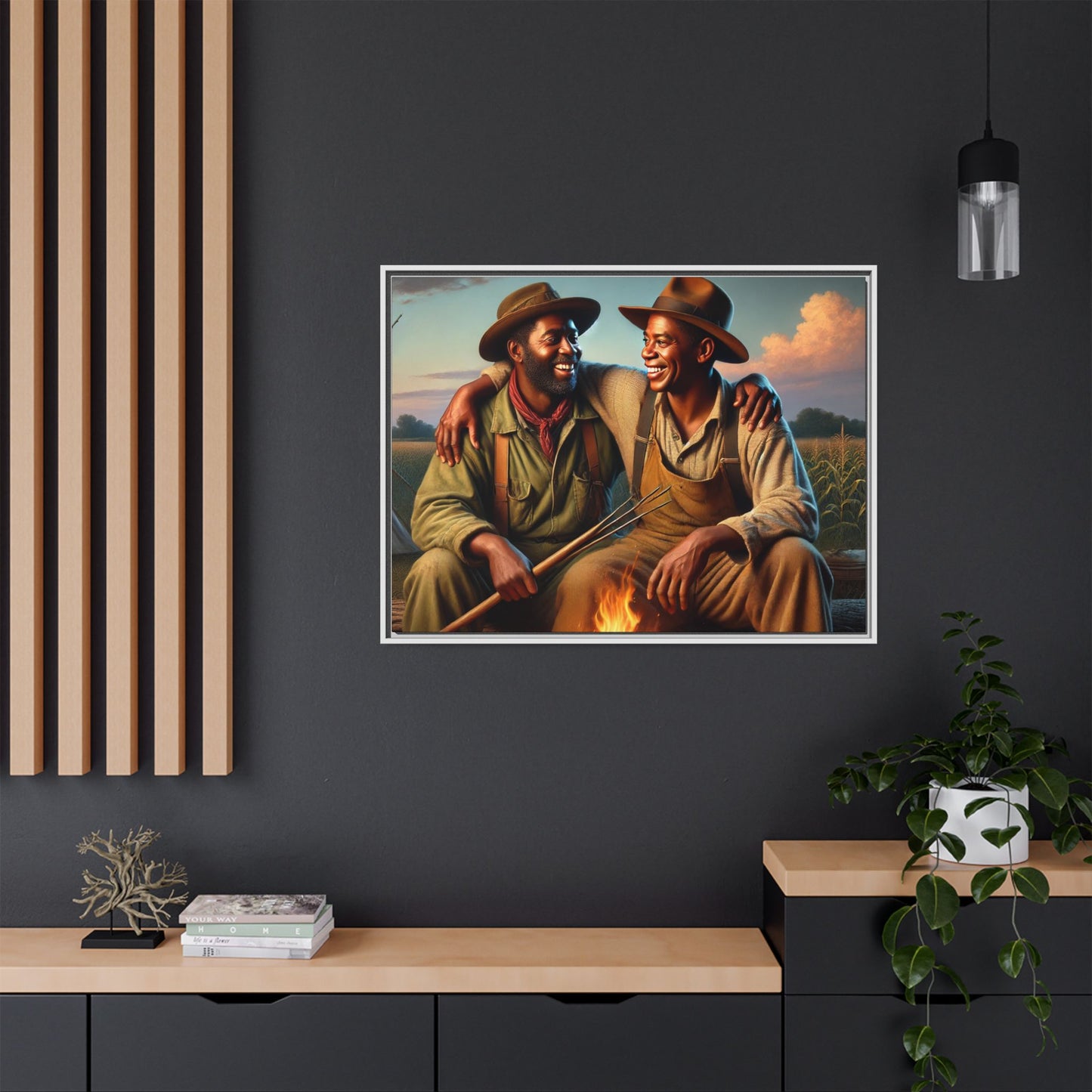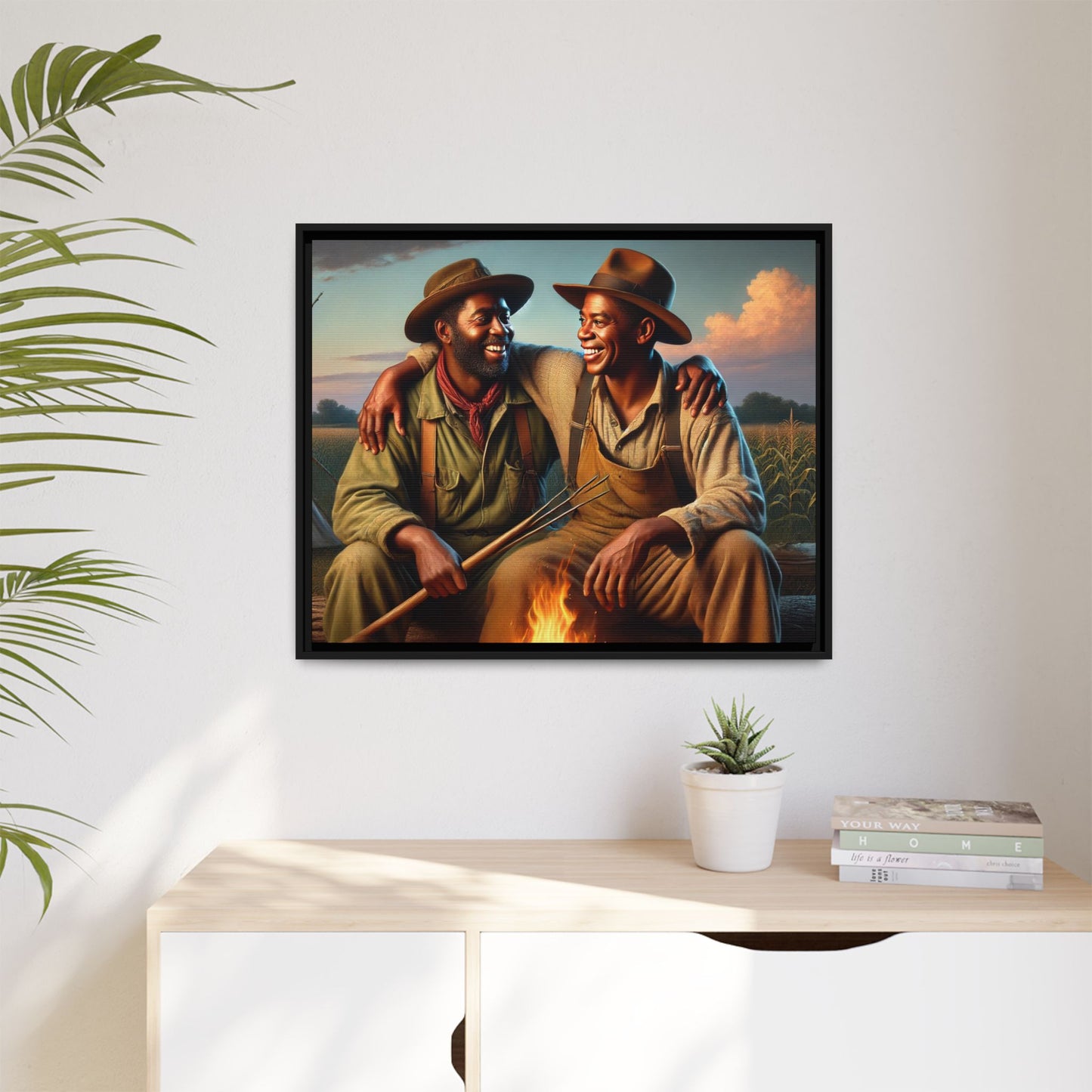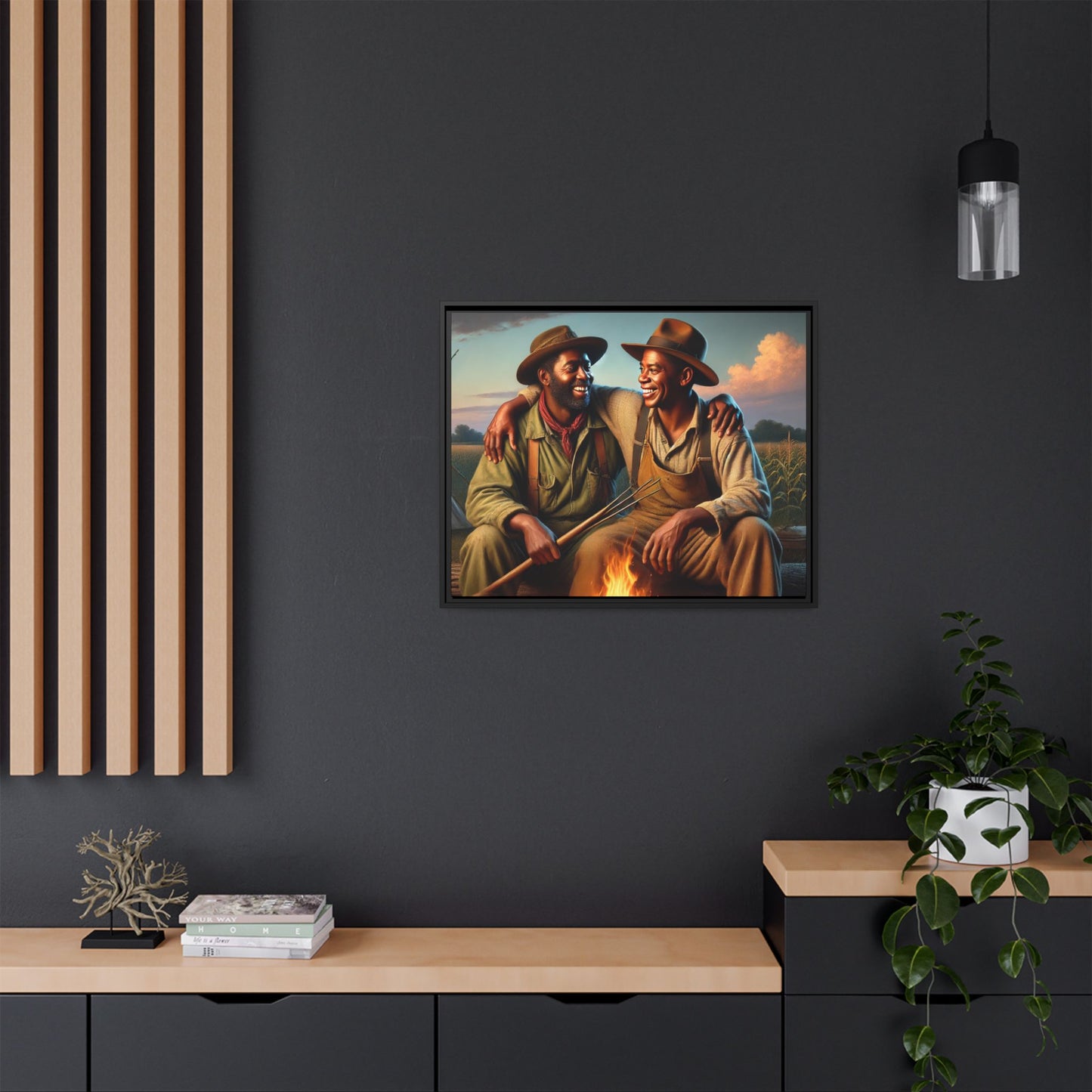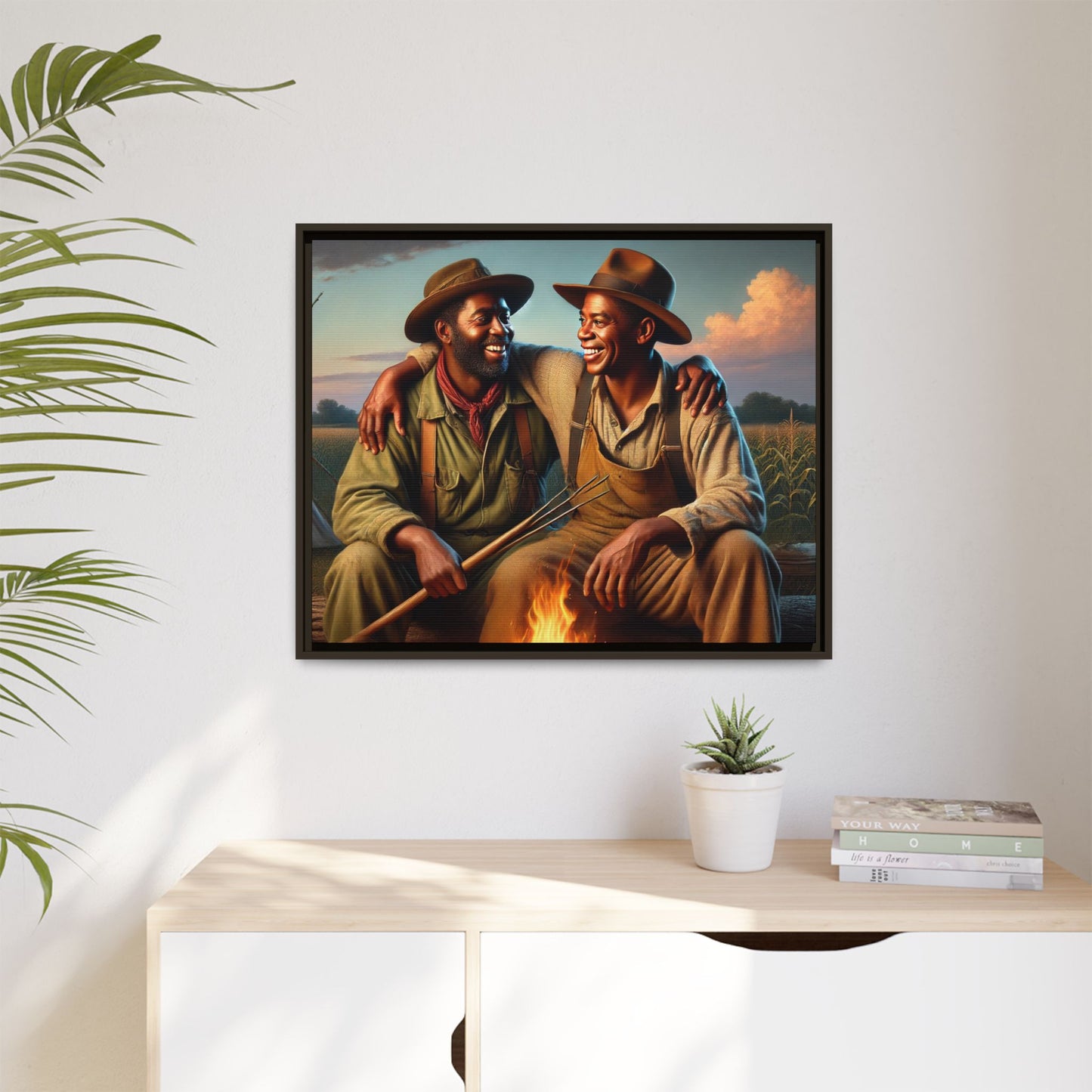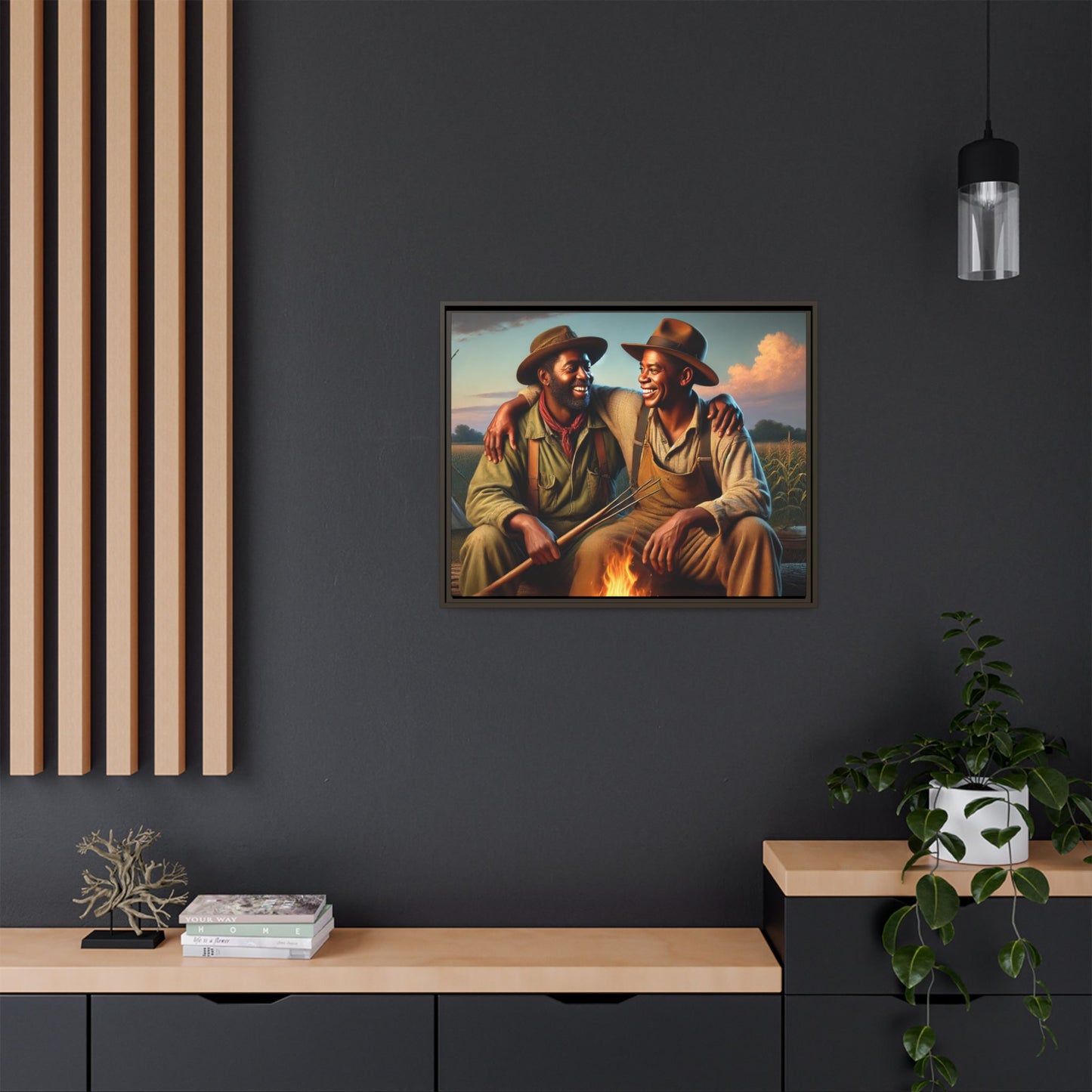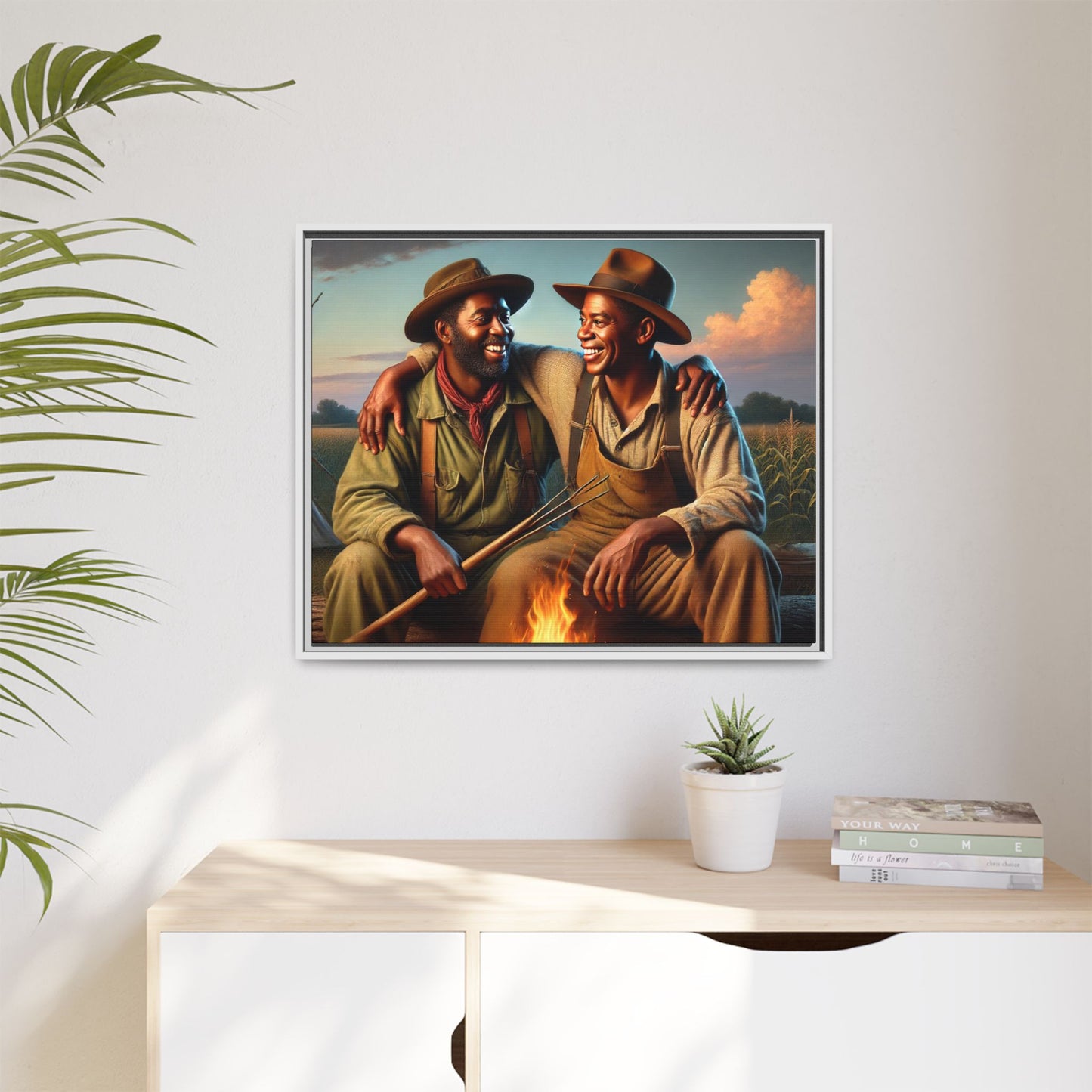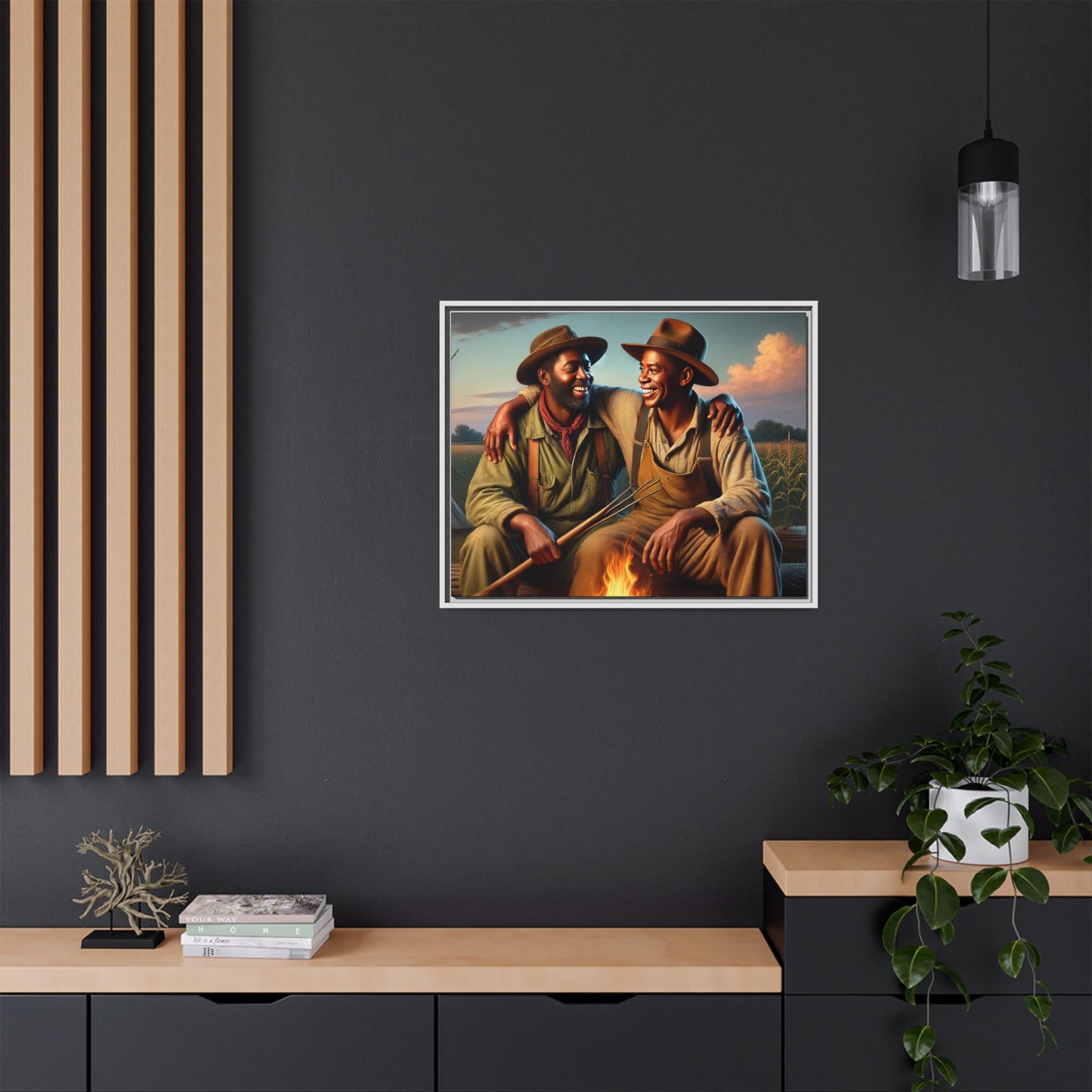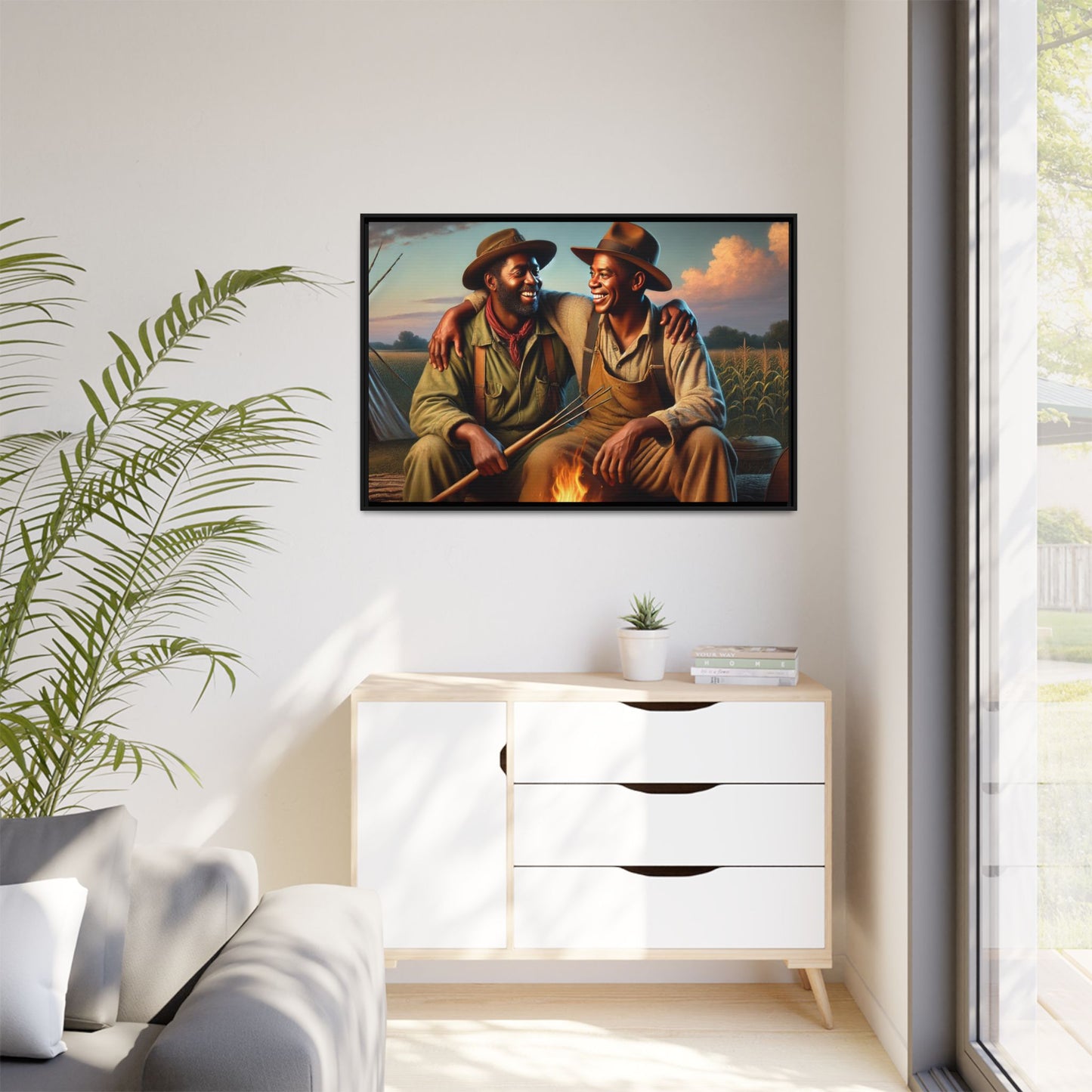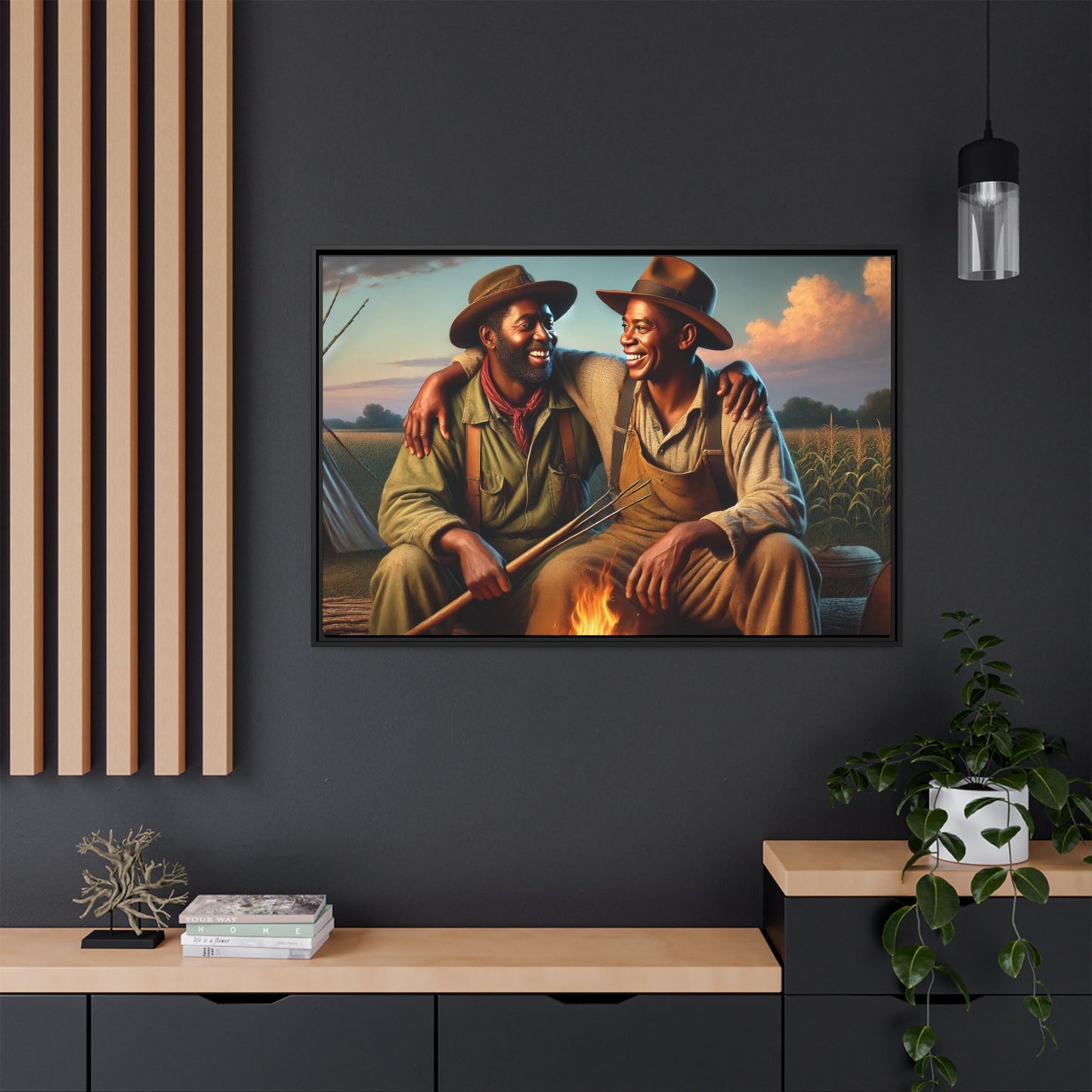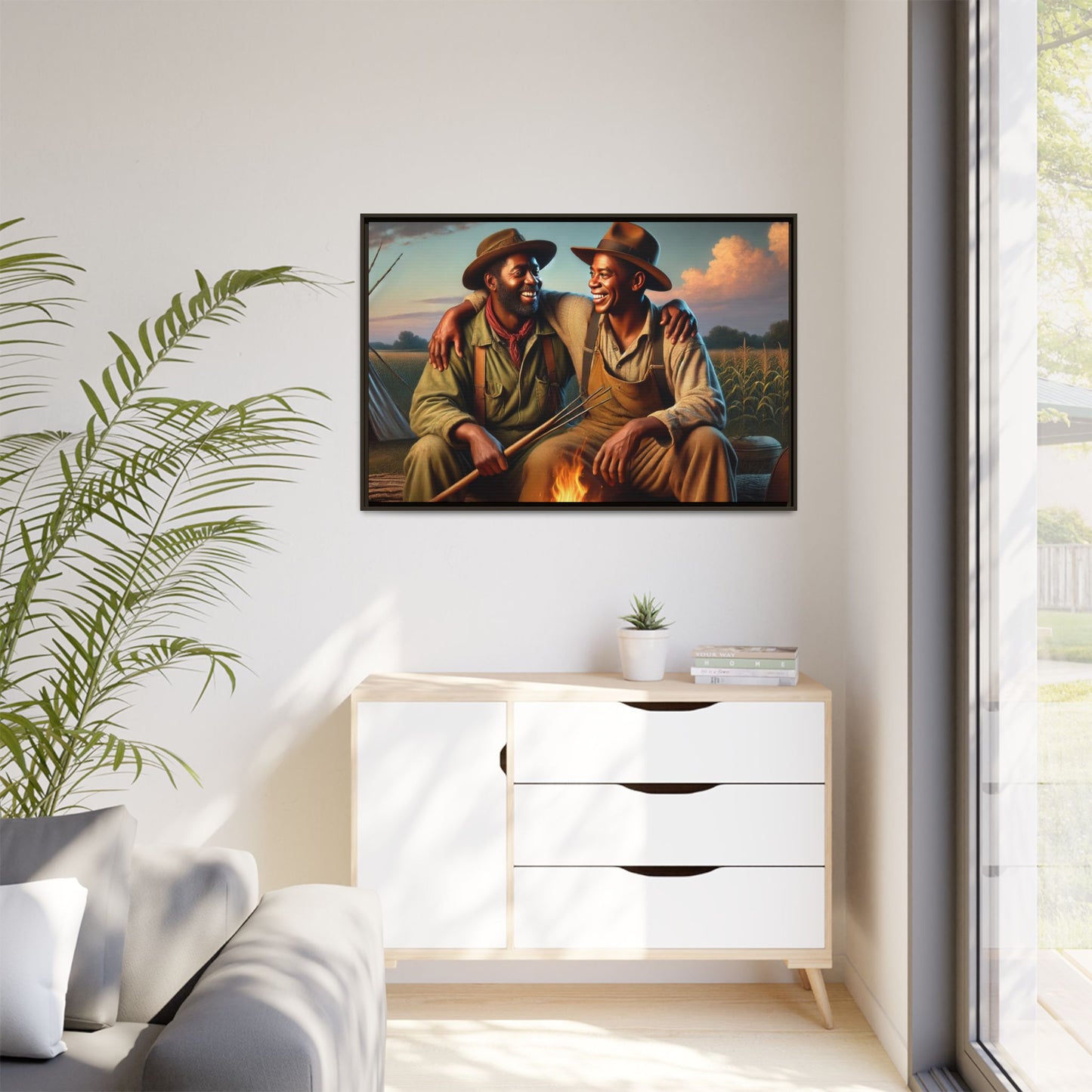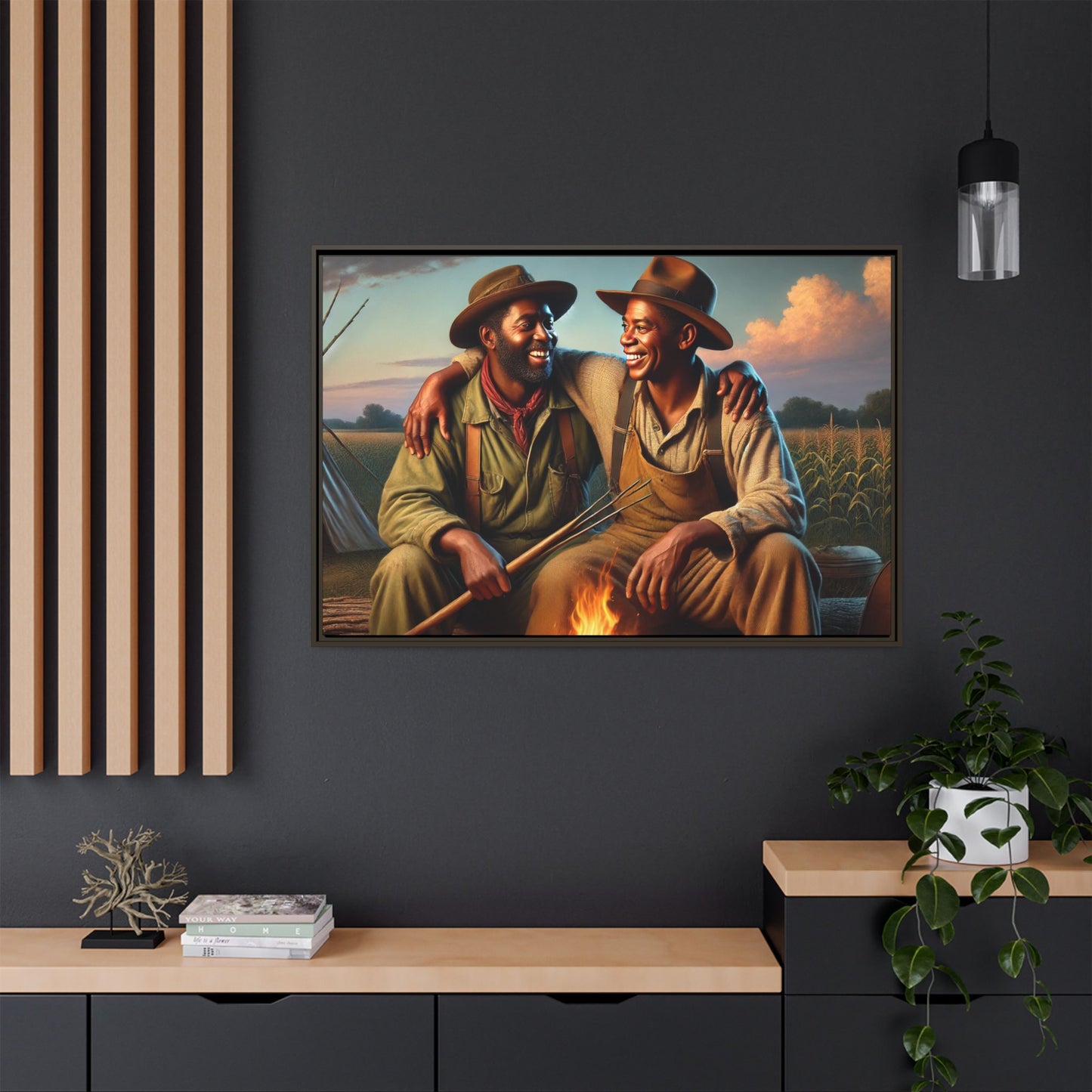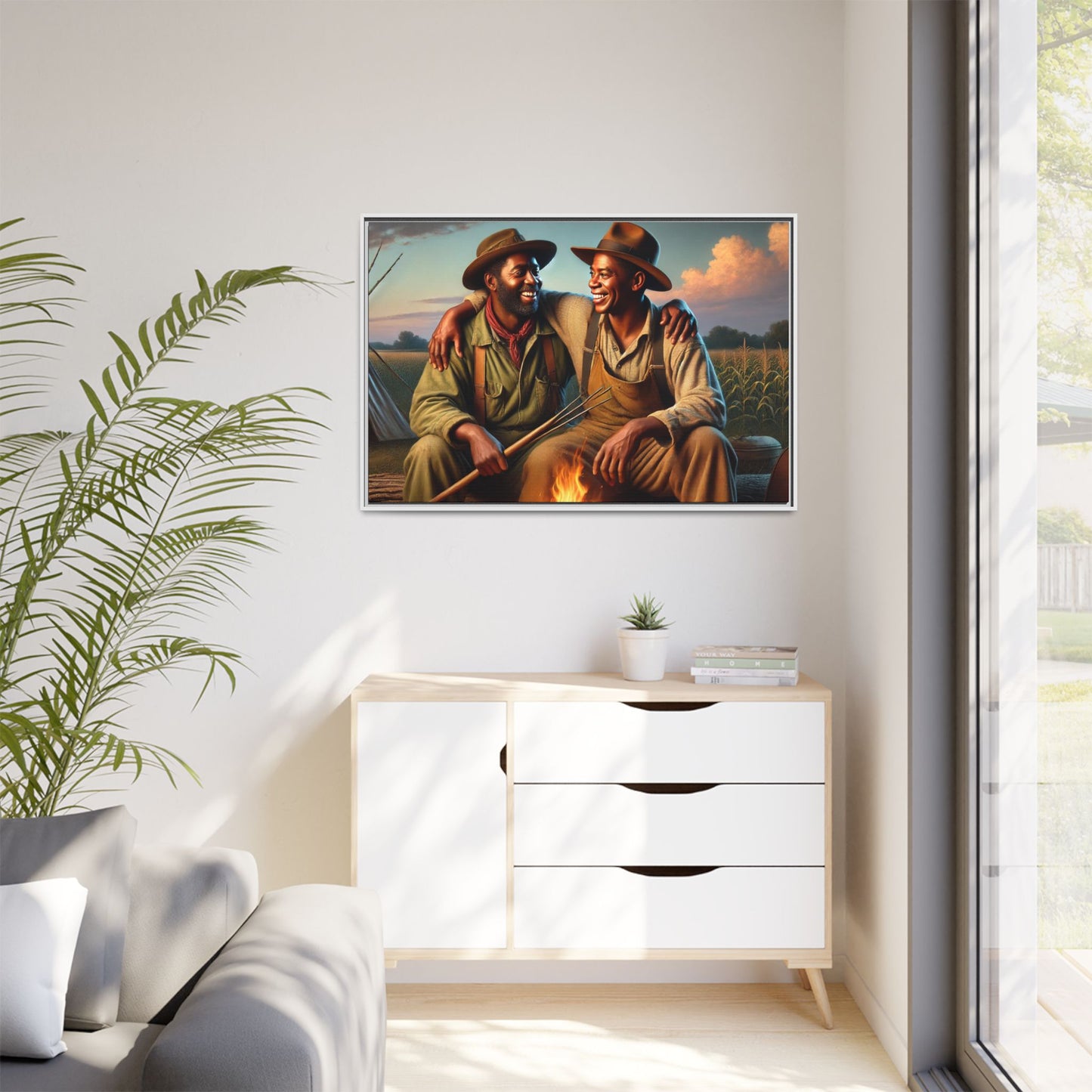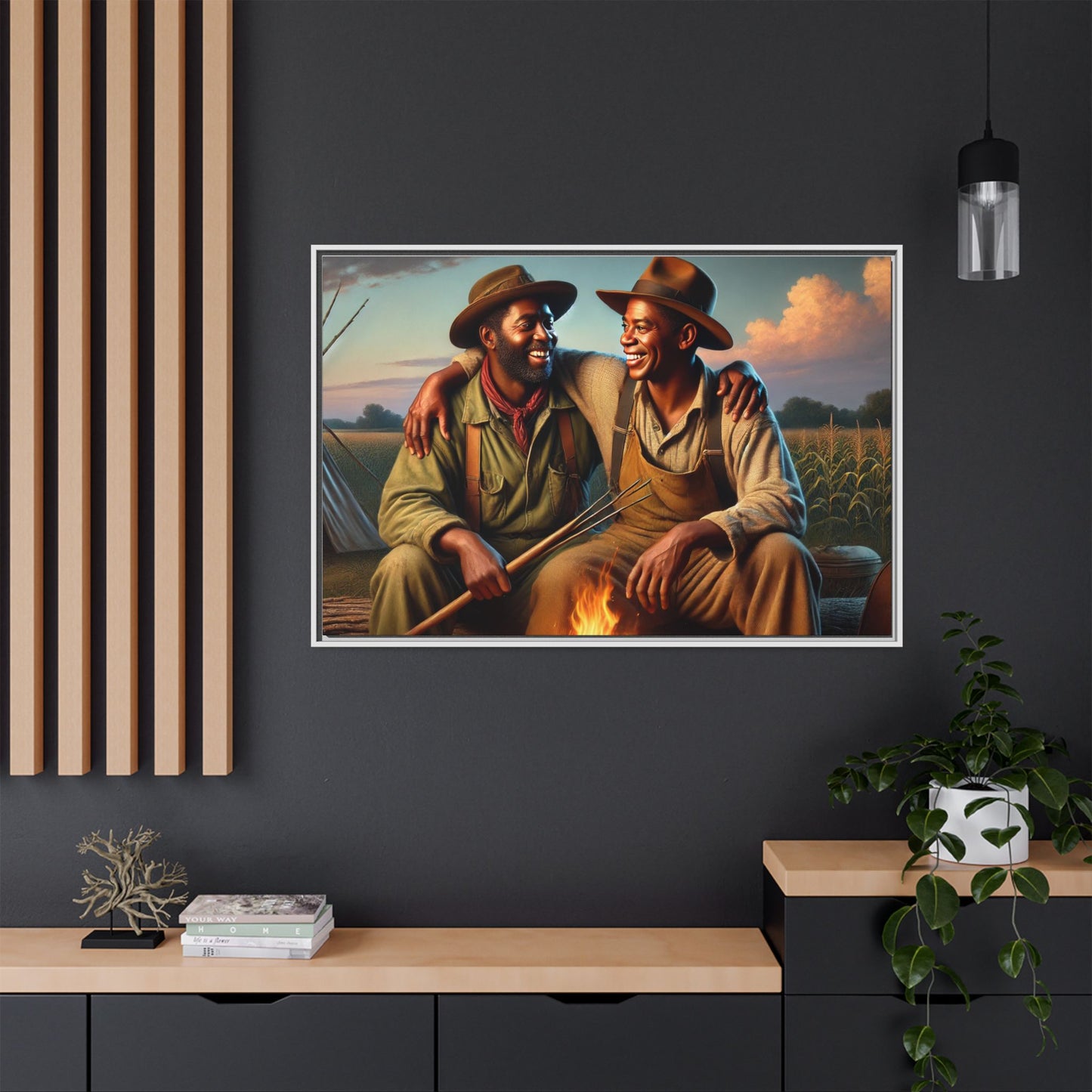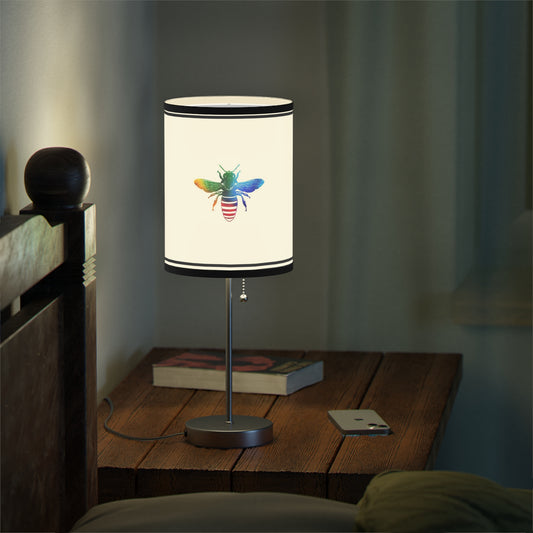This artwork captures an older queer couple in a warm, joyful moment by a campfire, set against the backdrop of a rural Iowa landscape. Both men are dressed in rugged, vintage workwear—one in a hat and suspenders, the other with a bandana around his neck, evoking a classic Americana style. They sit close together, one with his arm around the other’s shoulder, sharing a genuine smile and laughter that radiates a deep connection and companionship.
The firelight casts a cozy glow on their faces, highlighting their expressions and the sense of ease between them. The vast Iowa fields and open sky in the background add to the scene’s timeless, rustic quality, evoking a life of shared memories and resilience. This image beautifully celebrates queer love within the context of rural life, offering a tender, intimate portrayal of two men finding joy and comfort in each other’s presence. The scene honors both their relationship and the quiet strength required to live authentically in a setting that feels both grounded and nostalgic.
This case study series examines the life and work of Midwestern artist Grant Wood. Known for his role in the Regionalist art movement, Wood’s paintings capture the spirit of rural American life with a distinct style inspired by Gothic and Renaissance art. His most iconic works, like American Gothic, reflect a meticulous attention to detail and a flat, decorative approach, showcasing earthy, muted colors—greens, browns, and blues—that echo the landscapes and life of the Midwest. These colors, punctuated occasionally with bright reds or yellows, create a grounded yet nostalgic atmosphere, resonating with the enduring American spirit.
This study is also a tribute to Wood as a queer artist—a truth that he may have kept concealed due to the social and cultural norms of his time. While the term gay didn’t gain mainstream use until the 1960s, queer has since become an inclusive, positive label within the LGBTQ+ community. It embraces a spectrum of identities that defy traditional definitions of sexuality and gender, reflecting the diversity and resilience of those who navigate life outside conventional norms. Reclaiming the term allows us to acknowledge the full breadth of Wood’s identity as part of his legacy.
In exploring Wood’s work, this series imagines what his art might have looked like if he had the freedom to express his authentic self openly, without societal restrictions. It also raises questions about the impact of cultural bias on art preservation—wondering if some pieces that might have reflected same-sex relationships were perhaps destroyed or never created due to the fear of judgment. These case studies honor Grant Wood’s authenticity, celebrating his contributions as a trailblazer in American art and recognizing the need for broader representation in galleries and museums today.
Please note: Slight size variations of +/- 1/8" (3.2mm) may occur due to the production process.
- Cotton and polyester canvas composite with a special proprietary coating
- Sustainably sourced pinewood frame
- Available in multiple sizes and frame colors
- Horizontal, vertical, and square options available
- Sawtooth hanging hardware included.
